
MARCH 2024
28 HIGH SCHOOL T-BIRDER
34 WEATHER WINDOWS
42 PNW HERO: CHRIS WOLFE


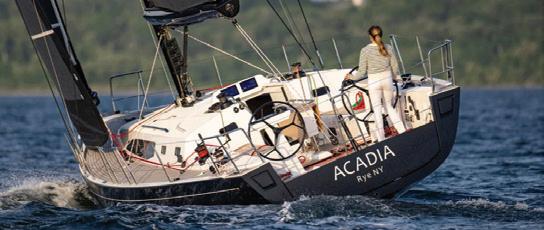
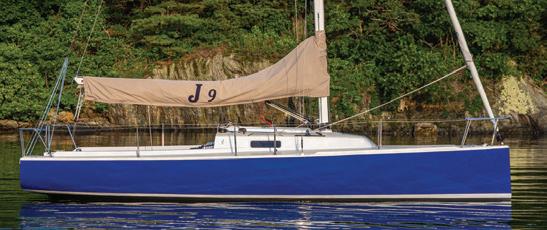
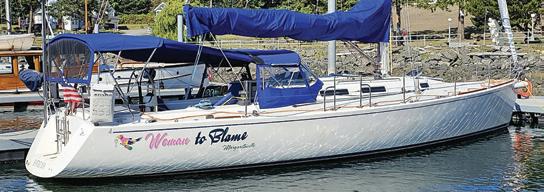
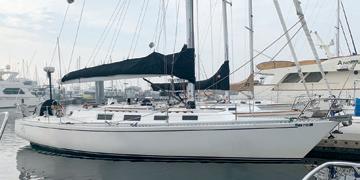

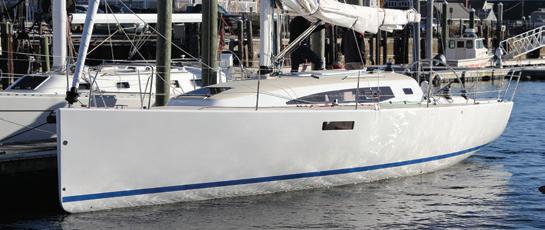
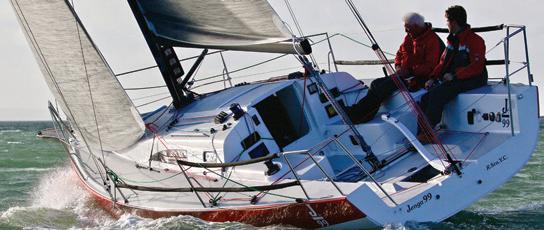
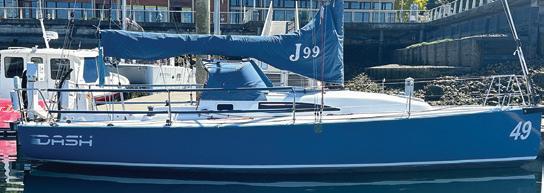
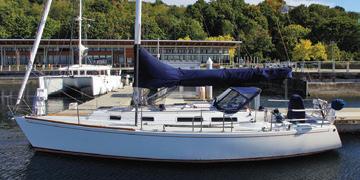

1996 43’ J/130 • $159,000 This has to be the nicest and best equipped J/130 ever. Newer sails, electronics, sat TVs, dodger and much more. She is a must see and at our dock. 2020 32’ J/99 • $279,000 Dash is offshore ready for the next Hawaii race, Newport Bermuda, or a Northwest cruise. She is equipped for double handed or fully crewed ocean racing. Just bring provisions and a first aid kit and you’re ready to go. J/45 • OFFSHORE PERFOMANCE CRUISING J/112e • Family Cruising in Comfort & Style J/Sport - J/70 J/80 J/88 J/9 J/99 J/111 J/121 J/Elegant - J/112e J/122e J/45 MJM Series Yachts MJM 3, MJM 35, MJM 4, MJM 42 Shilshole Marina Sales Office • www.sailnorthwest.com • 206-286-1004 Brokerage Boats • We Are Selling Boats and Need Listings NEW J/BOATS • 2024 Delivery Slots Available J/99 • Fast, Fun, Offshore Speedster J/9 • Hull #52 on order for Spring Delivery 2 J/40s 1986 & 1987 from • $54,000 Comfort & Speed For Couples That Cruise Across Oceans. The J/40 was the first bluewater offshore cruising boat built by J/Boats. 1999 36’ C&C 110 • $99,000 Cruise ready 3 cabin performance cruiser. Easy to sail and a comfortable cruiser with Webasto Heater and a Macerator head she is ready to go. 1992 J/35c • $79,000 Updated popular cruising J/Boat. Newer cushions, main cover, cockpit cushions, dodger and more. She is available for lease back in the Seattle Sailing Club. Sailnorthwest.com • 206-286-1004 • sales@sailnorthwest.com
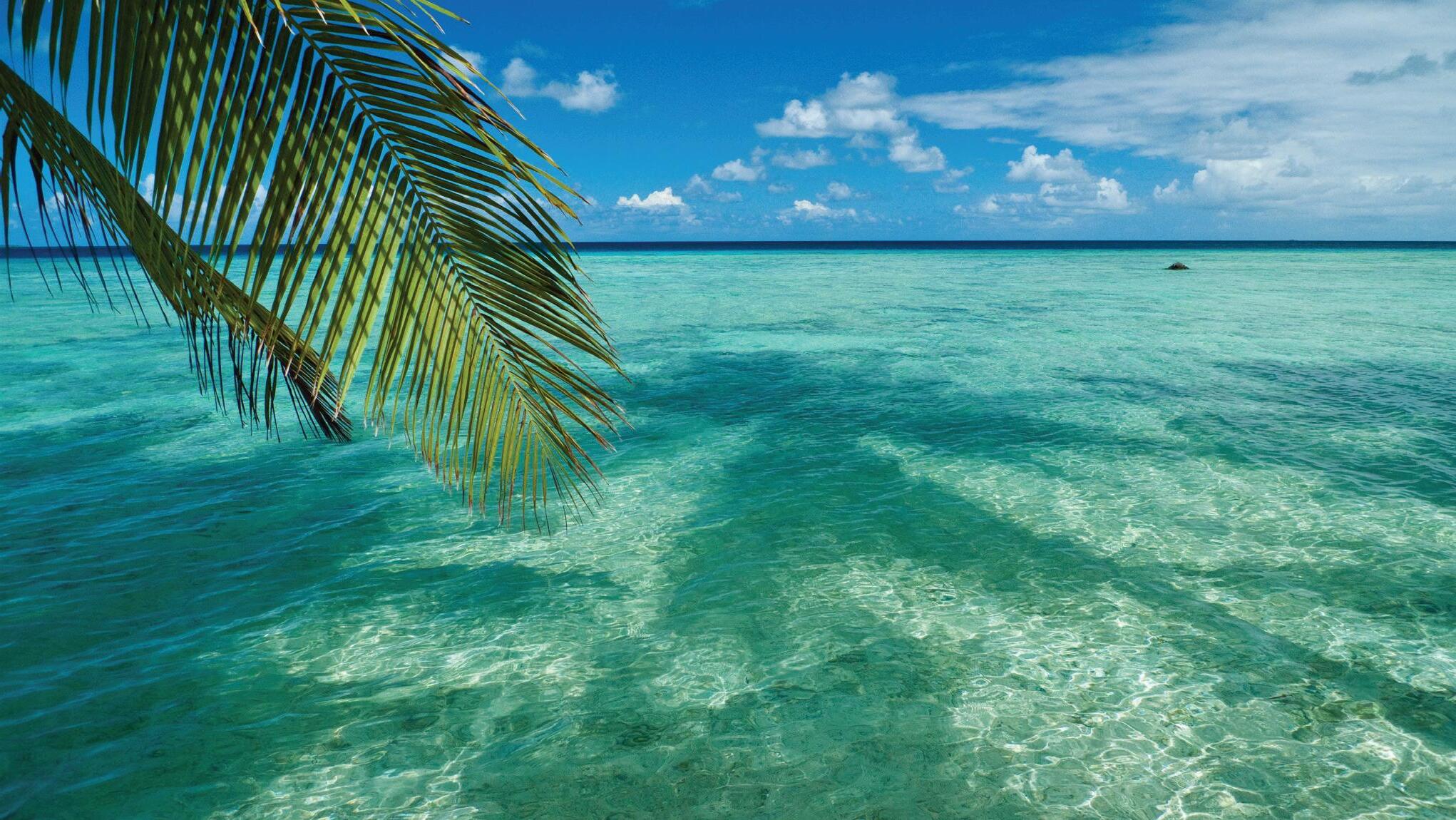
CRUISE ‘N LEARN IN LA PAZ, MEXICO
Join our 5-day, 4-night ASA 103 & 104 course for an immersive sailing experience. Bring the whole family and enjoy a private boat at a discounted rate!
Pack your bathing suit, bring your love of sailing, and leave with the skills to charter your own sailboat.

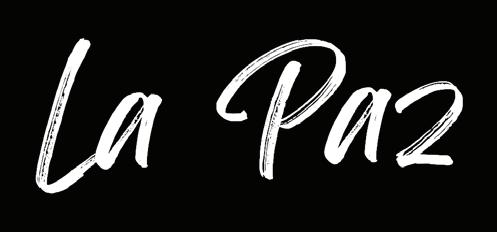

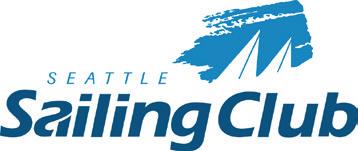
206-782-5100
www.seattlesailing.com
CALL TO BOOK TODAY!
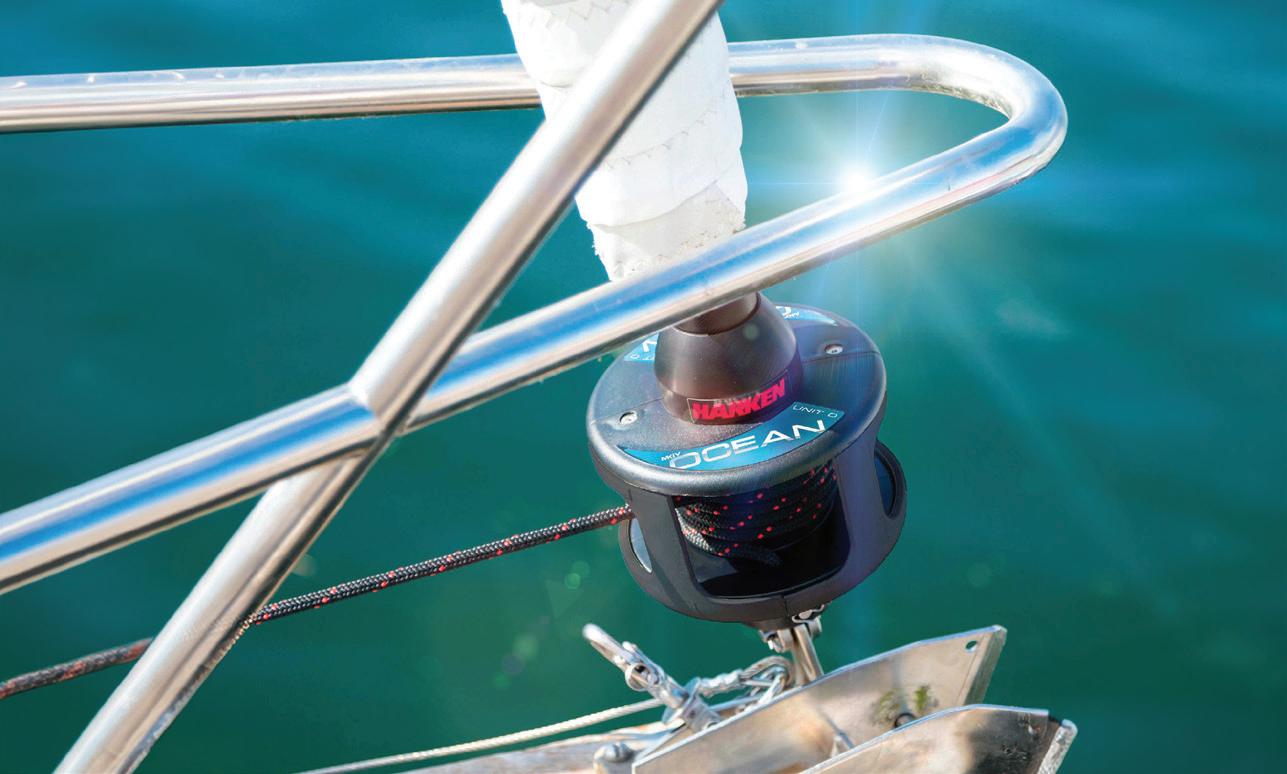
MKIV Furlers are one of the most popular products in the Harken product line for racing. Harken now offers MKIV OCEAN built with MKIV quality but configured for the cruising sailor. For the occasional racer, the MKIV line is engineered with ease, durability, and winning in mind.
MKIV Furlers are one of the most popular products in the Harken product line for racing. Harken now offers MKIV OCEAN built with MKIV quality but configured for the cruising sailor. For the occasional racer, the MKIV line is engineered with ease, durability, and winning in mind.
48º NORTH 4 MARCH 2024
the complete line of Harken
Call us 800.426.6930 1900 N. Northlake Way, Seattle FisheriesSupply.com
For
sailing hardware please visit fisheriessupply.com/harken
MKIV & MKIV Ocean Jib Reefing & Furling Now through March 17 Furling Sale
the complete line of Harken sailing hardware please visit
Call us 800.426.6930 1900 N. Northlake Way, Seattle FisheriesSupply.com
For
fisheriessupply.com/harken
MKIV & MKIV Ocean Jib Reefing & Furling Now through March 17 Furling Sale
CONTENTS
FEATURES
28 The Making of a Thunderbirder
A high school sailor experiences the Port Townsend T-bird fleet. By
Ocean Smith
32 48° North Boat Test: Allures 45.9
Getting out for a sail on an innovative aluminum cruising boat. By
Joe Cline
34 Weather Dependent
Useful lessons about weather windows forged in the PNW. By
Andy Cross
38 The Dreaded Lopez Channel
Navigating the shallow entrance to Lopez Island’s Fisherman Bay. By
Jennifer Dalton
42 PNW Hero Interview: Christina Wolfe
A sit-down with the new Rolex Yachtswoman of the Year.
By Joe Cline
COLUMNS
20 Casting Off: Go with the Flow for Better Sailing
Heading out with dockmates provides learning opportunities. By
David Casey
24 Shifting Gears: Local Knowledge
A holiday excursion to a familiar area brings a few surprises. By
Dennis Bottemiller
RACING
46 Toliva Shoal 2024
A shortened course for this year’s South Sound classic.

48
Better Than Expected, as Always: Winter Shaw
The first race of the North Sound season was predictably great. ON
48º NORTH 5 MARCH 2024
THE COVER: Do
we
have to head in? An image from the bow of the Allures 45.9, a go-anywhere kind of cruising boat, during an exquisite Febraury sail test on Puget Sound (page 32). Photo by Joe Cline.
MARCH 2024
Background photo by Sean Trew.
Editor
48° NORTH IS ASKING FOR YOUR SUPPORT
Since 48° North became a nonprofit publication by joining the Northwest Maritime Center (NWMC) in 2018, the magazine and website have improved and expanded, and we hope you are appreciating this new era. In these five years, we haven’t asked our audience for donations, but we are now asking for the support of our loyal readers.
First, a little history. When the leadership teams at 48° North and NWMC considered joining forces, legacy was central to the discussion. We were committed to carrying on 48° North’s four-decade tradition as a generous supporter of and collaborator with the communities of people passionate about sailing, cruising, and other waterborne activities around the Pacific Northwest; services offered for free thanks to the partnership of advertisers who put their trust in this magazine and those who enjoy it each month. Recognizing evolutions of modern media, we analyzed an array of business models to help sustain and strengthen 48° North’s services to our existing communities, while hopefully broadening those communities and better serving NWMC’s mission: to engage and educate people of all generations in traditional and contemporary maritime life, in a spirit of adventure and discovery. We contemplated a subscription model, but resolved that the approach that best honored the goals of the publication and organization was to keep the education, information, inspiration, entertainment, and community connection found in the pages of every 48° North available to anyone for free, in print and online. Moreover, we unanimously hypothesized (hoped!) that many readers who love 48° North might feel better about making a charitable gift than paying for issues of the magazine.
It is with these deeply held beliefs front-of-mind that we ask today. You get everything 48° North does for free; and if you value our work, and you’re able to, please consider making a tax-deductible donation.
Whether you pick up a magazine in print, visit 48north.com to check out the daily posts or the SARC, or subscribe to our weekly emails highlighting fresh stories, please give. If you believe in this community of PNW boat folk and the ways the 48° North contributes to the people, businesses, organizations, and initiatives that facilitate a rich variety of on-water pursuits in the Pacific Northwest, we hope you’ll support us. And if you recognize that 48° North is part of a unique 501(c)(3) nonprofit ecosystem, and that success for our publication helps fuel far-reaching strategies serving the common good—addressing maritime workforce shortages and tirelessly expanding educational opportunities; forging and reinforcing rising-tide connections on the water and ashore; and inviting all people to experience the joy, adventure, and wonder of the best teacher we know, the sea—we encourage you to show your support with a donation.
If everyone who reads 48° North for free gave even a few dollars, it would stoke these fires of learning and fun, of transformative maritime experiences, and of rewards and relationships that last a lifetime. If some were able to give $100 or $1,000 or more, that would be even more impactful. Your support provides a beautiful ‘weather window’ for the good ship 48° North to continue its passage towards even brighter horizons.
With gratitude,
Joe Cline
Managing Editor, 48° North

www.48north.com/donate
Or send checks to:
48° North c/o NWMC
431 Water Steet
Port Townsend, WA 98368
Volume XLIII, Number 8, March 2024
(206) 789-7350
info@48north.com | www.48north.com
Publisher Northwest Maritime Center
Managing Editor Joe Cline joe@48north.com
Editor Andy Cross andy@48north.com
Designer Rainier Powers rainier@48north.com
Advertising Sales Kachele Yelaca kachele@48north.com
Classifieds classads48@48north.com
Photographer Jan Anderson
48° North is published as a project of the Northwest Maritime Center in Port Townsend, WA – a 501(c)3 non-profit organization whose mission is to engage and educate people of all generations in traditional and contemporary maritime life, in a spirit of adventure and discovery.
Northwest Maritime Center: 431 Water St, Port Townsend, WA 98368 (360) 385-3628
48° North encourages letters, photographs, manuscripts, burgees, and bribes. Emailed manuscripts and high quality digital images are best!
We are not responsible for unsolicited materials. Articles express the author’s thoughts and may not reflect the opinions of the magazine. Reprinting in whole or part is expressly forbidden except by permission from the editor.
SUBSCRIPTION OPTIONS FOR 2024! $39/Year For The Magazine $75/Year For Premium (perks!)
www.48north.com/subscribe for details.
Prices vary for international or first class.
Proud members:
48º NORTH 6 MARCH 2024
6









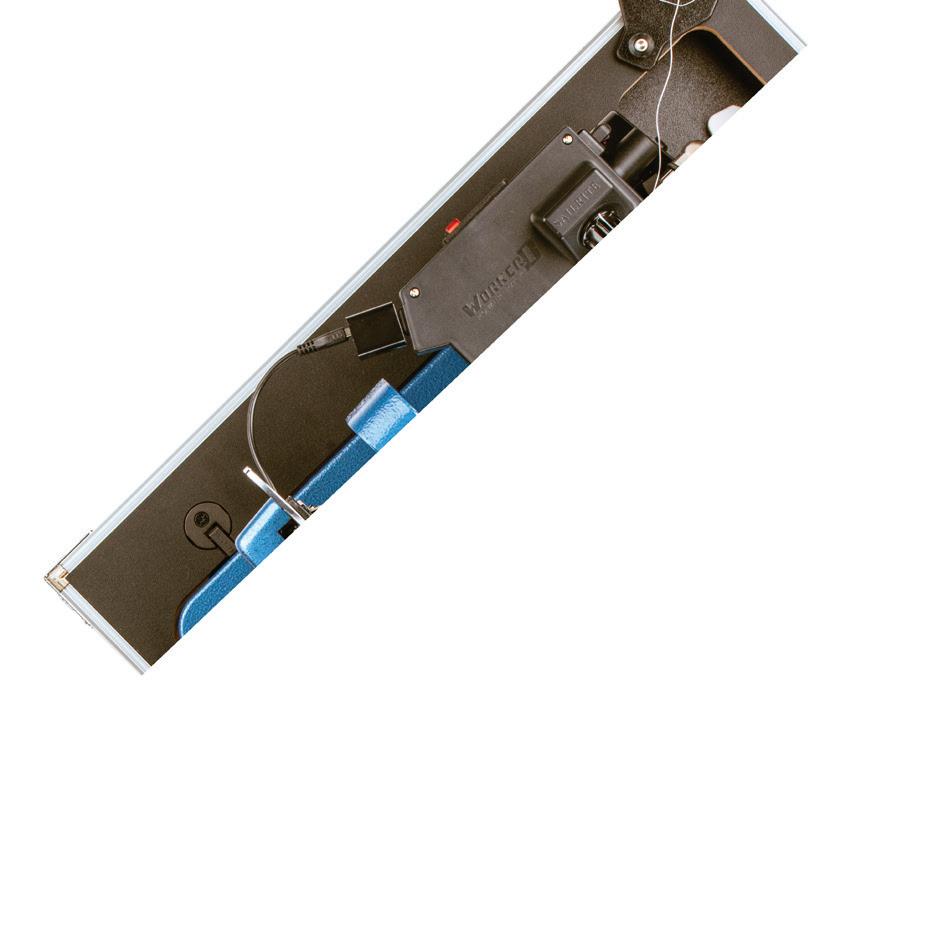


✓ Items not available anywhere else. ✓ One-stop resource with deep inventory. ✓ Easy-to-reach technical sales staff. ✓ Extensive free how-to content. ✓ Competitive pricing. ✓ Quick shipping. ✓ FREE shipping over $199*. Everything you need. All in one place. ©2023 Sailrite Enterprises, Inc. *No promo code necessary. Free FedEx ® Ground shipping to the 48 contiguous United States only (excludes AK, HI and PR). Order subtotal must be $199 or more before tax and shipping to receive offer. Offer not valid on prior purchases. Does not apply to trade accounts. Some exclusions apply. Equipping you to sew since 1969 | Visit us at Sailrite.com YOUR #1 DIY RESOURCE INDOOR/OUTDOOR VINYL INDOOR/OUTDOOR VINYL INDOOR/OUTDOOR VINYL

worry-free boating why get towing? Breakdowns are unpredictable but with an Unlimited Towing Membership, we promise to have your back should the unexpected happen. Sit back, relax and enjoy your time on the water worry-free. GET TOWING & GET GOING BoatUS.com/Towing Details of services provided can be found online at BoatUS.com/Agree. TowBoatU.S. is not a rescue service. In an emergency situation, you must contact the Coast Guard or a government agency immediately.
RACE! PARTY! PLAY!

June 24-28, 2024 l RaceWeekPNW.com
ORC, PHRF, One Design, Cruising Class
FUN!
SUNDAY JUNE 23
SkipperS Meeting & OPENING NIGHT PARTY Featuring aaron CrawFord
MONDAY JUNE 24
raCing Followed by JIMMY BUFFETT NIGHT Featuring dJ Mark JenkinS
TUESDAY JUNE 25
raCing Followed by REGGAE NIGHT Featuring dJ Mark JenkinS
WEDNESDAY JUNE 26
raCing Followed by PRETTY IN PINK NIGHT
Featuring gertrude’S HearSe
THURSDAY JUNE 27
raCing Followed by ABBA NIGHT Featuring tHe abbagrapHS
FRIDAY JUNE 28
raCing Followed by OVERALL AWARDS Featuring SJatr

"Race Week in Anacortes exceeded our expectations in every way."
Spencer Kunath, Navigator TP52 Glory

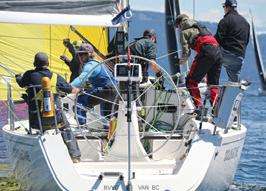














48º NORTH 9 MARCH 2024
REGISTRATION NOW OPEN!
Photos by Jan Anderson



Pacific Northwest Dealer Network
Emerald Marine
Anacortes, WA • 360-293-4161
www.emeraldmarine.com
Oregon Marine Industries
Portland, OR • 503-702-0123
info@betamarineoregon.com
Access Marine
Seattle, WA • 206-819-2439
info@betamarineengines.com
www.betamarineengines.com
Sea Marine
Port Townsend, WA • 360-385-4000
info@betamarinepnw.com
www.betamarinepnw.com
Deer Harbor Boatworks
Deer Harbor, WA • 844-792-2382
customersupport@betamarinenw.com
www.betamarinenw.com
Auxiliary Engine
6701 Seaview Ave NW, Seattle WA 98117 206-789-8496
auxiliaryeng@gmail.com
Remembering and Honoring Kelly O’Neil
Hello Joe and Andy,
I hope you are both well and ready for the upcoming sailing season. Thanks for all of your great work. I read the magazine each month. My sister, Kelly O’Neil, was the photographer for 48° North for many years.
Our family lost Kelly in 2004, after she was struck by a drunk diver and spent 10 days at Harborview Medical Center where the devoted team worked tirelessly to keep her with us. This year marks the 20th anniversary of her passing.
While our family was devastated by her loss and still mourns her passing, we will never forget the kindness and compassion of the Pacific Northwest sailing community. Your outreach and compassion to our family, especially her husband Gerry and son Louie, will be forever remembered and appreciated.
As 48° North’s photographer, Kelly spent weekends in her inflatable boat Smile with her golden retriever Whidbey, capturing action packed photos of races throughout the region. She was known to throw Hershey kisses to skippers and their crew. Kelly brought kindness and compassion to those whom she encountered.

One of Kelly’s favorite flowers was the daffodil. She often had them strapped to the back of her Avon. A memorial service was held for her at Seattle Yacht Club, and I’ll never forget driving across the Montlake Bridge with my family to her service. A member of the sailing community had strapped bouquets of daffodils to the lamp posts along the bridge. That year, a tradition was created where sailors spread daffodils upon rounding Blakely Rock during that annual springtime race. Our family is incredibly touched by the PNW sailing community’s compassion and recognition of Kelly.
Jan Anderson has beautifully stepped into Kelly’s shoes as the photographer for 48° North, and she kindly shares the photos of the rounding at Blakely Rock with our family each year. Kelly would be so proud of the work Jan provides to the PNW sailing community.
On this 20th anniversary of Kelly’s passing. I simply wanted to reach out to each and every one of the sailors in the PNW with thanks and gratitude to all of you for honoring our sister in such a kind and loving manner. It fits the personality of Kelly, as she never met a stranger she didn’t like. Her zest for life was an inspiration for all of us and, at 47, she was taken far to early from this world.
When Kelly taught me how to trim the spinnaker, she always said that it should be just flapping ever so slightly on the sheet side. And then she’d say, “just think of it as laughing… a little”. Twenty years later, I’m still laughing at the joy my sister brought me and our family.
Warm Regards, Jim O’Neil and the O’Neil family
48º NORTH 10 MARCH 2024
Engineered to be Serviced Easily! Beta Marine West (Distributor) 400 Harbor Dr, Sausalito, CA
LETTERS 10 All the Power You Need
94965 415-332-3507
Model Shown Beta 38

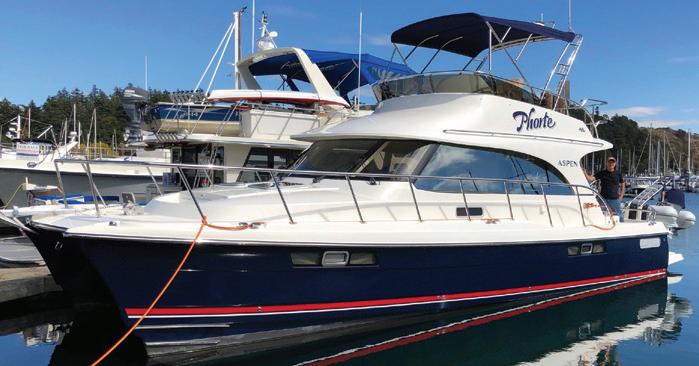


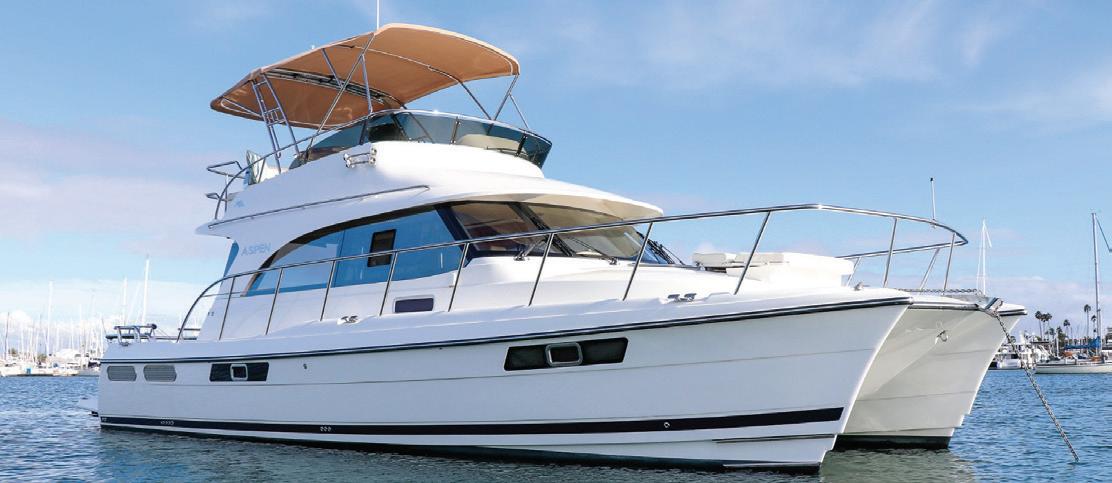


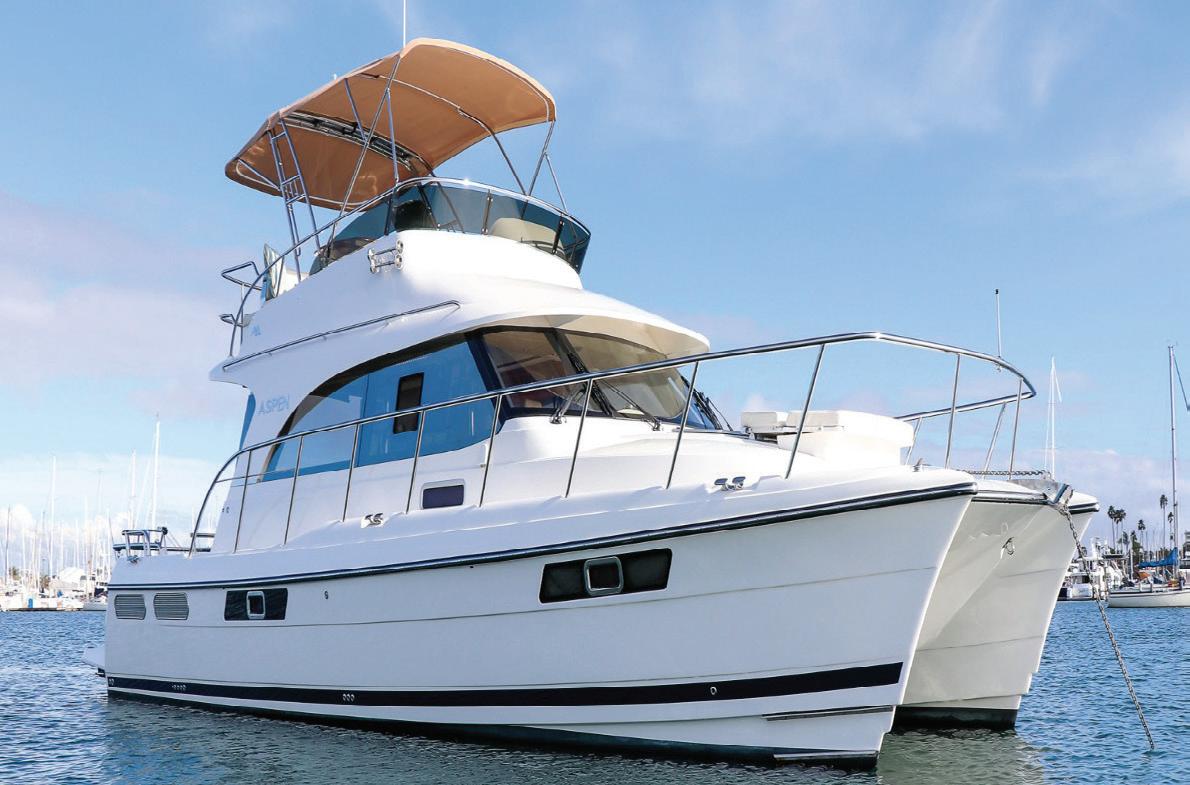

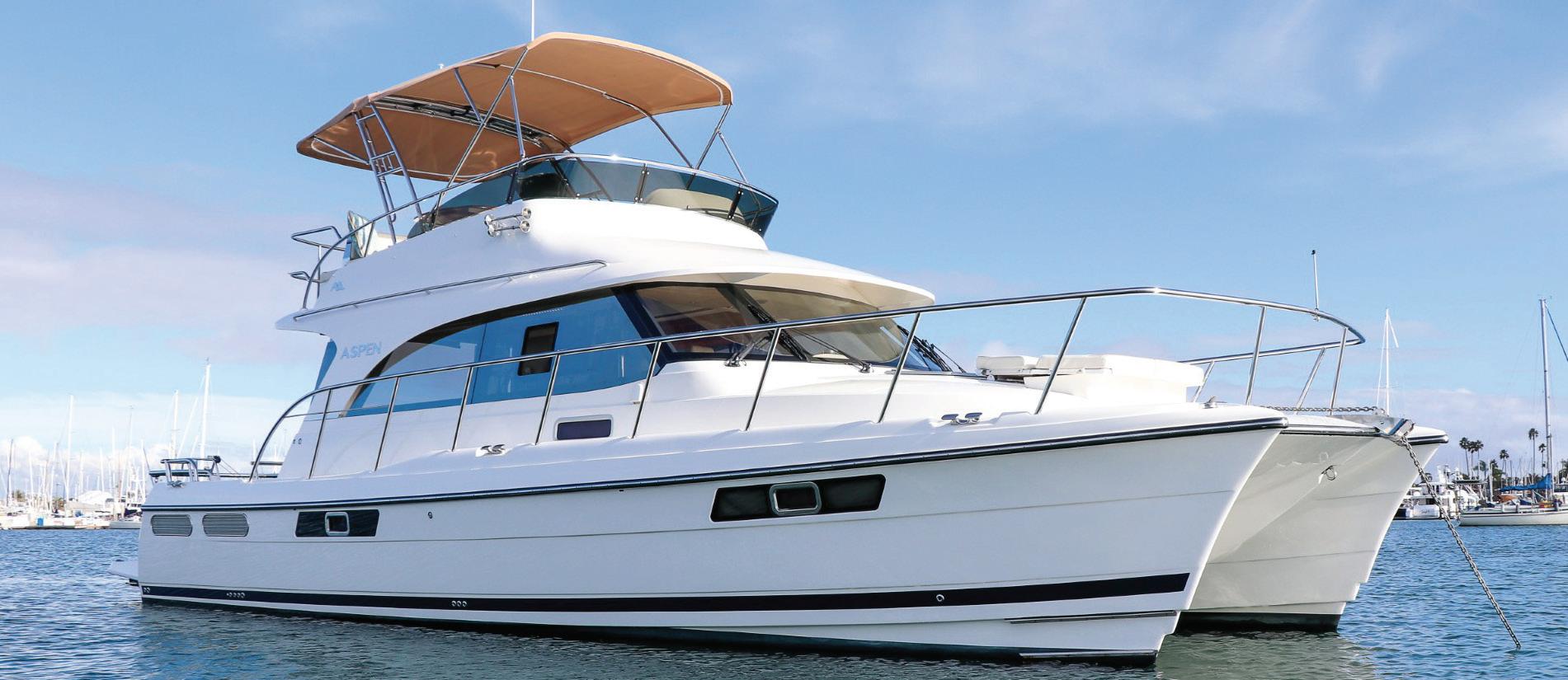


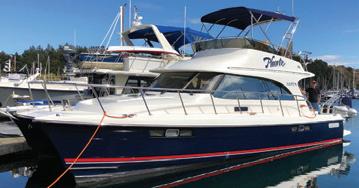



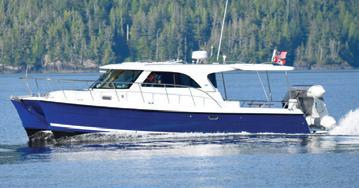

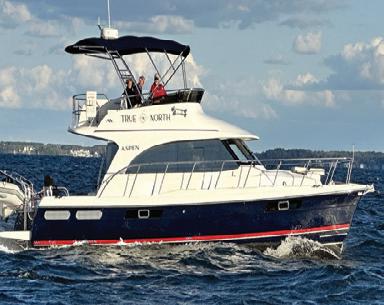
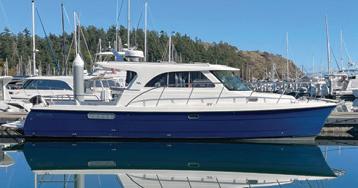

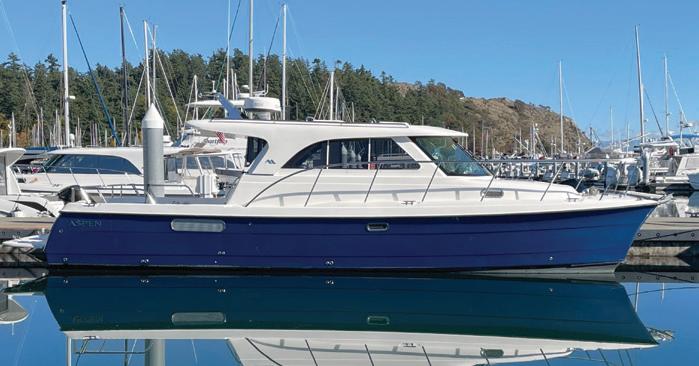
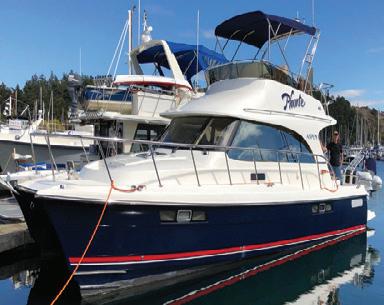
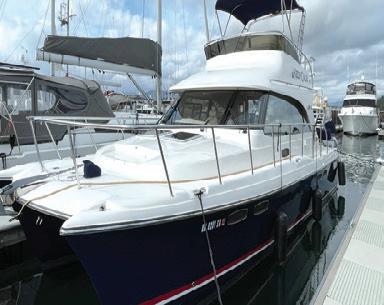
Aspen C100 $390,000 Rare expedition hardtop model. Volvo D3 220hp cruises at 18 kts burning 6 GPH. Excellent Anacortes, WA. 2015 Aspen C100 Freshwater boat! window, Wallas diesel Corian upgrades. Anacortes, WA. Exquisite boat, just made the 1,200-mile trip north up the layout, bow seat, center console Walker Bay. Electric heater along with Dual paint. Meticulously maintained by Aspen Service Department. Cruise 16kts 2020 Aspen C120 Custom Flybridge electronics suite, Phone: +1-360-668-4347 nick@aspenpowercatamarans.com Visit our website or call today for SOLD YOUR PRE OWNED 2018 Aspen C100 $390,000 Rare expedition hardtop model. Volvo D3 220hp cruises at 18 kts burning 6 GPH. Excellent condition! $327,000 Freshwater boat! Upgraded folding bulkhead window, Wallas diesel heater, Ultraleather and Corian upgrades. $320,000 Aluminum Float-On trailer. Highlights incude full Garmin package, teak trim upgrade, and extended hardtop. Phone: +1-360-668-4347 // aspenpowercatamarans.com/brokerage Visit our website or call today for more information on all of our pre-owned Aspens 2022 Aspen C120 $1,049,000 Anacortes, WA. Exquisite boat, just made the 1,200-mile trip north up the Paci c coast from San Diego to the San Juans. Set up for PNW cruising, custom ybridge layout, bow seat, center console Walker Bay. Electric heater along with Dual 15k BTU AC. BRNKL boat monitoring system. Just serviced (engine), and new bottom paint. Meticulously maintained by Aspen Service Department. Cruise 16kts at 11.5gph | Cruise 8kts at 2gph YOUR PRE OWNED ASPEN AUTHORITY 2018 Aspen C100 $390,000 Rare expedition hardtop model. Volvo D3 220-
WA.
2018
hp cruises at 18 kts burning 6 GPH. Excellent condition! Anacortes,
C120 $1,079,000 Great Loop vet. Fully equipped. BRNKL boat monitoring system, and expedition fuel capacity for extended cruising. Deale, MD.
2021 Aspen
$327,000
2015
Aspen C100
Freshwater boat! Upgraded folding bulkhead window, Wallas diesel heater, Ultraleather and Corian upgrades. Anacortes, WA.
$1,049,000
2022 Aspen C120
Anacortes,
WA. Exquisite boat, just made the 1,200-mile trip north up the Paci c coast from San Diego to the San Juans. Set up for PNW cruising, custom ybridge layout, bow seat, center console Walker Bay. Electric heater along with Dual 15k BTU AC. BRNKL boat monitoring system. Just serviced (engine), and new bottom paint. Meticulously maintained by Aspen Service Department. Cruise 16kts at 11.5gph | Cruise 8kts at 2gph
$849,000
2020 Aspen C120
Custom
Flybridge Layout. Full Garmin electronics suite, salon AC and diesel heat with a 6 KW Gen Set. Tennessee River
$320,000
2016 Aspen C100
Aluminum
Float-On trailer. Highlights incude full Garmin package, teak trim upgrade, and extended hardtop. Portland, ME.
$849,000
Phone: +1-360-668-4347 // nick@aspenpowercatamarans.com // aspenpowercatamarans.com/brokerage Visit our website or call today for more information on all of our pre-owned Aspens SOLD YOUR PRE-OWNED ASPEN AUTHORITY SOLD
2018 Aspen C120
Low
hours on Volvo-Penta D6. Expedition alternator and fuel tanks. 2x diesel heaters. Factory maintained! Anacortes, WA.
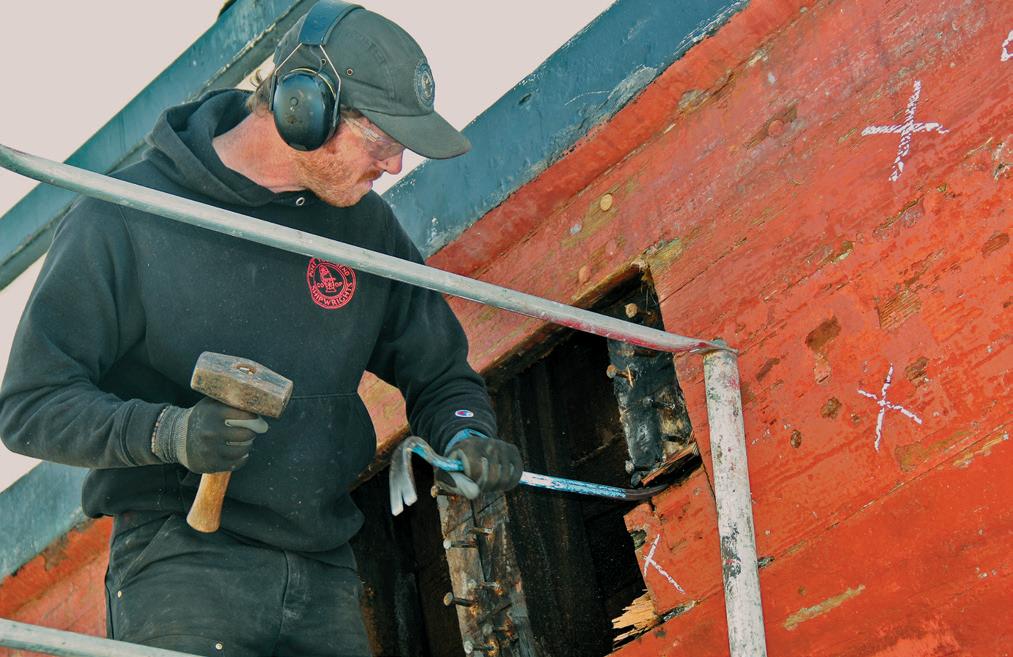
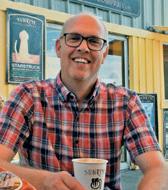




48º NORTH 12 MARCH 2024
News from the Northwest Maritime Center >>
48° North has been published by the Northwest Maritime Center (NWMC) since 2018. We are continually amazed and inspired by the important work of our colleagues and organization, and dedicate this page to sharing more about these activities with you.
48° North is part of something bigger, and we believe the mission-minded efforts of our organization matter to our readers.
PORT TOWNSEND MARITIME ACADEMY STUDENTS EARN DRILL CONDUCTOR CARD
This year’s Port Townsend Maritime Academy (PTMA) students recently completed six weeks of training to earn their Alaska Marine Safety Education Association (AMSEA) Drill Conductor Card. This U.S. Coast Guard-approved course provides practical knowledge of marine survival equipment and the skills for emergency onboard procedures.
AMSEA’s mission is to reduce injury and death in the marine and freshwater environment through education and training. Since 1985, they have been delivering Drill Conductor Courses to mariners who operate in the often hazardous waters that stretch from the Pacific Northwest up to Northern Alaska. The course covers the principles of survival in cold water environments, firefighting techniques onboard, vessel damage control, and organizing emergency responses at sea.
Students dove into the hands-on training under the guidance of experienced instructors. Skylar Wilkerson, a PTMA student and Junior from Port Orchard, shared the excitement of testing Personal Flotation Devices (PFD) and immersion suits at the YMCA. “Personally, I gotta say that it was extremely fun. In this unit, we also got out our life raft. We had to get in the life raft to show we could do it while in the water. We also put on our immersion suits in the water in 60 seconds or less.”
The unit was full of hands-on experiences that pushed students to apply their knowledge in real-world scenarios, honing the skills necessary to navigate challenging maritime conditions. After completing the course, they now carry not only a new certification but also the invaluable knowledge that could save lives at sea.
» nwmaritime.org/port-townsend-maritime-academysatellite-skills-center
EVENTS CALENDAR » www.nwmaritime.org/events
ANCHORING AND ANCHORAGES
March 12-13, 2024
Virtual Class
WEEKEND WORKSHOP: DEMYSTIFYING MARINE FINISH
March 23, 2024
NWMC Boatshop
REGISTER NOW FOR 2024 YOUTH SUMMER CAMPS
In NWMC youth summer camps, kids can experience maritime life in many ways, from dinghy sailboats and rowboats to marine life. NWMC offers seven weeks of summer day camps for kids ages 5 to 17. The Lil Scuppers and Jr. programs are tailored to younger campers who just want to mess about in boats, while older kids can hone their on-the-water skills in NWMC's Youth Learn to Sail camps!
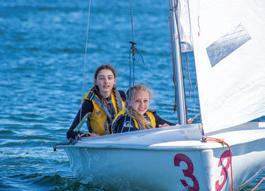
Note to prior Youth Learn to Sail participants: If you've been part of NWCM's Youth Learn to Sail classes before, they've made some changes! Instead of calling them Beginner, Intermediate, and Advanced, NWMC now has Level 1, Level 2, and Level 3 classes. If your child
RACE TO ALASKA DEBUTS PODCAST INTRODUCING THIS YEAR'S NUTCASES...UM, ER...RACERS
Whether you're a casual fan or someone who wears out your mouse or data plan refreshing the tracker each June, there's something fun and new from R2AK-land prior to this year's big event. The R2AK crew is now putting out a regular podcast for your listening pleasure and to keep the stoke-meter in the red. Here's what they have to say about it:
Once again, we have failed to convince anybody that racing to Alaska is a miserable, cold, and potentially marriage-ending way to spend several weeks in June. We keep trying, and we keep failing. In fact—the pool of hopeful racers putting in their bid to be amongst the 2024 cohort continues to grow—and we decided that we need to hear from them exactly how they told their 9-year-old why daddy won't be home to celebrate Flag Day with them.
And so, we present another distraction from your real-world responsibilities: The Race to Alaska Podcast. Each week (don't hold us to that schedule) we'll introduce you to another batch of future-tracker-icons so that perhaps we can all judge their life choices more effectively.
Four episodes are already live and include interviews conducted by Race Boss Jesse Wiegel, R2AK superstar sailor Nikki Henderson, Race Boss Emeritus Daniel Evans, and R2AK cocreator Jake Beattie. You'll meet this year's teams Hornblower, Bowen Arrow, Kuaka, Orca, Tips Up, Sail Like a Mother, Narrows Minded, and Spirit of Nevetz.
» r2ak.com/podcast-2/
SEVENTY48 AND R2AK APPLICATION DEADLINE
April 15, 2024
Online
OUTBOARDS: MAINTENANCE, CARE, AND TROUBLESHOOTING
May 5, 2024
NWMC Boatshop
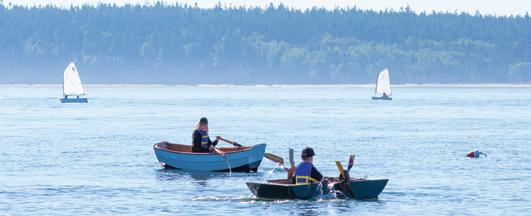
has completed NWMC's "Beginner Sailing" camp in the past, they are eligible to register for either "Opti Levels 2 & 3" or "Doublehanded Levels 2 & 3" camps. Which camp they should join depends on their age and size. Check specific camp or class information for more details.
» nwmaritime.org/programs/youth-programs/youth-summer/
48º NORTH 13 MARCH 2024
low tides » News & Events
CHRISTINA WOLFE OF ORCAS ISLAND WINS ROLEX YACHTSWOMAN OF THE YEAR

On Thursday, February 1, 2024, as part of US Sailing’s National Sailing Programs Symposium, the best U.S. sailor athletes of 2023 were honored among family, friends, peers, competitors, and contributors to the sport of sailing.
Christina Wolfe (Orcas, WA) and Charlie Enright (Barrington, RI) were awarded the 2023 Rolex Yachtswoman and Yachtsman of the Year Award and were celebrated along with fellow 2023 award finalists Betsy Alison, Erika Reineke, Steve Hunt, and Allan Terhune, Jr.
The winners were presented with the Rolex Yachtswoman and Yachtsman of the Year Award trophy along with specially engraved Rolex Yacht-Master timepieces. These honorees join an elite group of notable national sailors.
Christina Wolfe is an accomplished offshore sailor, having put thousands of offshore miles under her belt. Wolfe is best
BOATING SKILLS AND CERTIFICATION COURSE, MARCH 23, 30
Registration is now open for America’s Boating Course, a two-day boating skills and certification course to be held at the Oak Harbor Yacht Club and run by the America’s Boating Club of Deception Pass. Successful completion of the course, conducted over two Saturdays in March, from 9 a.m. to 5 p.m. will qualify individuals for the Washington State Boater Education Card now required for most boaters. Skills including boat handling, docking, safety, rules of the road and more will be covered.
» www.deceptionpasssailndpower squadron.com
known for her doublehanded sailing, which she does often with her husband, Justin. In 2023, Wolfe achieved 1st Overall ORC, 2nd Overall IRC, and Doublehanded Line Honors in the Rolex Middle Sea Race; first female skipper overall in the Rolex Fastnet Race; and first in IRC 2 at the De Guingand Bowl, all achieved doublehanded.
“Never in a million years did I expect to be standing on this stage, let alone in the room with all of you,” Christina said. “This is an incredible honor for me to be up here on this stage. I don’t sail for a living, but when I do sail, it’s the most alive that I feel, and I know many of you feel that as well. I’m so grateful to have the opportunity to do this, to see these iconic races, and to meet inspiring people.”
As skipper, Charlie Enright led the 11th Hour Racing Team to become the first American-flagged team to ever win The Ocean Race. In his third shot at the elusive Ocean Race Trophy, the win in 2023 had been over 10 years in the making for his team, and over six years in the making for 11th Hour Racing.
Of the Rolex Yachtsman of the Year Award, Charlie Enright said “It’s iconic. It makes me think of all the people who have come before all of us. I’ve done a lot of sailing with some of the other finalists who were nominated, and I’ve certainly learned a lot from all of them. This is an individual award in theory, but it takes a village no matter what you’re doing, and I can’t say enough about all the teammates that we had in this endeavor.”
All of the sailors represent their own unique pathway in the sport, have demonstrated on-the-water excellence at international and national events, and have brought global recognition to sailing while representing the United States.
For more from Chris Wolfe, see this month’s PNW Hero Interview on page 42.
» www.ussailing.org/competition/awards-trophies/ussailings-rolex-yachtsman-yachtswoman-of-the-year-awards/
THE ARTFUL SAILOR'S SPRING WORKSHOPS
The crew from Port Townsend's Artful Sailor is back at it, offering a series of workshops on a handful of useful and fun traditional maritime skills.
• March 9: Palm 'n' Needle Handsewing Skills
• March 23: Sewing Machine Maintenance and Skills
• April 6: How to Tie and Display Nautical Knots
Head to The Artful Sailor's Port Townsend loft to enjoy learning, fellowship, and some exciting new skills.
For details and registration, check:
» www.theartfulsailor.com
BLACKLINE PATOS ISLAND RACE IS APRIL 13-14, 2024 (CORRECTION TO SARC AND FEBRUARY ISSUE)
With sincere apologies to the patient crew from Sidney North Saanich Yacht Club, the Blackline Patos Island Race is actually happening on April 13-14.
» www.48north.com/SARC
ONLY FOUR SPOTS REMAIN ON 48° NORTH CRUISING RALLY 2024!
Join the cruising fun with 48° North this summer. Our rally, run in partnership with Ullman Sails, is taking place July 28 - August 2, 2024, beginning in Anacortes. Get in before we reach our 15-boat limit!
» www.48north.com/cruising-rally
48º NORTH 14 MARCH 2024
low tides » In the Biz
MARINE SERVICENTER MERGES WITH DORGAN YACHTS OF CALIFORNIA
Marine Servicenter recently announced its merger with Dorgan Yachts Inc. Dorgan president, Mike Dorgan, is joining the Marine Servicenter team. The Dorgan Yachts Inc. crew brings a wealth of knowledge, a thriving customer base, and incredible sailboat expertise to Marine Servicenter’s San Diego operation.
This strategic partnership between Marine Servicenter and Dorgan Yachts, Inc. signifies a joint effort to enhance yacht sales and services for customers in Southern California, bringing together two industry leaders committed to delivering premium customer services and experiences. Marine Servicenter has been synonymous with providing top-notch yachts, exceptional customer service, and expertise in the Pacific Northwest for over four decades and in Southern California since 2020. With an extensive range of new boat lines, including Jeanneau Sailboats, and a dedicated sales and service team, the company has solidified its position as the preferred destination for West Coast sailboat enthusiasts seeking excellence.
With over 28 years of experience in brokerage and new boat sales, Dorgan Yachts Inc. shares a similar customercentric approach. Situated in San Diego since 2009, the company has built a reputation for meeting the unique needs of its customers be it large or small boats, sail, or power. With an extensive network of local marine vendors, Dorgan Yachts, Inc. supports customers at every stage of their maritime endeavors.
By aligning with Dorgan Yachts, Inc. a company renowned for its industry and sailing expertise, Marine Servicenter reinforces its commitment to the West Coast sailboat market. The partnership is effective immediately and both companies are eager to embark on this new journey together. Dorgan Yachts Inc. will be housed in the Marine Servicenter office at Safe Harbor – Sunroad Marina.
» www.marinesc.com
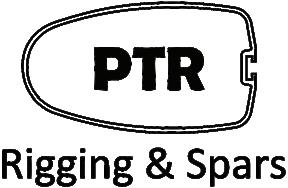

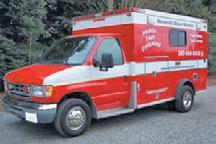

48º NORTH 15 MARCH 2024 Mobile Fuel Polishing Serving The Entire Pacific Northwest • 360-808-0505 Seventh Wave Marine www.seventhwavemarine.com seventhwavemarine@olypen.com Fuel Filtering...Tank Cleaning (Water, Algae, Sludge and Particle Removal Service) Changing filters often? Don't let bad fuel or dirty tanks ruin your next cruise! Whether you're cruising the Pacific Northwest, heading for Alaska, Mexico or around the world, now is the time to filter your fuel & tank before trouble finds you out there! Quality Swaging - Wire & Rod Rigging Refurbishing or Custom Masts - Spreaders Running Rigging - Pole Controls - Lifelines - Electrical Reefing set-ups - Carbon poles 25 yrs. preparing clients for Coastal & Offshore Cruising 360-385-6330 www.PortTownsendRigging.com
ACROSS
CROSSWORD AND TRIVIA
DID YOU KNOW?
by Bryan Henry
Coral reefs cover about 100,000 square miles of the world’s shallow marine waters, the highest concentration found in the Indo-Pacific region, stretching from the Red Sea to the central Pacific.
Corals are found from the tropics to the subarctic, and from tide pools to more than 20,000 feet deep.
Based upon geographical distribution, 60 percent of the world’s coral reefs are located in the Indian Ocean and Red Sea. The Pacific holds 25 percent, and the Caribbean has 15 percent.
It has been estimated that there are several million undiscovered species of organisms living around coral reefs.
The Great Barrier Reef is made up of more than 400 types of coral and 1,500 species of fish.
The Great Barrier Reef is a collection of more than 3,000 individual reef systems.
Belize’s barrier reef is the second-largest in the world.
There are approximately 6,500 square miles of coral reefs in U.S. waters.
About 90 percent of America’s coral reefs are found on U.S. islands in the western Pacific Ocean.
In 2006, elkhorn and staghorn corals became the first coral species in the U.S. to be listed under the Endangered Species Act because of vulnerability to climate change.
Corals are eaten by a variety of animals, from crabs to wrasse to triggerfish, butterflyfish and parrotfish.
Brain coral may grow to a diameter of eight feet.
Organ-pipe coral isn’t a true coral, but a relative of soft coral.
Corals are related to sea anemones and jellyfish.
Until about 250 years ago, corals were thought to be plants rather than animals.
48º NORTH 16 MARCH 2024
16
Pacific Northwest watery landmark, 2 words 7 Toast topping
It provides a navigation direction
Puts on cargo 10 Sundial number 3 11 Ketchikan native
Boat propeller
River crafts
Wave foam 21 Retirement account, abbr.
Change course sharply 23 Ties up with a rope 25 Movie pirate’s cry 27 Concerning 28 Fishing boat
Fishing equipment
Alien movie that made millions
Bull or Rainbow fish
Channel in which a tide runs
Quiet!
Golf hole score
Open boat used
the Inuit people
Motor
It includes the Strait of Georgia and the Strait of San Juan, 2 words
Waters flowing in a direction below the surface flow
Galas
Sea close to Borneo 8 Slightly salty freshwater 12 Beaumont, for one 14 Trouble 16 Exist 17 Entered the Grand Prix Regatta, for example 18 Cause and effect, in Buddhism
Orchard fruit 24 Briny 26 Deck opening 29 I-5, e.g., abbr.
Hosp. facility, abbr.
Fish eggs
Measurement of distance, abbr.
See solution on page 52
1
8
9
13
15
19
22
32
34
35
36
37
DOWN 1
2
by
3
4
5
6
7
20
30
31
33
»







The AquaDrive system solves a problem nearly a century old; the fact that marine engines are installed on soft engine mounts and attached almost rigidly to the propeller shaft.
The very logic of AquaDrive is inescapable. An engine that is vibrating

48º NORTH 17 MARCH 2024 INSTALL Business or
Pleasure, AquaDrive will make your boat smoother, quieter and vibration free.
on soft mounts needs total freedom of movement from its propshaft if noise and vibration are not to be transmitted to the hull. The AquaDrive provides just
of
that the
with
softer engine
can
vibration by 95% and structure borne noise by 50% or more. For information, call Drivelines NW today. 311 S. Brandon St, Seattle, WA 98108 • (206) 622-8760 Visit Our Web Site: www.aquadrive.net
this freedom
movement. Tests proved
AquaDrive
its
mountings
reduce
– 2000hp Ships FREE Ground UPS!
Legend for Over 25 Years” CREATE. CRAFT. LEARN. Boatbuilding & woodworking classes for all skill levels at the Northwest Maritime Center. Learn more at nwmaritime.org 431 Water Street, Port Townsend, WA 360.385.3628 | info@nwmaritime.org 1900 W Nickerson St Suite 301 E1 Seattle, WA 98119 oaksmithyachts.com
5hp
“A‑Northwest
47
Jasper Marine 22
low tides » Products News
» ELITE ELECTRIC OUTBOARD
ePropulsion recently announced the global launch of its latest innovation, the eLite electric outboard motor. The eLite 500W electric outboard (1.5 hp equivalent) was specifically created for the tender and smaller boating market, and features a direct-drive motor and advanced design propeller to deliver high efficiency with nearsilent operation. With a focus on minimal maintenance and cutting-edge technology, the eLite’s “Sport” mode adds an additional 50% boost in power for challenging conditions. With multiple charging options, including 110/220V AC, 12V DC, and solar with the use of optional ePropulsion converters, it can be fully charged in around four hours. For added capability and convenience, the eLite includes a USB-C output that allows users to charge and power other electrical devices. The motor is under threefeet in length and weighs 14.7-pounds, including the built-in battery.
Price: $999 » www.epropulsion.com
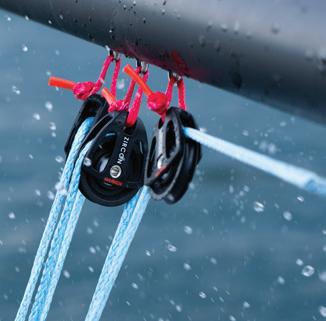
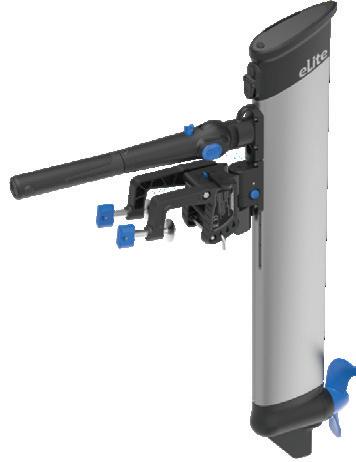
» HARKEN ZIRCON BLOCKS
In an effort to create the most smooth-running block possible for small boats, Harken has created a new series to make trimming easier and takedowns smoother. At the core of the Zircon range’s performance are industrial ceramic ball bearings mounted inside caged races. The cages keep the bearings apart so they don’t bunch up, touch, and stop each other. The result is a very free-running block with less energy lost to friction. Give an unrigged Zircon block a strong spin, and it spins for an incredibly long time. Zircon bearings are more than 700% stronger in compression than stainless bearings of the same size, meaning they won’t deform if used within the recommended load limits. More importantly, they don’t absorb as much energy before starting to roll. This becomes evident when you need to ease a sail in light air. You feel even the slightest fluctuations in sheet load, which means better sail shape and more speed.
Price: $58+ » www.harken.com
» ZHIK FUZE SAILING TRAINER
Finding the right sailing shoe is often about striking a balance between comfort and functionality, which is exactly what Zhik’s Fuze Sailing Trainer aims to achieve. Using lightweight materials to provide exceptional support and grip, the Fuze sailing shoe is designed to perform well on deck or on land. Perforated upper panels allow for fast drainage and optimal breathability, keeping your foot dry and cool. And the integrated one-way drainage system within the sole allows water to flush out but not come back in from below. A durable and non marking EVA rubber sole provides added grip even in the often wet conditions of the Pacific Northwest. The Fuze Trainer comes in two colors, ash or dark gray, and is available in a variety of sizes.
Price: $159 » www.zhik.com
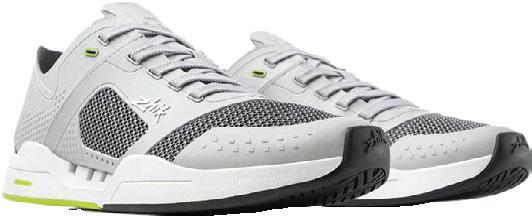
48º NORTH 18 MARCH 2024

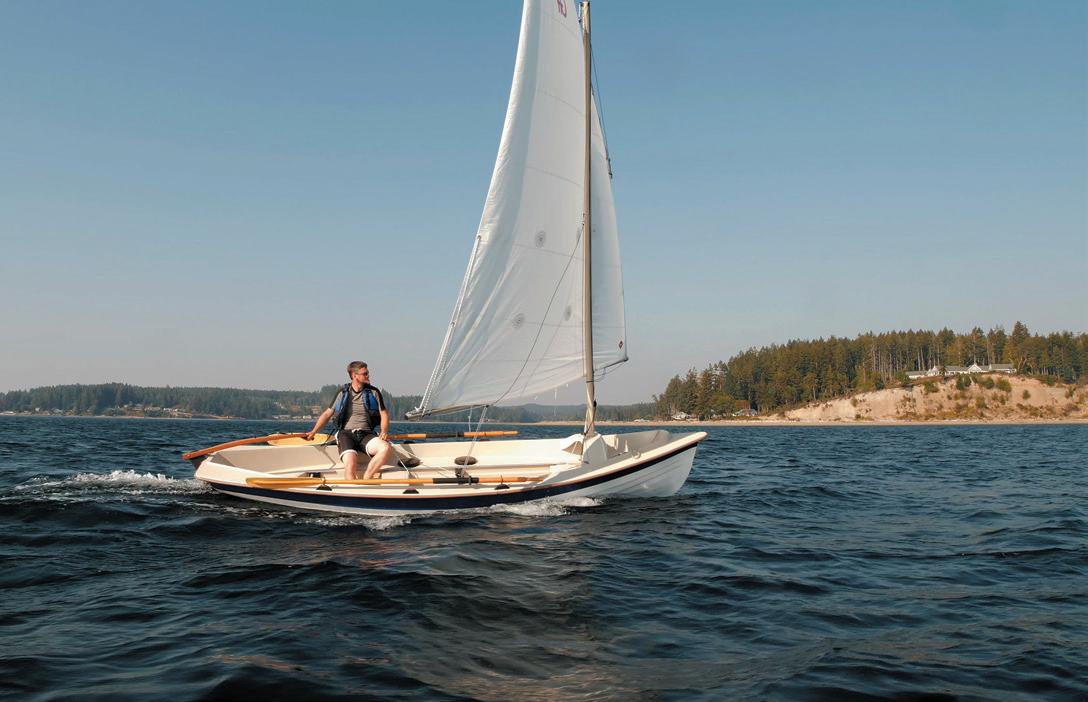




48º NORTH 19 MARCH 2024 Cape George Marine Works Inc. 1924 Cape George Rd. Port Townsend, WA 98368 360.385.3412 Cape George 34 www.capegeorgecutters.com NxNW NORTHWEST RIGGING Rig locally Sail globally 360.293.1154 • www.nwrigging.com • info@nwrigging.com Gig harbor, WA USA 253-851-2126 ghboats.com Since 1987, we’ve built traditional style Sailboats, Rowboats and Yacht Tenders right here in the Pacific Northwest. 17’ Salish Voyager Sailboat scan here to learn more Traditional Designs. Modern Sensibilities.
BETTER SAILING MEANS GOING WITH THE FLOW TO LEARN AS YOU GO
 by David Casey
by David Casey
Before I moved to the Pacific Northwest and took up sailing, my use of the expression “changing tack” often meant adjusting my mathematics lesson plan if it floundered in front of my high school students. Now, having a few sailing seasons under my belt, I reference the phrase literally, along with an array of other nautical terms I have learned to employ during an afternoon on the water.
My application of the lexicon has come slowly, with my wife, Laura supporting my knowledge and skill acquisition when the two of us venture out on the waters of the Salish Sea. As in my teaching career and my woodworking hobby, I often learn best by doing. In those pursuits, however, I’m generally left to my own devices in these solitary endeavors. Thankfully, though, there are ample opportunities for help in the sailing world. As my comfort with the language, skills, and community of sailing has grown, it’s now easier to have an experienced sailor come on board and demonstrate a technique; more than it ever was to get a veteran teacher to observe one of my lessons and offer guidance.

Sailing with more experienced sailors has gotten richer as the author's own skills and knowledge have increased.
48º NORTH 20 MARCH 2024
CASTING OFF 20
That being said, I still find myself learning primarily in isolation, trying to track my own personal growth and knowledge now that my “classroom” consists of our Columbia 28, Ariel
During my current maritime education, I’m reminded of the four stages of progress in learning a new behavior or skill, whether the setting is a school or the waters of Puget Sound:
• Unconscious incompetence, or not knowing what you don’t know;
• Conscious incompetence, or the realization of knowing that you’re doing something wrong, but an inability to rectify it;
• Conscious competence, or being aware and focused in order to perform a job correctly;
• Unconscious competence, or achievement without the thought or need to concentrate on success or optimum performance.
I have yet to attain stage four in the learning process for any task on Ariel. I’m more often in stage one, having had little training or instruction in actually sailing a vessel, learning mostly through trial, error, and research; too often unaware of the mistakes that I might be making.
Considering all of this, it must sound far-fetched to hear that the moment I stepped aboard the old sloop, my goal was to make her go as fast as possible; to squeeze every pound of force from the wind and the tide; to set the sails in perfect harmony with heading, keel, and rudder. It was perhaps a fool’s errand, and foolishness and inexperience often go hand-in-hand. Additionally, my efforts frequently lead to an uncomfortable ride for Laura and frustrations for me.
In the two years that have followed our purchase of Ariel, I have realized that I should be learning to sail better, not faster. But in order to achieve that goal, I have to wonder, what does it mean to sail better? Does better mean faster? Or more efficiently? More comfortably? Or maybe even to experience more excitement and thrill? The answer depends on who’s asking.
For Laura, the best part of sailing is simply being on the water, though even that feeling could be improved were she to actually be in the water,
It was a windy, cool and fun day for a sail amongst friends.
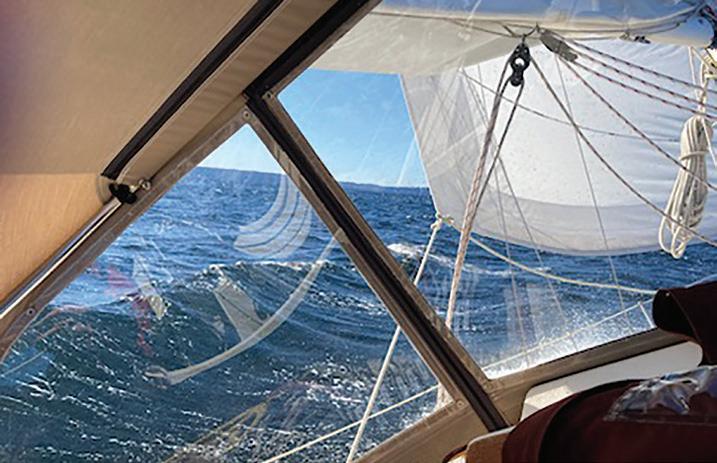
cold temperatures notwithstanding. For a racer, the answer deals with speed, efficiency, and control (winning doesn’t hurt either). For cruisers, perhaps, comfort and amenities top the list, along with a worthwhile destination. In truth, each sailor’s priorities are almost always unique, complex, and elusive.
You might as well ask, what does it mean to walk better? You could talk about technique and efficiency or purpose and intention, but you can’t ignore what walking does for your mood, energy level, and maybe even your soul. The same could be said of sailing. I don’t actually ask that question about walking, maybe because I’ve been doing it for about 60 years now. I feel fairly certain that I’m in stage four regarding my level of perambulatory skill.
But sailing is not only a new activity for me, it’s one that I only occasionally partake in, unlike walking. So getting better at it is a slow process, and one in which the conditions are constantly variable. Taking Ariel out on a calm, bright summer day is not the same as braving a strong, chilly wind in January. We’ve yet to round Point Defiance with the same tide and wind conditions, and we have learned to check tidal predictions and wind forecasts every time we head towards the Narrows. Each setting requires not only a different set of skills and preparation, but a unique outlook on the purpose and intention of the day. Our outings may be defined by barely full sails, music drifting across glassy waters,
cold beer, and warm sunscreen; while others demand a reefed main, hot coffee, and heavy foul weather gear.
Somewhere between the two extremes lies the majority of our sailing experiences, giving me ample learning opportunities. When trying to move along the continuum toward “conscious competence” in these situations, the best advice that I offer anyone (or take to heart myself) is to seek out knowledge and advice from more experienced sailors, and pay close attention to their methods and techniques when possible. As the baseball legend Yogi Berra quipped, “You can observe a lot by just watching,” which is exactly what I did on a recent sailing venture.
On a cold, blustery, and crystal-clear afternoon, my dockmate, Tom, invited me and a fellow club member, Fred, for an afternoon sail on one of our boats. After a Rochambeau challenge to decide whose vessel we would take, the three of us ended up on Barquinho, Tom’s Cal 30, with the hopes of setting up an informal weekly ride-along on each other’s boats in the months to come. We set out with 15 knot winds tautly displaying our club’s American flag at the mouth of the marina, prompting both Fred and Tom’s suggestion to reef immediately.
Tom directed the process from the foredeck, handling the main halyard while Fred was at the wheel. After the main was hoisted to about 75% of her fully extended size, I tightened the reef line from the cockpit. We then unfurled
48º NORTH 21 MARCH 2024

the jib to about 80%, and headed to windward as Barquinho heeled in response, cutting through the whitecaps and shedding the splash and spray that leapt across her bow.
We headed towards Brown’s Point close-hauled, hoping to round the point without changing course. The two experienced sailors and I were excited to sail as fast as the wind and waves could carry us. For the three of us, sailing with the rail nearly in the water was exhilarating and just plain fun.
Since the knotmeter’s paddle wheel was jammed, we could only guess our speed until I opened my Navionics app to confirm our estimates. I excitedly called out the varying readings: 5.4, 5.7, 6.2, 5.8.
We proceeded to make minor adjustments to the sheets and traveler, even experimenting with the location of the jib car along its track while Fred headed up into the wind to create a minor luff of the foresail.
Unable to fetch the point on our initial heading, we decided to tack towards Vashon Island with the wind still driving hard. As our afternoon closed out and we fell off for our return leg back to the marina, our beam reach nearly righted Barquinho, and, not surprisingly, increased her speed as well. While taking my turn at the helm, I carefully opened my phone app again, confidently claiming our slightly improved speed: 6.1, 5.9, 6.3!
The values, while improved, couldn’t hide the slight disappointment of the crew. With the reduced apparent wind speed after our course change, Barquinho’s ride was less compelling and exciting, prompting me to ponder the idea that if it doesn’t feel like you’re moving fast, then are you? And more to the point, which situation offered us better sailing?
Sailing close-hauled in fresh breeze required focus, preparation, and response, both mentally and physically, as movement in the cockpit and on deck was precarious and difficult. How we trimmed the sails felt much like a dance between wind direction and heading. Despite those challenges, or perhaps because of them, we found ourselves in a state of flow.
The balance point that occurs in the delicate zone between boredom and anxiety was explored by the late Hungarian psychologist Mihaly Csikszentmihalyi, and has been studied by presidents, coaches, and business executives alike. As Csikszentmihalyi wrote in 1990, “The best moments in our lives are not the passive, receptive, relaxing times... The best moments usually occur if a person’s body or mind is stretched to its limits in a voluntary effort to accomplish something difficult and worthwhile.” The afternoon sail perfectly fit the conditions that the psychologist
described.
As we headed back to the marina, Tom and Fred furled the jib and dropped the main while I was at the helm. Tom took over the wheel as we approached the slip while Fred and I readied the fenders and dock lines. We all agreed that we couldn’t have asked for a better sail. The afternoon allowed Tom and Fred to tame the wind and master the features and design of the Cal 30, trimming it to do what she does best.
For me, it was less about knowledge of the boat in particular, and more about trying to absorb knowledge from my fellow sailors. Seeing their joy, I realized that there really is only one answer to what it means to sail better. Regardless of the objective or the intention, the time of year, or even the level of skill or ability, better sailing means existing in that perfect-for-you balance where the challenge of the experience lies just at the edge of our skill level. Whether we are racers, cruisers, or day sailors, we find joy and satisfaction when our minds and bodies are fully engaged.
David Casey is a retired math teacher and semi-professional woodworker and bass player. He plans on using his retirement to build a small sailboat and a kayak, and to explore the waters of southern Puget Sound.
48º NORTH 22 MARCH 2024
Tom looks at the sails as Barquinho stretches her legs on Puget Sound.


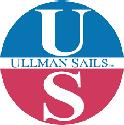
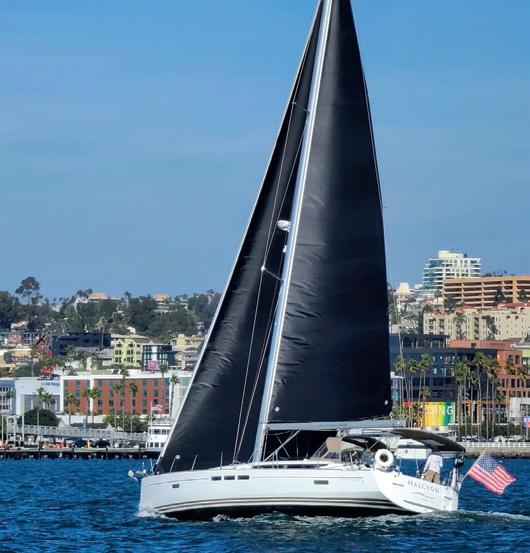






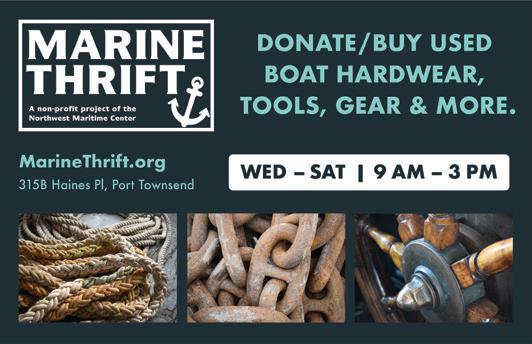
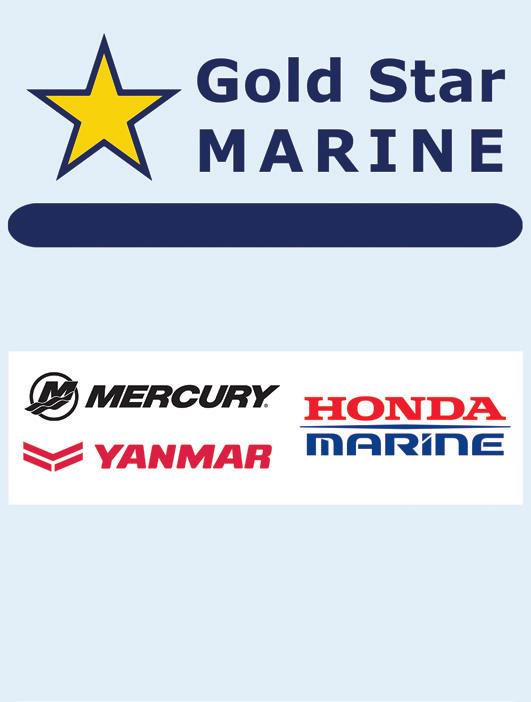

48º NORTH 23 MARCH 2024 Ullman Sails • (360) 504-6640 9090 S March Point Road, Building C-200, Anacortes, WA 98221 Pnw.ullmansails.com ULLMAN SAILS Pacific Northwest Free Service pick up and delivery in Puget Sound area. Call us for information. sanjuansailing.com • 360-671-4300 Evergreen-studded islands, abundant wildlife and peaceful anchorages. Experienced or new to boating, we can help you discover the joys of cruising the beautiful San Juan Islands! Beginner to advanced liveaboard courses. Sailboat and powerboat bareboat charters. Guided otillas too! Cruise the San Juan Islands! INSTRUCTION • BAREBOAT CHARTER • BROKERAGE
SHIFTING GEARS 24
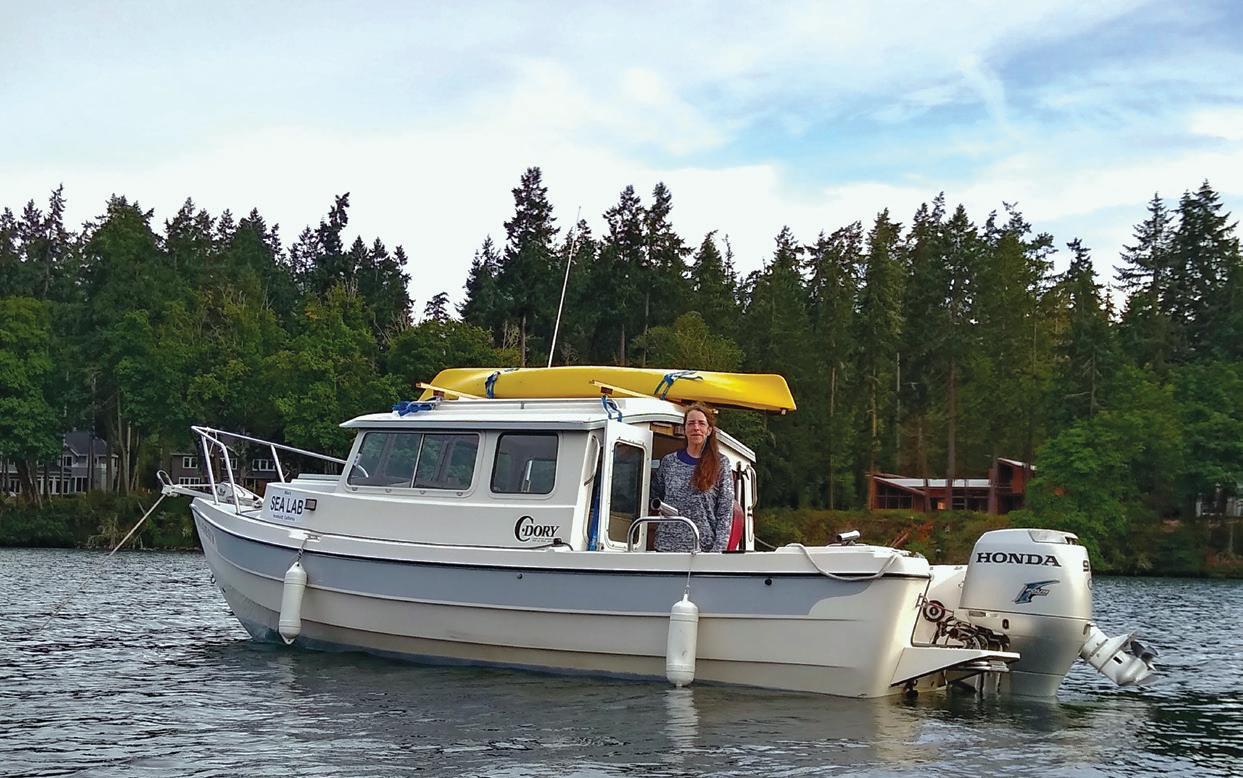
LOCAL KNOWLEDGE
by Dennis Bottemiller
Ever since we’ve had boats that stay in the water, we have kept them moored in Tacoma. Often, we look for a quick weekend getaway or overnight trip close to home, and our favorite spot over the years has been the county park marina at Dockton on Maury Island. On our Cal 27 Moondance , it took a couple hours to get there on a Friday evening, sometimes a little faster if there was favorable wind. Being slow and always anxious to secure our guest moorage, we almost always went straight to the marina and parked for the weekend, never really going farther into Quartermaster Harbor to explore. In all the years we’ve been going there, only one time did we venture in to look around.
On that single exploration, we noted what looked to be a large park on the east shore of Vashon Island. Sure enough, it is Jensen Point Park and it has good anchorage just offshore. We never stayed there on Moondance, but we filed it away for future reference. It was particularly memorable because, as we were cruising past quite close to shore, Tekla spotted a bald eagle that appeared to be running on the beach. It was a bizarre sight, and neither of us had ever imagined that a bald eagle would run if it could. But there it was, bouncing along as fast as it could go, wings spread wide as if something were chasing it. To watch something that beautifully graceful when soaring through the sky running on the beach was about as awkward a thing as I have ever seen, and comical!
Fast forward a few years to Fourth of July weekend 2023. We
hatched last minute plans to get out of the house and spend the weekend on the water aboard Sea Lab, our C-Dory 22 cruiser. Sure, we have much more weekend range on Sea Lab than we did in Moondance, but where else would we go? Dockton. We like it there.
We arrived in 40 minutes from Tacoma. The marina was about half full (on a holiday weekend no less) and we tied up and commenced relaxation protocol, breaking out our books and a cold drink. Though the marina wasn’t very busy, the local teenage hangout was in full swing and there were hordes of youngsters doing what they’re really good at, namely being loud and rambunctious.
We were still in the early stages of our protocol, and I suggested to Tekla that maybe we should go check out “Eagle Run Park” and see if we can anchor out in a quieter location. The decision was made, and we pulled the dock lines and headed out, relishing our quick mobility in the C-Dory. We decided to do a whole tour of Quartermaster Harbor and end up at the park. We could see in the distance there were lots of boats anchored at the head of the harbor, so we went to check it out. While we had spent Fourth of July weekend in Dockton before, we discovered that we hadn’t ventured to where the real party was. There were several rafts of big boats, eight to ten together as well as what appeared to be hundreds of smaller boats all anchored out for the weekend. This was certainly not the quiet anchorage we were looking for, so we headed back south to Jensen Point.
There were only a few boats there and it was sufficiently far
48º NORTH 24 MARCH 2024
away from the party to be quiet enough that we could get a good night’s sleep. We scouted the area and dropped the hook in 20 feet of water, settling in quickly so we could launch the kayaks and get Tim Tim the sailor dog to the beach for his relief tour. When we arrived on the beach, we found a very fine park with good bathroom facilities and a big kayak rental operation, as well as lots of beach to explore and walking trails through the woods. It reminded us that we should try new things more often instead of always going with what we know and feel comfortable with.
The day wore on and we made our way back to Sea Lab to resume our relaxing day before we would fire up the grill for dinner and watch the sun go down. A few more boats had come into the anchorage, quietly enjoying themselves like us. We thought this was a great spot as an alternative to Dockton.
The sun sank into the horizon and, looking over at the beach, I noticed several motorhomes and camping setups. I found this a little odd because there were signs that said “no overnight camping” but I dismissed it as a Vashon quirk, figuring the authorities must allow it on special holiday weekends or something. It got dark and we were tired from our day of exploration, so we crawled in for our favorite part of cruising, rocking to sleep in the gentle waves of a calm night at anchor.
Flash – Bang! You’ve heard them, like a stick of dynamite that goes up and explodes in the sky and you can feel the sound. No sparkly colors cascading down through the sky, just the sound and fury of the explosion. Startled awake, I stuck my head out of the hatch to see what was going on as Tim Tim leapt into
the V-berth and sat quivering in terror. Through the binoculars I could clearly see the party going on at the beach and figured, well it’s Independence Day and they’re having a good time. Surely, they can’t get too crazy, and they’ll go to sleep pretty soon. I hunkered back down, trying to soothe Tim, and finally got him to calm down and fell asleep myself. Flash – Bang! What the…? So much for a peaceful night at anchor!
It seems the fireworks guys on the beach were rationing their aerial explosions because they only did one about every 45 minutes, all night. Usually it seems, fireworks revelers shoot the works and get it over with, but these guys must have set a timer and were good at keeping their schedule.
At around 4:30 a.m., yet another one went off but I had long since stopped popping up through the hatch to look. I was in as irritable a mood as I have ever been on the boat as I tried to go back to sleep. Then I started hearing voices, like the murmur of lots of voices in regular conversation. Lying there awake, it continued to get louder and sounded like a lot of people talking and I could make no sense of it, so I popped up through the hatch to see hundreds of people standing on the beach in the first light of dawn and said to Tekla, “What the hell is going on here?” To which she responded, “How would I know? I don’t know! What time is it?” So, I again tried to get back to sleep.
After only a few minutes of trying, I heard the sudden loud roar of an unmuffled engine starting and immediately the sound was coming toward us in a hurry. I jumped up through the hatch again and saw a hydroplane speeding away through the anchorage and many other hydroplanes on the beach ramp one

The voices were real! A mysterious crowd assembled at Jensen Point Park at dawn.
48º NORTH 25 MARCH 2024

by one starting and roaring off to circle Quartermaster Harbor in the coming light of day. I stared in disbelief.
In a short time, the last one came off the beach to circle with the others, then they all headed toward the point of land where the crowd was. A loud cannon went off from a big boat that had come in and anchored after dark. The race was on and all the hydros disappeared around the corner from the bay! Still not really knowing what was happening, I got my phone and started Googling hydros and Vashon and quickly found out about the 4th of July Hydro Run that has been held annualy for nearly 70 years. By this time, we were up and dressed and I was taking back all the unseemly things I had been saying about the anchorage and feeling downright festive as we made breakfast awaiting the return of the fast boats.
Pretty soon we heard the whining motors wound up tight in the distance and they started coming around the point to circle back around Quartermaster and head for the boat ramp; the
winner several minutes ahead of the others. From the cockpit of our boat, it looked like the hydros were coming straight at us and, alarmingly, they came tearing through the anchored boats at full speed and didn’t slow until they were right next to the beach. A few of them did an extra lap or two right through the anchored boats at high speed, thrilling and dangerous!
By around 10 in the morning, the boats were all loaded up and hauled away and the talking crowds dispersed, the RVs and campers were all gone, and the anchorage was quiet. We sat in the morning sun drinking coffee, feeling both tired and like we had really had some fun. We certainly would have some good stories to tell, and now we had some local knowledge about where not to anchor on Fourth of July if we’re looking for a peaceful night.
Dennis and his mate, Tekla, reside in Auburn, WA and usually keep Sea Lab in the water at Tyee Marina.

48º NORTH 26 MARCH 2024
Full speed through the anchorage.
Here comes the rooster. The hydros had assembled for Vashon Island's 4th of July Hydro Run.

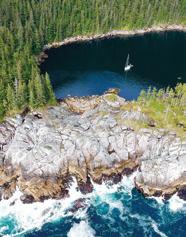



PREMIUM
Become a part of the 48° North crew! In addition to your magazine each month, with this exciting new subscription offering, you’ll also be supporting 48° North in a more meaningful way. But, warmed cockles are far from the only benefit. Others include:
• Discounts at Fisheries Supply Co.
• One free three-day to the Port Townsend Wooden Boat Festival ($40 value)
• 10% off of Northwest Maritime Center classes excluding Sailing Club
• Discounts on registration fees for events
• Cool bumper sticker and decals.
• $75/year (additional fees for First Class forwarding or International)
JUST THE MAGAZINE, PLEASE: Our standard subscription gets you 12 months of 48° North and its associated special publications (SARC, Setting Sail, and the Official R2AK Program).
• $39/year (additional fees for First Class forwarding or International)
Subscribe today online: 48north.com/subscribe
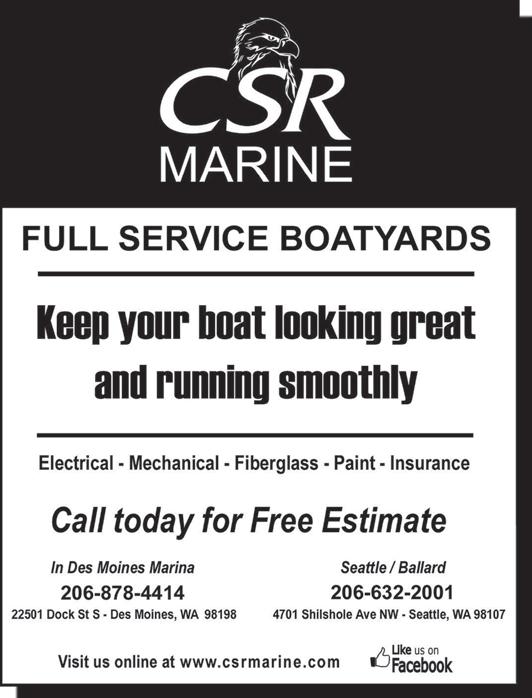
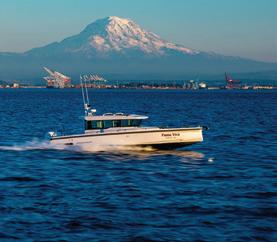
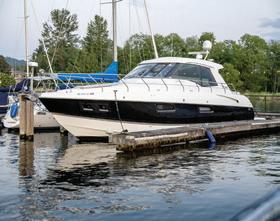


48º NORTH 27 MARCH 2024 206.949.2270 1900 W Nickerson St Suite 301 E1 Seattle, WA 98119 oaksmithyachts.com PRE-OWNED LISTINGS 2022 Axopar 37xc $380,000 $460,000 Sold 2013 Back Cove 37 2011 Cantius 48 $430,000 Sold Brabus Shadow 900 $685,000 TODAY!
48° NORTH SUBSCRIPTION
26 48° NORTH'S 40TH ANNIVERSARY 40 RACE WEEK PNW 32 PACIFIC GALE SAIL AUGUST 2021 SUBSCRIBE
by Ocean Smith

TBIG FLEET IN A SMALL TOWN
EXPERIENCING THE THUNDERBIRD FLEET IN PORT TOWNSEND
he summer sun beat down as I tugged my battered Laser up the even more worn boat ramp. Just in from a frigid sail, full of sloppy roll tacks and practice for my upcoming sophomore year of racing, I scanned Port Townsend Bay with my eye out for any other small vessels. A minefield of anchored cruisers occupied the shallows, along with a plethora of crab
pots extending to the shores of Indian Island. It’s a wonder any of us make it through there. Lost in thought, it was only after I heard my name that I realized that there was anyone else there.
I didn’t recognize the person talking to me, even though he appeared to know me. Living in a small town like Port Townsend, people seem to know each other even if they haven’t met before—
as it happens, this fellow had once rented my parents' house. It’s not uncommon for me to wind up chatting at the boat ramp; almost every time I take out my Laser, I get a friendly smile or curious comment, “What type of boat is that?” or the classic, “I used to sail those when I was your age!” Conversing as I derigged, I learned that this man raced in the local Thunderbird one design fleet. By the time my sail was
48º NORTH 28 MARCH 2024
rolled and my boat rinsed off, I had an invitation to go racing.
Ever since I began to immerse myself in the Port Townsend sailing community, I have heard about Thunderbirds. It’s hard to avoid them, as most of the avid sailors in the area are involved in the fleet in one way or another, and T-birds represent around a third of the PHRF fleet. One of my high school teammates had raced on one, and often referenced it in a rather melodramatic manner yet, to this point, I had never considered trying to find my own place on one.
Wednesday race night came and I found myself down on the docks, searching. I only knew the first name and number of the person who invited me, and he wasn’t answering his phone. Crews were taking sail covers off, bending on sails, and a few had even cast off. I was getting desperate. I asked around, only to find that there were multiple sailors with the same name and the one I managed to find was certainly not him. I was just about to give up and bike home when Hans, the skipper of a utilitarian white Thunderbird named Possum, offered me a spot on his crew.
INTRODUCTION TO THE FLEET
Hans had recently started his own team on Possum and had just one consistent crew. My friend Noah and I quickly filled this vacancy, making us by far the youngest team on the race course, and possibly the only one where no one had white hair. We went out that first night and instantly had fun together, along with some ups and downs. Our races had a very consistent pattern. We would start well and round the weather mark in first but, after that, it would go downhill quickly. Often it was the spinnaker, something would get stuck and cause a slow hoist or an hourglass. Other times it was a wide rounding or we’d pick the wrong side and get rolled—something that happened much more frequently downind than upwind.
I was captivated after that first night. When I first stepped on the boat, Hans described it as a large 420. On a literal level this comparison holds up pretty well, yet the racing is different. As someone who had only sailed dinghies and wooden schooners, actual close keelboat starts were alarming. Fortunately this was one aspect of the
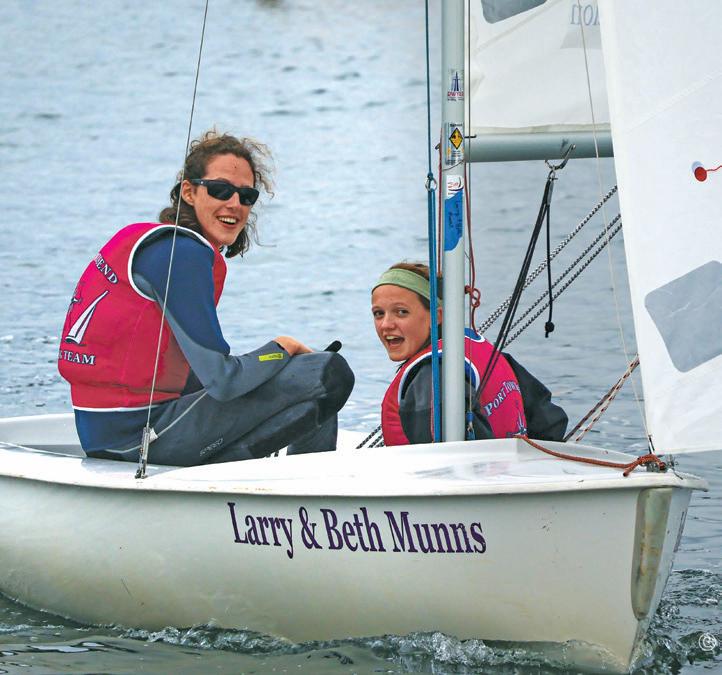
race that my skipper had down, which at the time appeared as wizardry to me. Tactically, you had to commit to a side far more than I did in dinghies, because the size of the fleet and the risk of doing too many maneuvers on a 3,600-pound 26foot keelboat could get you in trouble. But these starts taught me valuable lessons that have improved my dinghy racing.
After racing, whoever was available would meet in the clubhouse to socialize and discuss the day. A lot of what I’ve learned about tactics and strategy came from these meetings. Comparing dinghy tactics—with their snappy tacks— and keelboat tactics has helped me understand both to a much higher level. Coming from dinghies, which tend to perform best when hiked flat, sailing with heel was a completely foreign concept to me. One of the first questions I asked was about how much heel was fastest, with the answer being the unsatisfactory, “whatever feels good.” I’ve asked many more questions at those meetings since then, most of which came with far more solid answers.
Racing with Hans didn’t last more than a season, as pretty soon my high school racing schedule conflicted. Yet when the dinghy season was over, it took no effort to find a boat to crew on, as everyone is very welcoming and there’s often at least a couple crews who are missing their fourth. Ever since that first season, I typically run the bow, since I’ve always been the youngest member of the crew. Not only do I enjoy bow, but I’m often nominated for the role due to my ‘spryness.’ One of my favorite parts of sailing the Thunderbird is setting and jibing the spinnaker in breeze on the notoriously slippery bow—such crucial parts of the race, they are immensely satisfying when done right. These successes made up for the stress of my mistakes and fouled sets when I was first starting out.
THE VENERABLE THUNDERBIRD
The Thunderbird is a hard chined fractional sloop designed by Ben Seaborn. As Pacific Northwest sailors are likely aware, the Thunderbird was chosen as the winner of a 1958 contest held by the Douglas Fir Plywood Association. The
48º NORTH 29 MARCH 2024
Coming from dinghy sailing, the author also found a lot to like from the Thunderbird and the fleet's sailors. Photo by Chance Bates.


contest called contestants to draw up a boat that, according to the International Thunderbird Class Association, was to “be both a racing and cruising boat, sleep four, be capable of being built by reasonably skilled amateurs, be powered by an outboard, and out-perform other sailboats.” The boat neatly fits this criteria and ended up at 26-feet of length overall. The interiors are spartan, with four bunks, a small sink, and generally not much more.
First built in Gig Harbor, the Thunderbird enjoyed immediate popularity. Just two years after the initial design, the class association was formed, with the first fleets being located in Tacoma and Seattle. It was not long until the excitement grew and fleets started
popping up in Canada and California, and even Boston, Australia, and Japan. In the early 1970s, the class adopted fiberglass as a new hull material, along with an aluminum mast and a high aspect rudder. These additions kept the excitement flowing, with production fiberglass hulls being built in Vancouver, Ontario, and Sydney. Wooden and fiberglass hulls still race equally under the one design rule. At the height of class activity, more than 50 boats would attend the international championship regattas.
The first Thunderbirds reached Port Townsend in the early 1960s, when three friends, Glenn Abraham, Bill Scheyer, and Jim Daubenberger, each purchased boats; yet it was many years until the local fleet really took off.
Thunderbirds are charming boats, which look pretty under sail and slightly awkward at the dock. “Quirky” was the word used by Piper Dunlap, a longtime sailor and an initiator of the Port Townsend fleet’s renaissance. He drove all the way to the East Coast in 2014 for his first Thunderbird, Blewbird. As a firm supporter of one design racing, he was quick to sell his J/27 to be part of the growing class. He described Thunderbirds as being “designed to be the VW bus,” as in they are cute, somewhat comfortable, and you can bring your family along. They have a deep cockpit, benches, and a sharp coaming, which can get tiring after a couple days of driving from the rail. Dulap related their comfort to a 505 dinghy. “After racing three days on a T-bird, I am wrecked. After racing three days on a 505, I feel pretty good!” Both Blewbird and Merlin, two Thunderbirds that are regularly raced in the fleet, were brought into town by Dunlap.
THUNDERBIRD RACING AND FLEETS
Thunderbirds may not win many races boat-for-boat these days, but they are still relatively quick with a favorable PHRF rating of 195 and can dominate in lighter air. It’s not uncommon to see them sweep PHRF leaderboards. In an attempt to get more people to race PHRF, the Port Townsend Sailing Association knocked their rating down 45 points, which was, predictably, a very contentious issue. Even that wasn’t enough to keep them out of the season rankings. They’re rigged with a symmetrical spinnaker and either a genoa or smaller non-overlapping jib for the windier days. While sportboats and vessels with more waterline outpace the Thunderbirds in a breeze, their symmetrical spinnaker and decently low wetted surface area help them get ahead on light air days.
Today, there are many T-birds scattered around the region, yet the closest fleet that can rival Port Townsend’s in number and activity is in Boston. The Thunderbird has a lot going for it as an extremely accessible one design, especially in areas where there’s a large fleet. In addition to being quick, they are relatively easy to sail and can be found cheap. This is very obvious in Port Townsend, where you see them scattered everywhere. They’re all
48º NORTH 30 MARCH 2024
Thunderbirds are the most common vessel to see on Port Townsend Bay, aside from the ferry. Photo by Chance Bates.
With evenly matched one design boats, the sailors' skills determine the outcome.
Photo by Chance Bates.
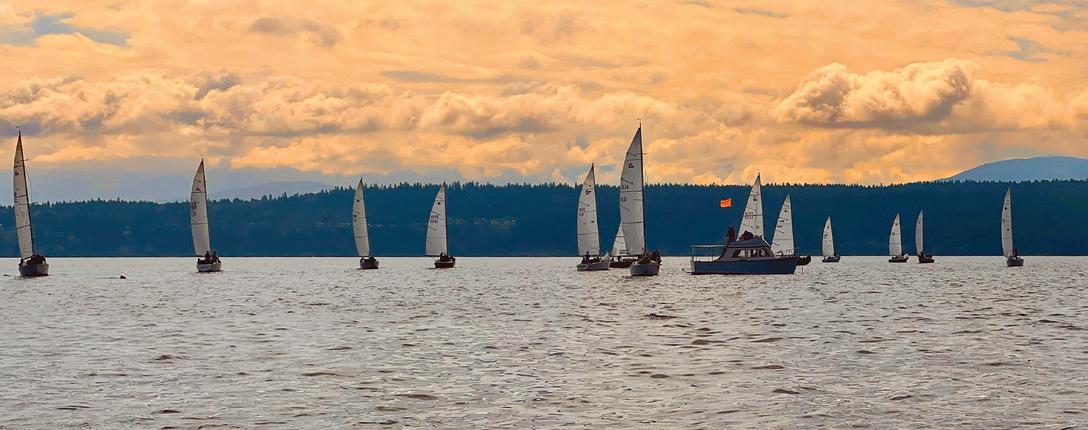
throughout the port and the boatyard, even hidden in people’s yards and driveways. According to Roland Nikles, the president of the Port Townsend Sailing Association in 2023, there are 2225 boats in Port Townsend and Sequim combined.
Any one design class thrives on its community, as the number of boats is what makes the racing intense. The T-bird fleet is a great example of this and exhibits camaraderie in many ways. If there were any annoyances or hard feelings after a day of racing, they are promptly forgotten as the fleet heads back to the clubhouse for a debrief or to socialize. On exceedingly windy or calm days, the fleet leaders stay at the dock and will give talks or lead less experienced crews through mock maneuvers. The sharing of skills and knowledge is very important because, while it is accessible, it draws some of the area’s most accomplished sailors as well. As someone who recently entered the fleet I can attest that it has been great to feel like I can contribute immediately, but I can also learn a lot from the more experienced sailors.
It has been subtly different sailing in the T-bird community versus racing in high school, as everyone in the fleet knows each other. At high school regattas, the camaraderie is more amongst your team and the few other friends you’ve made in the fleet. Even though there are comparatively similar levels of competitive spirit, it’s wielded in a much softer manner in the Thunderbird fleet.
The Thunderbird community in Port Townsend has some of the most dedicated sailors on the bay. They’re the first ones out in the new year and the last ones to quit in the fall. They race in one series or another all the way from April through October, and Saturday practices start on the first weekend of January. They are a seemingly constant sight on Port Townsend Bay, more so than any other vessels except the ferry. That dedication is necessary when racing one design. In a fleet that starts so even, getting out on the water even a month early can give you a significant head start on the competition. Yet it’s more than that. They get out early for the joy of being on the water and the satisfaction of pushing their boats as fast as they can make them go. This is a welcome change to high school sailing, where almost everything is in the context of purely racing, and one of the most refreshing reasons why I’m involved in the fleet.
When I first stepped aboard Possum, I had no idea that I would still be racing Thunderbirds today, especially because the uncertainty of that first day might well have meant I never started sailing with this fleet. Since then, I have sailed regularly on three different boats and know all the boats and most of the sailors in the fleet by name. The welcoming attitude of the community has inspired me to reach out to more people. Whether it’s about sailing or connecting with the wider community, this spirit has given me multiple opportunities that couldn’t have happened if I hadn’t simply started
a conversation.
The last time I sailed a Thunderbird was on Dorado, the boat Jim Daubenberger first brought to Port Townsend in the 60s—history is never too distant in this town and this fleet. I was running bow for Piper Dunlap with a crew of three. It was ghosting weather and dying, eventually becoming too patchy to race. The fleet headed in early yet, even with barely any wind at all, very few people reached into the outboard well to start the motor. They were Port Townsend T-bird sailors, why would they rush to head in?
Ocean Smith is a high school sailor and aspiring journalist living in Port Townsend. As his senior project, he’s been interning with 48° North

48º NORTH 31 MARCH 2024
The Internationals regatta is a big draw, with very competitive sailing and welcoming camaraderie. Photo by Tim Satre.
Though the author still races dinghies and schooners, he's a T-bird sailor now as well. Photo by Luca Campbell.
48° NORTH BOAT TEST: ALLURES 45.9
 by Joe Cline
by Joe Cline
Full main and small jib?” I asked, raising my voice slightly to project above the breeze in the low teens. “I honestly don’t know, this is my first time with the sails up on this boat,” said my friend Molly Howe, the broker who was helping me get out for a sunny February sail. This was going to be a voyage of discovery, and that felt fitting given that the boat I was testing differentiates itself from modern production cruisers in a number of ways. This is the first Allures 45.9 I’ve seen in person, let alone taken sailing. Though a number of them have been sold to Pacific Northwest sailors, they often have taken delivery abroad or immediately headed cruising. I was genuinely stoked to check it out.
The Allures 45.9 is an aluminum-hulled bluewater cruising sailboat with a composite deck, designed and built in France. It endeavors to strike an ideal balance between strength and safety, luxurious comfort and sailing performance. A high bar no doubt, but one I believe it clears impressively after my afternoon of sailing.
Though in the grand scheme of cruising sailboats, perhaps the 45.9’s most notable attribute is its aluminum hull, it wasn’t what caught my eye first. That honor went to large permanent swim step, which is integrated into the aluminum hull. As a fan of simple solutions on go-far boats, this element shined with utility and prudence. Framing the swimstep was a standard aluminum arch which supports a dinghy on davits below and a solar array above, each of which perfectly befit the design.
I climbed aboard and worked my way through a small maze of stainless steel tubing clearly designed to keep the robust cockpit coverings intact in some serious weather. This is less a design aspect and more of a lifestyle choice, and entirely understandable in this corner of the world. While these bimini supports somewhat inhibited easy movement forward, they also gave a sense of security and comfort in the cockpit, which is equally important for shorthanded sailing in the ocean.
I ducked into the interior and loved the layout of numerous
windows and warm-toned woods, including the dark brown cabin sole. This isn’t a hand-sculpted custom one-off with joinery that’ll make you misty-eyed, but in the modern cruising sailboat market, it’s notably well finished and will be lastingly functional.
Returning to the deck, we readied for our sail. Flow around the cockpit was easy. We were off the dock in moments with the help of the bow thruster. Rounding the breakwater I asked how much we draw. “Nine-and-a-half with the board down.” Molly replied. That’s right, a person could be forgiven for forgetting that under the waterline there’s more cool design elements. There are two options for underwater appendages: a lifting keel or, in our case, a centerboard. The lifting keel offers heavier ballast but, spoiler alert, we certainly never felt under-ballasted on the centerboard version. It was exciting to be trying out such a deep-drafted cruising boat, that also draws less than 3.5 feet when it comes time to anchor.
The Allures 45.9 has a ⅞ fractional solent rig with swept spreaders, a split fixed backstay and checkstays. A solent rig differs from a cutter because the larger sail (the solent) is a 100% jib instead of a bigger genoa, and the position of the two sails means you won’t be employing them at the same time. Still, I lit up envisioning configuration options not available on many boats. The Allures' sail area to displacement ratio represents its intent to be equally safe, stout, and sailable. Starting with discretion in 11-14 knots of wind on an unfamiliar boat, we rolled out the staysail with the full main.
Trimmer that I am, once we set the sails, I set about tweaking them. I quickly appreciated the ability to adjust many things. I liked the staysail leads, which could be moved aft under load, and it was interesting to see that the leads for both headsails shared placement on each side’s fore-aft track. I checked out the mainsheet traveler system forward of the dodger, which was clearly robust and wide enough to ably do its job. Pulling the loaded traveler to weather definitely required a winch, though.
48º NORTH 32 MARCH 2024
“
Wanting to go check on a few things—cunningham rigging, jib halyard tension—I went forward, carefully exiting our cockpit cocoon. On this trip to the mast, I noticed the height of the step to the cabin top from the side decks. Where I instinctually stepped up, it felt like maybe two feet. Hmm. Looking around, I saw the better option. The coachroof has a gently convex sweep to deck level near the mast. Note to self, take the side-deck to the mast, then step up. Once there, I appreciated the pushpits flanking either side of the mast as we rolled through the wind waves.
We settled in with the preliminary sail configuration and the boat felt stout and sturdy without being sluggish, with the easy motion you’d expect from a cruising boat of this size. We took turns at the helm and noted what seemed like a pretty narrow groove sailing upwind. Taking the wheel, I unconsciously started moving it slightly looking for helm feel, only to discover that the Allures 45.9 has twin rudders. While it means I need to retune my expectations about feel, this design choice is almost guaranteed to be a net benefit for the vast majority of owners, with its increased control and reduced weather helm in breeze. We were making a lazy 5.5 knots at a 50-degree true wind angle and threw in a couple of tacks. We hadn’t come close to having too much sail up for the conditions.
A lot about the cockpit feels just right. It’s cleanly rigged, with cabintop lines led aft under the deck to their clutch and winch locations; and there are two clever line lockers under the cockpit sole. Generally, all the sail controls are effectively located and easy to use. Even with the extensive cockpit coverings, the visibility from the helm stations up the side decks is excellent and the windows through the bimini from the helm offered a perfect view of the mainsail for the driver. I really loved the position of the primary winches, which manage the headsails and their furling lines (the mainsheet trims to the cabin top electric winch). Placed as they are, the primary winches can not only be trimmed from the helm, but will also keep sailors standing inboard in the cockpit instead of leaning or standing farther outboard—a big safety improvement in the offshore environment.
It was only a matter of time before we decided to furl the staysail and try the solent. As soon as we did, the boat just sang. The groove was easier to find and maintain, the boat felt more
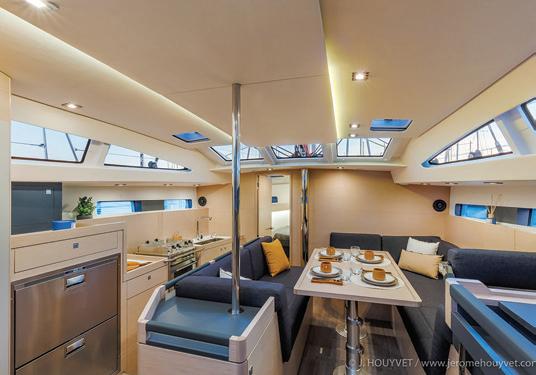
balanced, and our speed jumped to 7+ knots upwind. We were happier, the boat was happier. We still didn’t feel close to being overpowered, but for the first time that day, the Allures 45.9 felt adequately powered, and all design facets were working in harmony.
The bigger sail also made vastly more sense when we turned off the wind. Soon, some commercial traffic inspired us to throw in a jibe, and I was reminded of the compromise with a solent rig when we had to furl the sail in order to jibe it through. For bluewater sailors whose intervals between maneuvers might be many hours or even days, no biggie; but for cruisers in the Pacific Northwest, furling the solent for every tack or jibe would be something to adjust to.
Getting back to the dock, I returned to the swanky cabin. Moving inside and out, you won’t forget the Allures 45.9 is very beamy at 14.5 feet, yet efforts have clearly been made to reduce the functional width (and associated risk) for sailors. The main salon’s settee table is inviting, but provides crucial handholds around its entire exterior. In the cockpit, the fixed table does the same. Every bit as important, the galley is situated so you could lean against the back of the settee seats while working there in a seaway; much better than less natural bracing or even the tethering I know some offshore cruisers do when cooking underway.
In my opinion, there’s just a lot about the design that hits the mark. The Volvo D2-60 diesel (or optional D2-75) is quite powerful for a boat of this size, and the saildrive pushes the boat to efficient cruising speeds above 9 knots. It was cool to check out the centerboard trunk and to see that it does not require a hydraulic system—a winch easily does the job and means remote repairs will be much easier. Tankage is mostly located under the floorboards, keeping the weight low. The port aft cabin has a single berth that doubles as a workbench and provides stunningly good access to the steering system just aft of there. The forward cabin is indeed luxurious, and the starboard aft double berth is cozy. There are two heads, one with a shower that had more than my 6-foot requirement for standing headroom (head configuration options also exist). To me, the layout points to this boat being mainly set-up for long term cruising for a couple who might occasionally welcome guests, or possibly a small family.
The storage throughout is substantial, perhaps nowhere more on display than the massive forepeak storage locker ahead of the watertight crash bulkhead. It’s where I’d keep my code zero, but you could keep deflated paddleboards or any number of other items stowed there and forget you even had them on board.
In sum, it’s a boat of style and sophistication, one that will deliver delight under sail, inspire confidence in rough weather, and is sure to have you charting courses for distant destinations. Its aluminum hull is strong and forgiving should you find yourself on the bottom or hit a log at full speed. The innovations evident at every turn work beautifully together such that the boat feels at home at sea, just as it was intended.
Joe Cline is the Managing Editor of 48° North. Special thanks to Molly Howe and the crew from Swiftsure Yachts for the opportunity to go sailing on this boat.
48º NORTH 33 MARCH 2024
 by Andy Cross
by Andy Cross
WEATHER DEPENDENT
VALUABLE WEATHER WINDOW LESSONS HONED IN THE PACIFIC NORTHWEST
Talk to any sailor long enough and you’re bound to get an earful about one topic: weather. Or more specifically, the wind. It makes sense that we would concentrate so enthusiastically on where the breeze will come from tomorrow, the next day, the day after that, and beyond. It’s what allows us to move under sail, or it stops us in our tracks while we wait for a more favorable wind to carry us on toward our next destination. When discussing the wind and how we’re going to use it to get from place to place, a term you often hear repeated is “weather window.”
For mariners of all stripes, a weather window refers to a period of time when the weather conditions you’ll be sailing in are appropriate to complete a passage. Understanding what weather is coming your way and then using that knowledge to either make the passage, alter course, or wait to avoid storms and potentially rough seas is paramount to the safety of your vessel and crew. As recreational sailors, choosing the right weather window also makes sailing and cruising more comfortable and enjoyable. Perhaps even more important in our experiences cruising on our Grand Soleil 39, Yahtzee, has been the ways that learning to be savvy with weather windows has unlocked cruising routes and opportunities that lead us away from some of the most well-traveled conventional paths.
I should say here that I am not a professional meteorologist, but as an experienced sailor, I’ve been finding weather windows for a long time to get from point A to point B. When looking for a weather window along a route I’d like to take, I think about these major factors: Wind speed and any potential shift in velocity or
direction; wave heights; tides and currents; the likelihood of encountering inclement weather or fog; amount of daylight; and whether or not the barometric pressure will be steady, rising, or falling. Then, as I’m watching these variables play out in real time, I’m open to abandoning the route altogether or making changes to the plan if needed.
Fortunately, in the past decade or so, technology has vastly improved to make weather routing and predicting weather patterns much easier for the average sailor. While I do look at and interpret GRIB files, weather maps, and forecasts, my main tools lately are the apps Predict Wind and Windy. Both offer vast amounts of information about the factors I mentioned above, and I’ve gotten to the point where I know when to trust certain models or predictions, and when to wait for more information. Generally speaking, if the various weather models that you’re looking at don’t agree, the uncertainty raises a red flag and makes me more cautious. Despite all these helpful advancements that we have at our fingertips, boaters (perhaps especially those in the Pacific Northwest) know that nature remains unpredictable, the sea is always changing, and unexpected shifts in weather patterns can, and do, occur.
Before I contemplate any weather window, though, I’m thinking about what the ultimate goal is. Where am I now and where do I want to go, and what do I want that experience to be like? Am I willing to sail part of the passage upwind or am I committed to a window promising a reach or run the whole way? Sometimes you can’t have it all. A long, windy upwind passage will be hard on any boat, but it’s even harder on the
48º NORTH 34 MARCH 2024
Image courtesy of Autumn Helling.
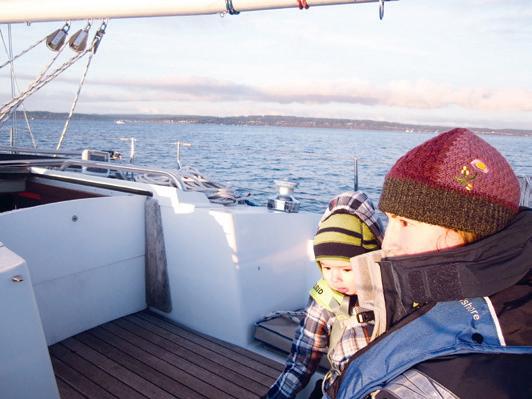
sailors who are trying to eat and sleep while bashing into waves at any heeling angle over about 10-20 degrees. So, crew comfort typically determines the lens at which we look at weather as much as anything else.
Then it’s a question of how far it is and what is the timeline to get there? One of the major keys to planning a route and choosing a weather window is to think about your schedule. Do you have one and, if so, how flexible can it be? This last part is where I’ve evolved most as a sailor in the past 10 years or so. We’ve waited weeks or months in places like Alaska and Colombia for the seasonal shift to bring the conditions we were looking for. No matter how long the passage, being patient and selective about when to go and when to stay has paid off for us.
SHORT HOPS
After years of sailing on the Great Lakes, East Coast, and Caribbean, my wife Jill and I moved to Seattle in 2012 and bought a sailboat to start cruising the waters of the Pacific Northwest. One of the things that we were initially surprised by was how many wonderful destinations were so close to the marina where we lived. We started making short hops on the weekends and figuring out the weather patterns and tides of Puget Sound was a learning process.
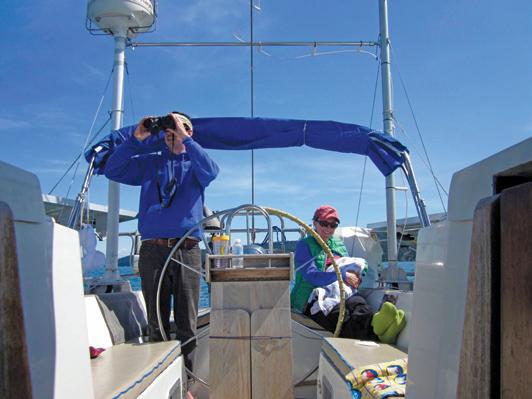
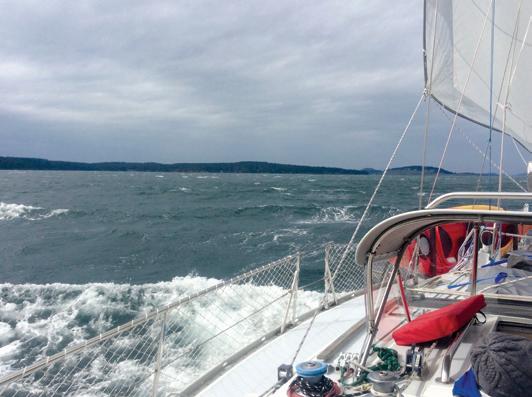
At first, we kept our range from Shilshole Bay Marina relatively small and found so many incredible places to visit nearby. Kingston to the north, downtown Seattle to the east, Blake Island to the south, and Poulsbo to the west created a sort of skewed-rectangle-shaped cruising area that we started to explore. Experience quickly taught us that we had to pay close attention to the wind forecasts and tide tables, even for trips of less than 10 miles.
One early spring weekend, after a lovely Friday and Saturday spent at Blake Island, we went to head back to Shilshole on Sunday and were met with a ferocious northerly breeze meeting an ebb tide. The wind against tide situation kicked up lumpy seas that were close together and, while the beat wasn’t far, it wasn’t fun, either. It ended up being an excellent learning experience, because even though I’d seen the forecasted northerly for Sunday, I didn’t think it would be so strong. Cold wind moving swiftly over chilly water going running the opposite direction packs a punch. I remembered that lesson.
With that forecast, it might have been better to have gone north first and then ride the wind back. Or we could have sailed across the sound to the top of Bainbridge Island and then reached home more comfortably. After that weekend trip, I decided to take a local “weather for mariners” course and to
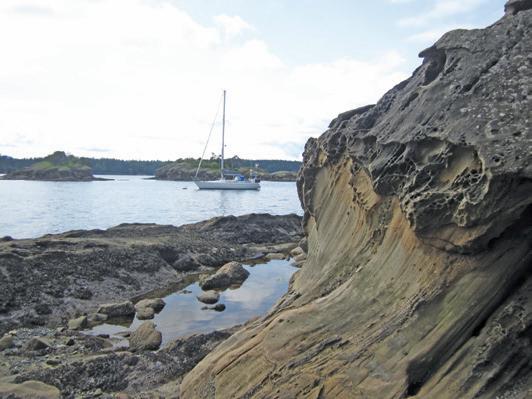
Yahtzee found a comfortable home in the San Juan Islands during the winters, especially here at Sucia Island.
48º NORTH 35 MARCH 2024
Early spring, like this day in April, often brought some of the best weather windows to sail between anchorages.
The author's wife Jill and son Porter look on as Yahtzee sails north in Puget Sound.
A strong winter southerly was perfect for making tracks north in the San Juan Islands.
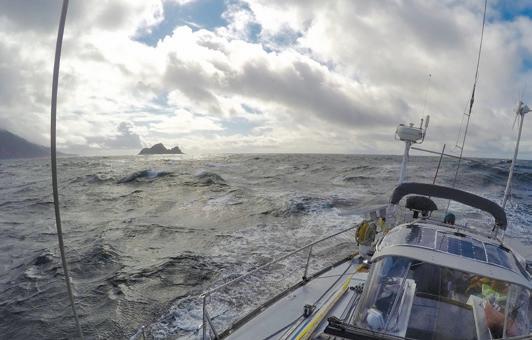
find different sources of weather information to help our short hop cruising strategy be more successful. It helped immensely, and I soon felt confident broadening our horizons beyond our Central Sound cruising bubble.
MEDIUM HOPS
From our short hops in central Puget Sound we started making medium hops farther north and south. Gig Harbor, Tacoma, Olympia and the South Sound, Port Townsend, the inside of Whidbey Island, and the San Juan and Gulf islands all took a bit longer to reach and finding weather and tidal windows in every season was important. When we started stretching our legs, we were also pushing the boundaries of our schedules ashore, which is inadvisable when cruising. So we learned to keep our plans reasonable to alleviate the stress of having to push through a bad weather window or potentially getting stuck somewhere.
When heading out for these longer cruising adventures away from our homeport, I understood that we could plan, but we also had to take the weather as it came. Weather forecasts are most reliable within a 72 hour period, outside of that, it starts to get more variable. Accordingly, we planned our medium hops carefully and linked them up to make longer trips. We didn’t stick to hard-and-fast destination decisions outside of the 72 hour window and, when possible, we had several suitable anchorages or ports in mind should the weather change and we needed to duck in somewhere.
On one two-week trip to the San Juans, we caught an

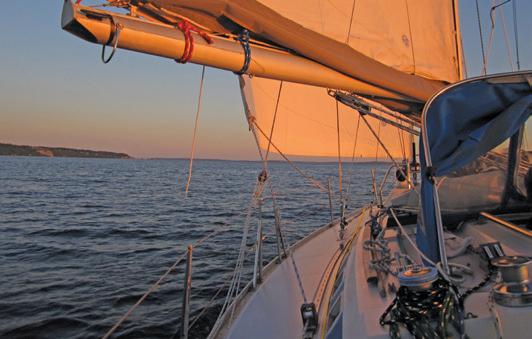
excellent weather window to get north to Port Townsend and then across the Strait of Juan de Fuca in a southerly. Once we got to the islands, the weather deteriorated for a few days and we tucked into anchorages that best fit the weather. When it was time to head back south, we started watching the weather well in advance and the best option was to leave slightly earlier than planned and head to Anacortes, then down the Swinomish Channel, inside Whidbey Island to Langley, and back to Seattle. It worked like a charm. In essence, we learned to remain flexible and found more joy in cruising because of it.
This is an aspect of cruising in the Salish Sea that is particularly special. In addition to selecting appropriate weather windows, there are often multiple routes offering alternative experiences, protection from wind and waves, more or less current, and a different array of hidey-holes to take cover in, should you need it. Still, you have to plan wisely to make it all work.
LARGE HOPS
After almost two years of doing these short and medium hops, and with two kids in tow at this point, we cast off Yahtzee’s dock lines for full-time cruising. Now able to travel much farther, weather windows became an even more important part of the lifestyle. During trips to Desolation Sound and around Vancouver Island, we learned a lot about when to go, when to stay, and when to just call it a day if the weather changed. While tacking up Queen Charlotte Strait in a brisk northwesterly, we made the snap decision to seek a calm anchorage in Booker Lagoon. Such a relief after what turned out to be a long day.

By staying flexible and being savvy with forecasts, cruising to Alaska was a downwind affair.
48º NORTH 36 MARCH 2024
Rounding the infamous Brooks Peninsula in a southerly breeze was the right way to go north.
An evening breeze and ebb tide provided the best ride from Seattle to Port Townsend.
Sailing down the east side of Cypress Island on surprisingly delightful winter’s day.
And before rounding the notoriously boisterous Nahwitti Bar at the top of Vancouver Island, we waited in nearby Bull Harbour for the right wind and sea conditions to make the rounding.
During the winter months, we kept it short and cruised the San Juan and Gulf islands. It was here that we gained an acute understanding of the seasonal weather patterns far more intimately than while living in the relative comfort of a marina.
This was before the Windy app was really a thing, and GRIB files and weather information from NOAA and Environment Canada were essential to picking the right windows. If we needed to stay put for days at a time, we did. And when it was time to go, we made miles. During this time, we started to seriously plan our voyage to Alaska and to think about routes and what weather windows would be absolutely necessary for a safe and mostly fun trip north.
What we settled on was an unconventional route out the Strait of Juan de Fuca, up the west coast of Vancouver Island to Haida Gwaii, and then on to Southeast Alaska. The idea to go outside spawned shortly after we circumnavigated the island. It was summer then and the north and west winds were prevalent, yet we knew that spring southerlies on the ocean could present an opportunity to ride north. Sure, the seas might be larger, but we’d actually have wind. If we took the inside route, the winds would be far more variable and we’d likely need to motor more, especially in narrow, current-swept channels. To us, potentially waiting for weather windows and sailing more sounded much better than potentially signing up for long days under power. Outside it was.
We left Victoria in late March 2017 on an unusual easterly wind and ebb tide that flattened the seas through Race Rocks and spit us out to Barkley Sound. The first weather window had worked. Once there, we endured two days of wind and rain before beautiful spring weather settled over the region. Closely following the forecast, though, we knew a big spring southerly was coming so we got a slip in Ucluelet to wait for the tail winds and to top up on food, water, and diesel.
Then, using the southerly winds as the storm passed the island, we made hops up the coast. Again, by waiting for the right moment, the window worked out. From Quatsino Sound on the top of Vancouver Island to Haida Gwaii and then to Alaska, we successfully used this stop and go method and ended up only encountering light headwinds for about 90-miles of the entire passage. Overall, the nearly 800-mile journey north took a month, but by being patient and not sticking to a schedule, we got a bigtime education in playing the weather to our advantage and enjoying the rewards. Little did we know, this would pay off over and over in the years to come.
Now, seven years later, as I write this from Yathzee’s nav desk in a beautiful bay on the east side of St. Thomas in the U.S. Virgin Islands, I can say that the experience we gained in the Pacific Northwest and Alaska was incredibly profound. Fighting the infamously strong easterly trade winds that flow across the Caribbean Sea was a tall task, and making those small, medium, and large hops in the most favorable conditions possible was critical. From Panama to Colombia, Aruba, Curaçao, Puerto Rico, and now the Virgin Islands, it wasn’t always easy, but by employing what we learned all those years ago, it has been
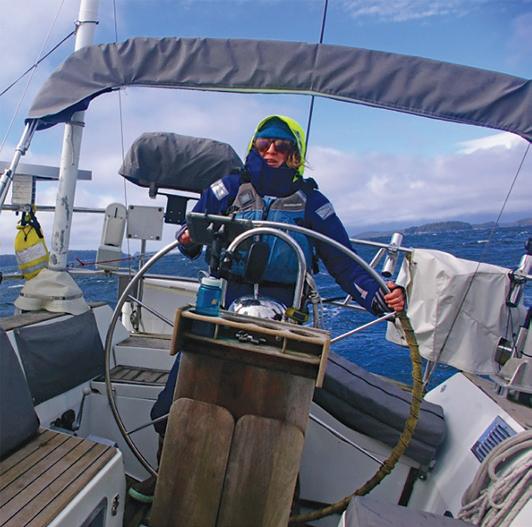
doable and became almost routine. Our boat and family can handle it, we typically know what to expect on passage, and we have appreciated the new routes that have been unlocked by this approach, which feels like a priceless education.
Andy Cross is the editor of 48° North. After years cruising the Pacific Northwest and Alaska with his family aboard their Grand Soleil 39, Yahtzee, they sailed south and are currently in the Caribbean Sea. You can follow their adventures at SailingYahtzee.com
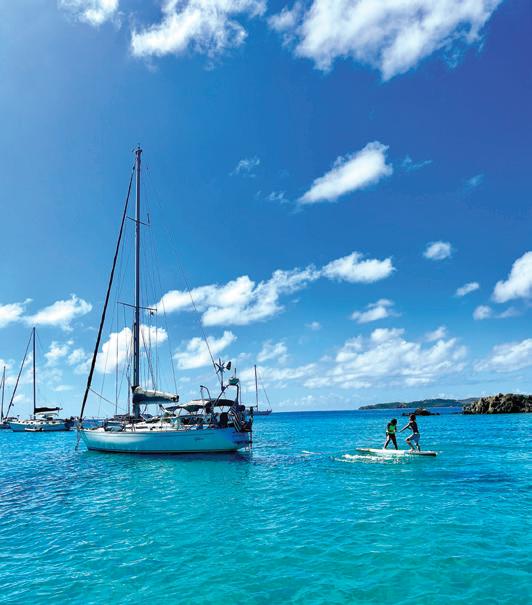
48º NORTH 37 MARCH 2024
Anchored near St. Thomas, USVI, the Yahtzee crew relishes the rewards after hard-fought miles to weather.
Jill is steady on the helm on a run towards Southeast Alaska.
THE DREADED LOPEZ CHANNEL
MAKING IT INTO FISHERMAN BAY TAKES PATIENCE AND A SINGSONG ASSIST
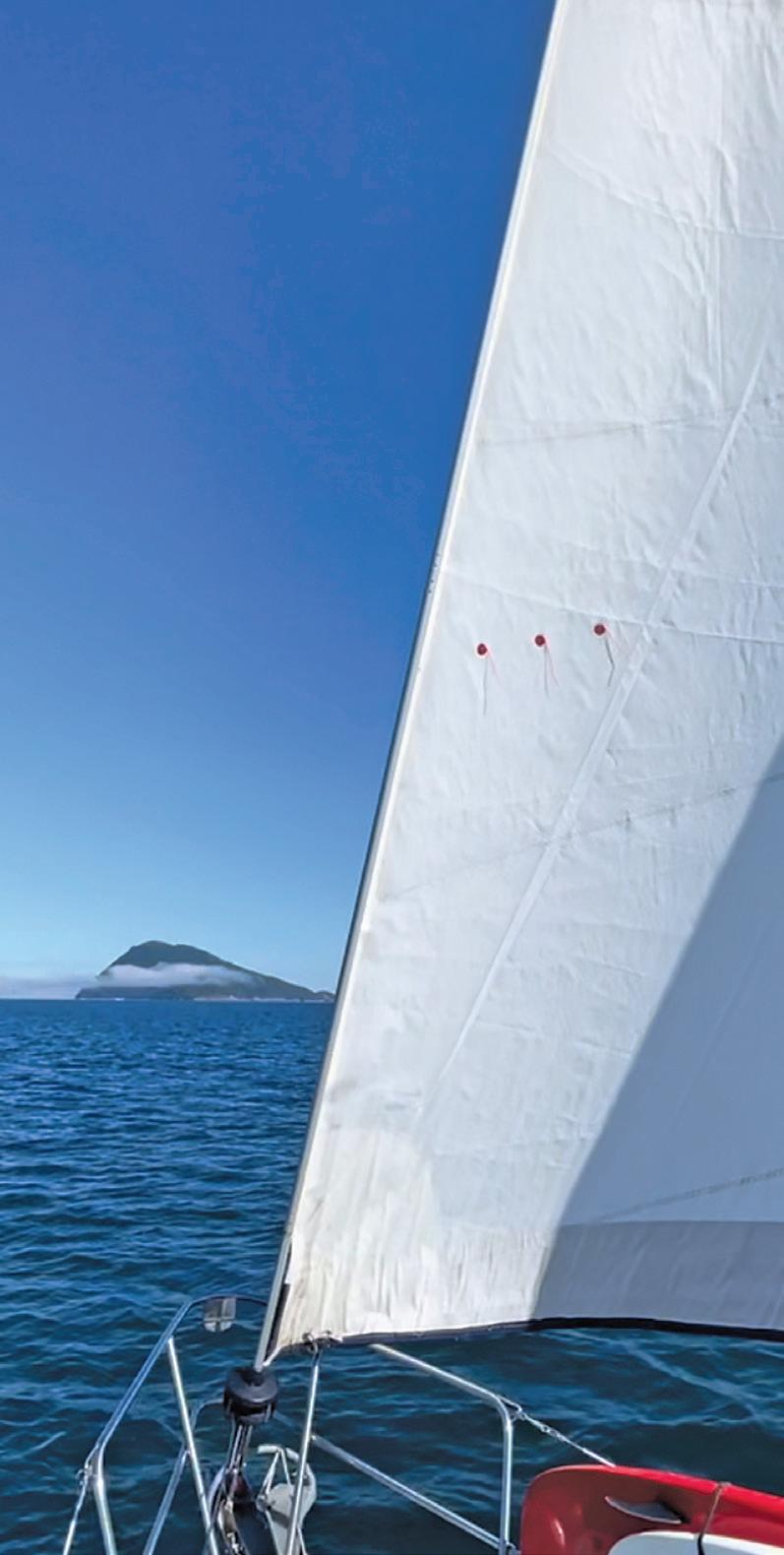 by Jennifer Dalton
by Jennifer Dalton

My second sailing trip on my new-to-me J/28, Wild Rose , was to Lopez Island for an annual summertime gathering. It’s a special destination and time for me. I had been boating or camping on Lopez Island for 13 years with my two kids (now young adults) along with my friends Sarah and Paige and their kids, for the Lopez Island Sailing Camp. We called this week-long trip the “chosen family reunion” and Sarah had committed to sail with me over to Lopez on Saturday. Everyone else was to meet us there.
On a sunny Saturday in the middle of July, Sarah and I departed from La Conner. Sarah, a non-sailor, was content to be a passenger. I was okay with that because it would give me an opportunity to practice my solo sailing skills and learn more about Wild Rose. She napped while I tacked across Rosario Strait and then up toward the top end of Lopez Island. We took our time and the conditions were ideal; the wind was blowing 12 knots from the southwest, the sea was flat, and Wild Rose performed phenomenally.
At this point, Sarah and I had made it from the north end of the Swinomish Channel, through Guemes Channel, across Rosario, and into the San Juan Islands. Now in Upright Channel approaching the entrance to Fisherman Bay, I was feeling pretty great. Then, I thought about the dreaded Lopez channel ahead (labeled on the chart as Fisherman Bay Inlet). Here’s what the Navionics charting app has to say about it: “Fisherman Bay is a shallow lagoon entered by a marked, narrow, and tortuous channel. A rock awash is on the
MARCH 2024
The “tortuous channel” part of the charting app's description might as well say “torturous” since its shallow depths and the infamous rock have snagged more than a few boats over the years.
east side of the channel at the mouth of the bay. Good anchorage with shelter from all but southwest winds at the bottom of the bay may be had in 10 to 12 feet, soft bottom, for small craft with local knowledge. The tidal currents have considerable velocity.”
The “tortuous channel” part of the description might as well say “torturous” since its shallow depths and the infamous rock have snagged more than a few boats over the years. There is a spit on one side of the channel and homes on the other, and when a boat gets stuck on the rock or in the shallows, people tend to gather on the beach to watch until the flood tide floats it off. I didn’t want to be the island’s entertainment that evening and had no intention of making the Lopez news, and of course didn’t want to do any harm to Wild Rose.
Sarah was in the cockpit with me and the tide was beginning to flood. I rolled in the jib, pointed Wild Rose into the wind, and dropped the mainsail. I was watching the depth on Navionics closely and motored slowly past the first beacon. Wild Rose has a 5-foot draft and the depth was already limited, reading 10 feet. I inched forward until the depth bounced between 5 and 7 feet, and turned us around instantly—profanities hanging in the wind. I felt like a real sailor now.
I was incredibly grateful to motor back into deep water and

It was a beautiful July day to sail through the San Juan Islands.

48º NORTH 39 MARCH 2024
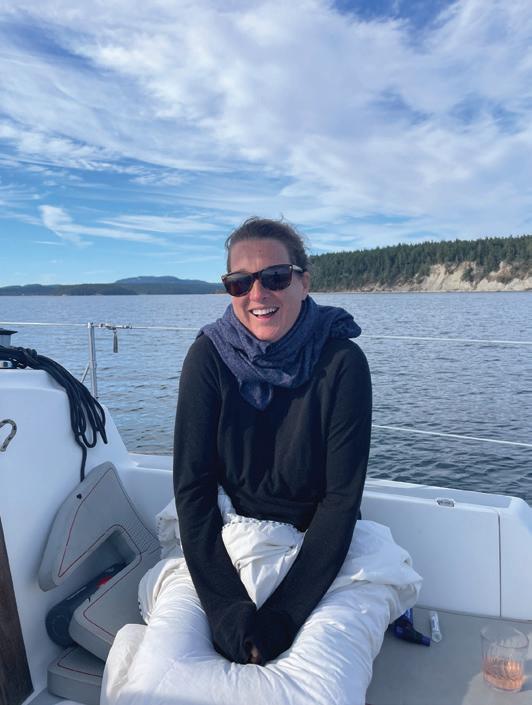
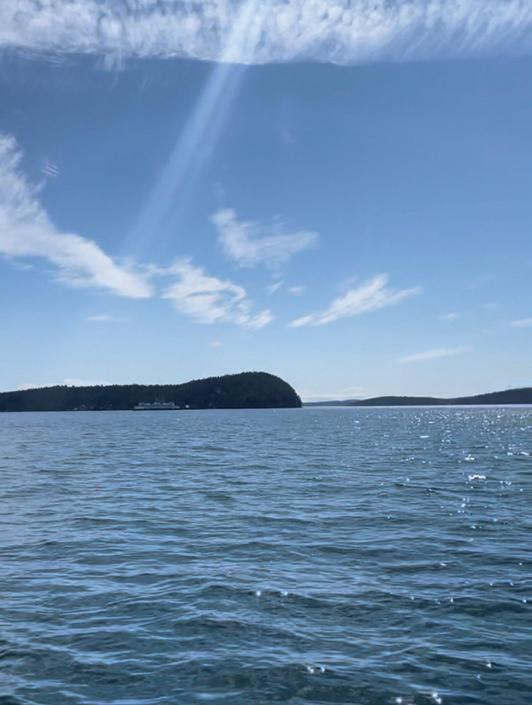
take a moment to calm my beating heart. I told Sarah we would have to wait an hour for the tide to come in. Sarah was cool about our slight delay and brought up some wine to share while we watched the sun begin to set.
I took the time to relax and analyze our next approach. There was no turning back. I didn’t have radar set up and really didn’t want to find an alternate anchorage in the dark. I was going to have to make the run through the dreaded channel. Fortunately, it was a glorious evening with a golden sun shimmering along the water right up to our hull. We waited patiently and I secretly hoped that another sailboat would come and try to enter the bay so we could follow.
An hour after our first attempt, there was no sign of another sailboat. However, we were losing light and I knew it was time to try the entrance again. I followed my exact route and muttered nervously as I passed the beacon. Sarah, sensing my nerves, began to sing quietly. It brought back a memory of when I had freaked out on an adventure zipline course in Nanaimo, British Columbia. I was with my family, nieces and nephews, and we were on the fifth level, the black diamond part of the course, 75 feet up, when I froze. I was stuck. My body shook from fear. I asked for a rescue. I wanted a ladder, I wanted to get off.
I had clogged up the course, and the family members behind me were now stuck and waited somewhat patiently for me to move. Other members were ahead and even came back to see what the hold-up was. The end of the course was in sight. Everyone was encouraging me to continue. I was being told what to do from all angles, but that wasn’t helping my nerves. I knew everyone was right, but I was terrified and hated them all at that moment.
And then, for some reason, the song, “In the Jungle, the Mighty Jungle” from the movie The Lion King, came to mind. I started to sing it. When I got to the chorus, “A-weema-weh, a weema-weh”, I yelled for everyone to sing. Thinking I was joking, everyone laughed. Then my niece, Johanna, started to sing. She and I had been working together along the course, encouraging each other while facing our fears of heights.
Soon, the adventure zipline course treetops buzzed in unison with the chorus from the iconic song. I grabbed hold of the narrow swing and stepped onto it. I swung back and forth until I gained momentum and reached the second swing, all the while holding my tune, “In the jungle, the mighty jungle.” Once I felt the thick rope in my hand, I kept my sight on the swing, not the 75-foot drop. I had momentum now and stepped from swing to swing. When I reached the platform on the other side, the forest canopy erupted in cheers.
Back on Wild Rose, I was facing a similar fear. The singing helped me focus. Just past the first beacon, the depth bounced between 10 and 12 feet. I could feel my heart beating. Families were eating dinner on the decks of their nearby homes and we sang as we passed by. We continued to sing past the channel’s beacon, the notorious rock, and the shallow edges of the channel. Only when we reached the safety of Fisherman Bay did the singing cease.
It wasn’t quite dark yet when we docked, but it was close. I was incredibly relieved when I nailed my docking at the marina with the help of a man from a neighboring boat who grabbed our
48º NORTH 40 MARCH 2024
The author’s friend, Sarah, enjoys the ride en route to Lopez Island.
The top of Lopez Island means Fisherman Bay is getting close.
lines. I’m not sure the engine was even off before Sarah handed me a well-earned cocktail to celebrate our achievement. I raised my glass to thank her. The singing had worked to calm my nerves and kept me focused as I navigated to the marina.
Soon, we heard live music stream out across the bay and, no, it wasn’t us this time. It was Saturday night and the Islander Marina Pub was hopping. Part of our annual mom’s escape to Lopez is dancing to the local band at Islander Marina—it’s always a great memory, even if not the clearest one of our time together.
It had been an epic day of sailing, an incredible moment of friendship for me and Sarah. The feelings of relief and accomplishment set the tone for us to be truly ready for a classic Islander night out. All in all, it was a day I value and remember fondly from my early days with Wild Rose And I didn’t make the Lopez news, well, not for sailing anyway.
Jennifer Dalton is an avid adventurer and traveler. She is originally from Vancouver, B.C. but raised her children in Washington. Now an empty nester, Jennifer has rediscovered her passion for sailing. She began her love for the wind and water when she was a teenager and has always spent time on the ocean whether it be windsurfing, kayaking, sailing, or diving. She is the owner of the marketing company Northwest Nooks.
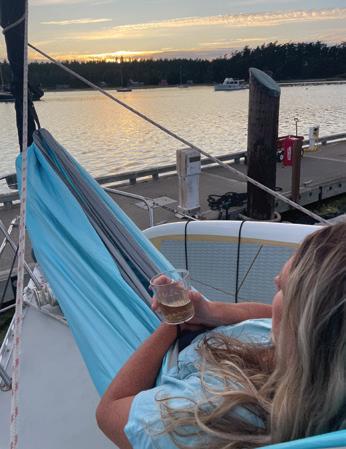
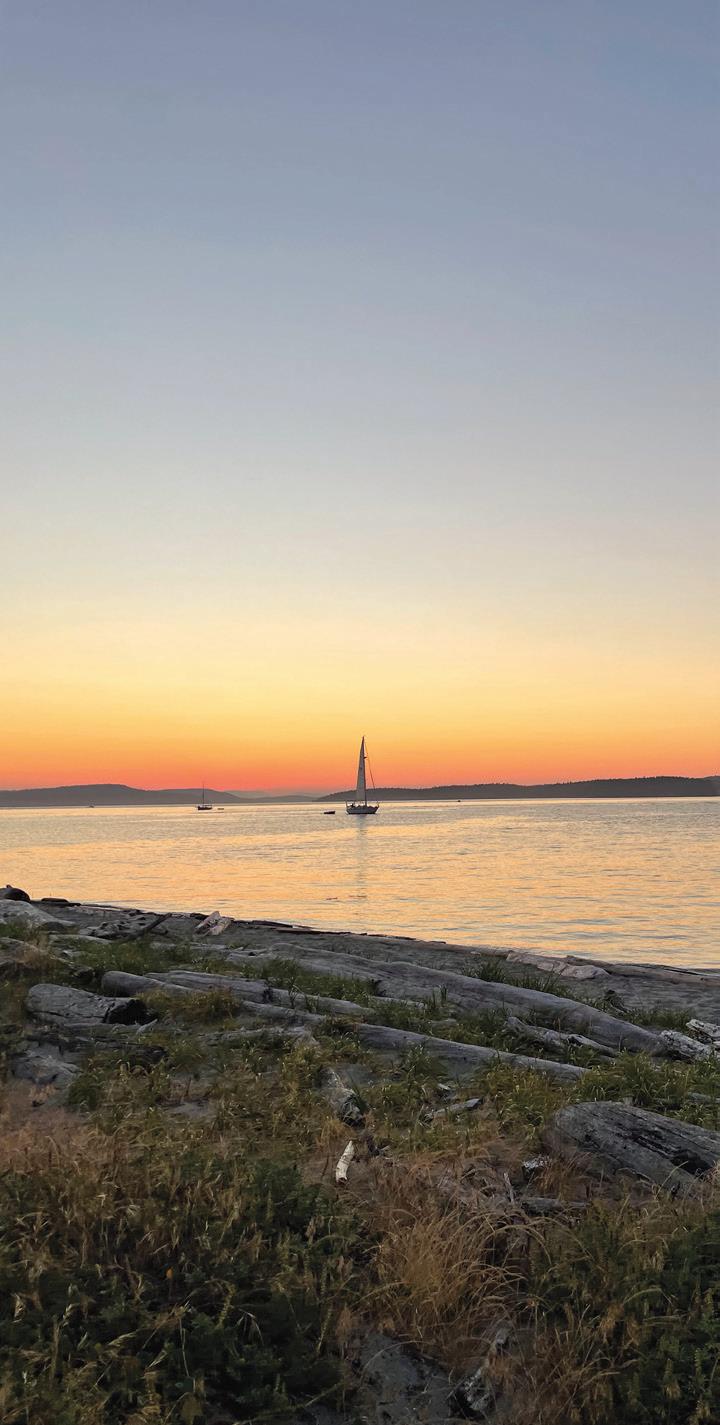
48º NORTH 41 MARCH 2024
Wild Rose approaches the infamous channel into Fisherman Bay.
After successfully transiting the channel, it was cocktail hour in the hammock.
PNW HERO: CHRISTINA WOLFE
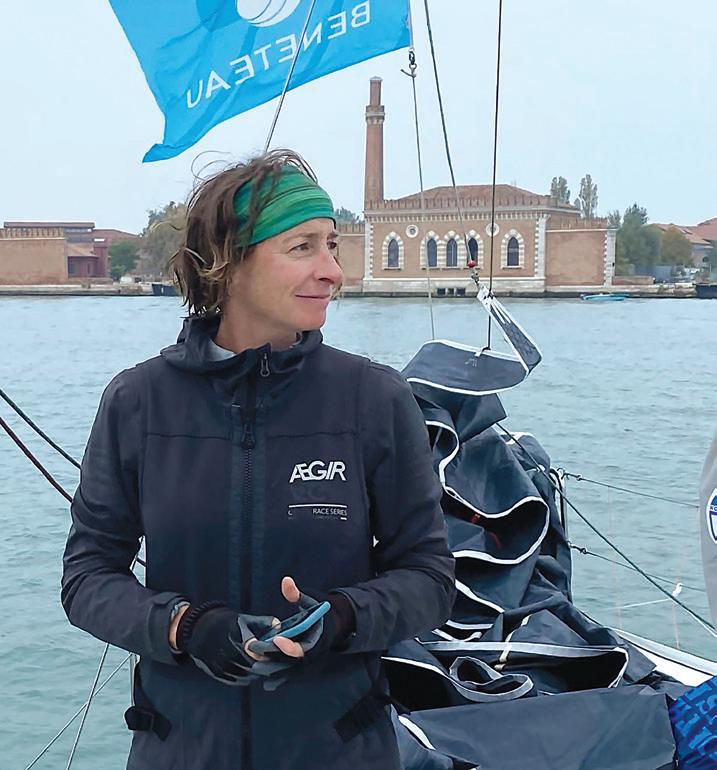
Orcas Island sailor Chris Wolfe was recently chosen as the 2023 Rolex Yachtswoman of the Year. This is generally considered the United States’ highest honor in sailing. We are extraordinarily proud and humbled to know Chris, who has frequently shared her stories with 48° North. Please join us in congratulating her!
48° North: How does it feel to be the Rolex Yachtswoman of the Year and what has the response been like from the Pacific Northwest sailing community?
Chris Wolfe: It’s been a bit of a whirlwind, and such a huge honor! Sailors from the Pacific Northwest are the best. We really support each other and I’ve been feeling a lot of love. Friends have reached out from Canada, our North Sound groups, and the greater Seattle sailing community. I feel so lucky and very proud to be part of this community and all that we’ve
done over the years. I love keeping up with the local racing, checking out the 48° North Top 25, reading about the boats, and following others’ accomplishments; and when people I’ve looked up to and learned from over the years are reaching out, it’s so special.
I feel like this award is for all of us in the Pacific Northwest. Though we’re sailing Red Ruby internationally, we wanted to bring the Pacific Northwest with us, so we named the boat after the smallest octopus in the Salish Sea.
by Joe Cline
The only other Pacific Northwesterner who has won this award is Bill Buchan in 1984. What's it like to be in that company?
It’s really amazing. Justin and I were talking about that. 1984 was also when Carl Buchan and Jonathan McKee won their Olympic gold, so it must have been a crazy challenging evaluation for who received that award, just among Northwest sailors. But yes, over the years and now, there’s so much talent here. And I’m honored to live and sail here, and represent the PNW.
What was the ceremony like? Were you starstruck?
It was just amazing to be in that room in Savannah, an incredible honor and opportunity to talk with people who have done some remarkable things in our sport.
I was at the same table as Charlie Enright, and yes I was starstruck. Years ago, we watched the movie Morning Light. We also had the opportunity to go to the start of the 2014 Volvo Ocean Race in Alicante when Charlie was the skipper on Alvimedica. I still have the orange Alvimedica hat, it was the boat we were cheering on! Charlie is so great, super personable, it was fun to talk with him. Trying to win the Ocean Race has been such a huge effort, it’s been 10 years of his life.
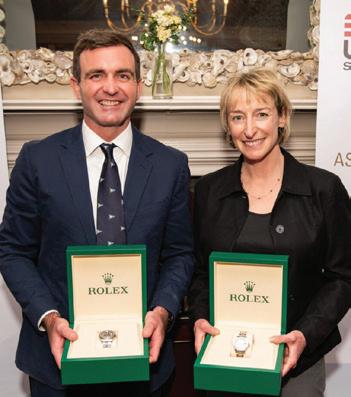
48º NORTH 42 MARCH 2024
Chris and Charlie Enright receiving their Rolex Yachtsman and Yachtswoman of the Year awards.
Not many previous Yachtsman and Yachtswoman of the Year winners were focused on offshore sailing. Both you and Charlie Enright primarily compete offshore. What does that say about the way offshore sailing is perceived today?
I do think it’s amazing that offshore got a bit of the spotlight this year. Because most of the races that we did and Charlie did were not in the U.S., there’s been quite a lot of discussion about that.
There was quite a bit of interest a couple of years ago during Covid and when mixed offshore doubles were being evaluated to maybe become an Olympic sport. My sense is that it dropped off the radar for a while. These awards show US Sailing is still taking this seriously.
There are a lot of sailors who are interested in shorthanded offshore sailing in the U.S., but we don’t have a lot of races, nothing similar to what exists in Europe. But it sounds like there’s real interest, and there’s a lot of talk of adding shorthanded divisions to existing races.
You also sail inshore with your J/70 and other boats. How do you think about racing in the inshore environment versus offshore?
We’ve been fortunate to be able to be part of the J/Pod group with the J/70s and with Ron Rosenberg’s leadership, to develop skills with boat speed and maneuvers around the buoys. We’re taking all of that to the offshore world. During Covid, we were doing buoy races
doublehanded on our J/111 and those techniques for quick boat handling translate well offshore. Efficiency with those things means you’re not tiring yourself out, which is critical offshore. Offshore is really an endurance race and energy is one of your most limited resources. Even managing it carefully, you always lose it when you’re sleep deprived at the end of a long race—on the three Hawaii races that we’ve done, we were hallucinating at the end.
Offshore, you’ve really got to be an all-arounder. Things break, and we have to deal with it, so you need to have a pretty good understanding of all of the systems. You may not be at an Olympic level at this or that element, but doing everything well enough is a really good thing offshore.
We love all of the preparation and time spent thinking about offshore events, and I think that’s translated to the inshore stuff. Race to the Straits is one of our favorite races of the year and we now think about everything for a twoday race like we would an offshore race. We can’t emphasize how important the preparation is—the boat, the rating, etc.
48° North readers have followed a lot of your sailing through your column, but please sum up your incredible 2023 season.
First and foremost, I am such a lucky person, I get to sail and do these races with my partner in life, and we have
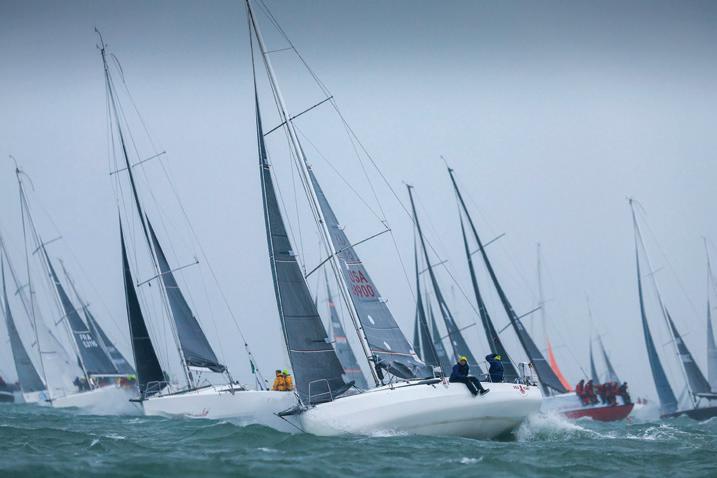
such a fantastic time. We get to enjoy the process of getting ready for the adventure, the experience itself, and then we have the memories to look back on.
In 2023, we had three main events. The first one was Van Isle 360, which we did on our J/111 Raku as the only doublehanded boat in the fleet. That was an amazing race, including some pretty gnarly downwind sailing on the west coast of Vancouver Island. When it was blowing 30 and we had the kite up, we ran into an issue while taking the kite down, wrapping a sheet around our rudder. Our rudder was completely stuck. Stuff happens offshore, and you need to have the mental fortitude to be calm and figure out how to get through it and move on. We tried deploying emergency steering. Eventually, we managed to get things free because we got broadsided by a wave, and that jostled things and allowed us to figure out the right way to free the rudder. Recovering from steering damage, and being aware of what you can do if you lose steering, is super important for any offshore sailor. In that situation, the next thing we would have done would be to deploy a bucket or a similar system, and wait until the waves and wind came down enough we could dive under the boat. But we were fortunate to have that wave help free things up.
The two big races we did on our SunFast 3300 were Fastnet and the Middle Sea Race. Fastnet was a big one, it’s the

48º NORTH 43 MARCH 2024
Red Ruby in the foreground, naiilng their Fastnet start in rowdy conditions.
The Wolfe's J/111 Raku heading into Winter Harbour during Van Isle 360. They were the only doublehanded boat. Photo by Kevin Mueller.
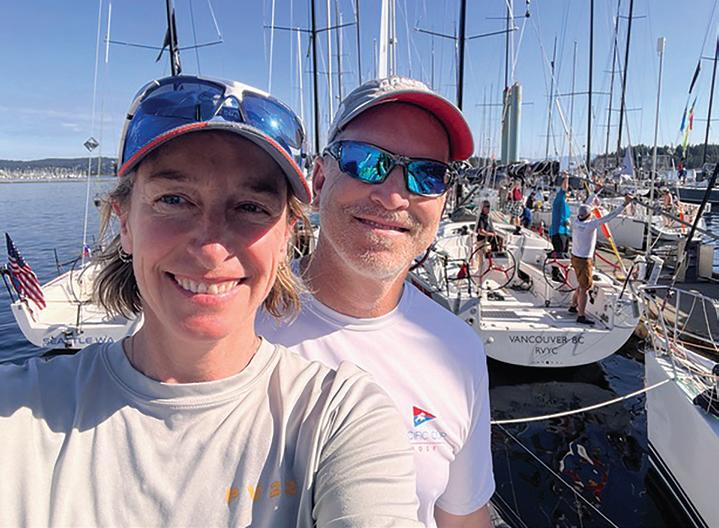
world’s biggest offshore race. There were more than 500 boats, over 100 of which were doublehanded. Thanks to some practice in the days preceding the race, we nailed the start. But it was blowing 25 and, a couple hours later, we were seeing 38 knots with wind against current, so the wave state was horrendous. I ended up cracking one of my ribs, but you can’t do anything about it, so you deal with it and go through all the ibuprofen on your boat. We ended up seeing three storm systems go through that race. It was a reminder that there’s always change going on in these long races. (Editor’s note: In the end, Chris wound up being the top finishing female skipper in the entire 500 boat fleet).
Then, in the fall, we did the Middle Sea Race, which was a completely different race. It was so much warmer, we’d never been to Malta, and we got to go by an active volcano! There were about 100 boats, but there were fewer than 10 doublehanders. When we go to these races, though, it’s always about racing all of the boats. In that race, we ended up making some really good calls and found ourselves on the leaderboard for the overall. As we were nearing the finish line, we were at the top of the leaderboard doing everything we could to gain as many meters that turn into miles. We ended up missing the overall by 24 seconds, but we put everything out there. It was an incredible experience! (Editor’s note: Chris and Justin came 2nd overall under IRC, the race’s official
handicap system, but were 1st overall under ORC.)
Which of those events are you personally most proud of?
They’re all so different. I’m probably most proud of Fastnet, because it was such a grind. Toward the end of the race, I really wondered, “How is this fun?” It was so hard, you could never get dry, and I was in pain because of my rib. But we just kept going and going. I think I’m proud about that one because of the mental side.
You’re an inspiration to all sailors, perhaps especially women and girls. What has been important to your development as a female sailor, and what are the best ways to empower the next generation of women and girls in sailing?
I didn’t get into sailing in the most traditional way. I wasn’t an Opti kid. The first time I was on a sailboat was on my friend’s Catalina 30 when I was 16 years old. So I came to racing from a keelboat first and then started racing at UW on FJs and 420s. Then, I met Justin and started doing a lot in sailing.
US Sailing has startling statistics when it comes to gender disparities in sailing. When kids start out they’re participating pretty much 50-50 girls and boys. As kids get older, the gender ratios skew to where women are not participating as much. I think the biggest thing is: enjoy it. Do as much as you can. Drive as much
as you can. Ask questions. Be in charge. Sail with people that you really enjoy being with. That can really transform how we see this dynamic play out in the future.
Justin and I made a change years ago, I started doing most of the driving and he started doing most of the crewing, and we acquired skills that neither of us had. The first time I took the tiller on his Sonoma 30 and he went to work the foredeck, I think we put the kite in the water and ran aground at Meadow Point. Suddenly there was this empathy for what the other person was doing. Now we do everything about 50-50, but that was important for us to develop skills that we had less experience with.
I think that’s important for women and girls because a lot of people think, “Well, that’s not what I’m good at. So I’m going to focus on what I’m good at.” Identify those opportunities for improvement.
Especially after winning this award, other sailors will be clamoring for you to mentor them, but what has having Jonathan McKee as a mentor meant to you?
Both Jonathan and Ron Rosenberg, in very different ways, have been stellar mentors and coaches for the sailing I have done. We met Jonathan years ago and he has always been one of these calm, friendly sailors who’s happy to talk with anybody, but I really didn’t develop a relationship with him until he came to Italy with Justin and me for the Doublehanded Worlds. We spent 400 miles with him, getting all this time to talk with him about doublehanded racing, considerations on one design boats, and lots more.
Jonathan’s mentorship has been a lot about his approach to sailing. It is very technical and he sees things and shares them, but it’s also the leadership he shows by how he wins, how he loses, and how he handles relationships. This creates this environment where sailing is about being the best we can be as sailors and enjoying the community that we have.
Sailing is this amazing adventure, but it is something to be shared, and it’s also something that we can all improve at if we’re helping improve other people.
48º NORTH 44 MARCH 2024
Chris with her husband and doublehanded sailing partner, Justin, at Van Isle 360 in 2023.
What should sailors who are just learning about Chris Wolfe know about you that might not be listed on your CV or mentioned among your Yachtswoman of the Year accomplishments?
The big thing that I’d like for everybody to know about me is my love for nature and interest in making sure that we’re all taking care of the environment. I used to do a lot of work with herpetology and salamanders. I once retrieved an 11-foot alligator for the state record in Oklahoma. It’s now in a museum and I had to prepare that specimen.
I’m a huge bird watcher. I keep trying to remind myself to keep more of an eye out when we’re racing, because we tend to be very focused, but if I look around I might notice, “Oh look, there’s a laysan albatross,” or “Wow, was that a blue whale?” That is an important part of the person I am, and sailing is a big part of that because it’s complementary—I can be in the environment and see these things while I’m sailing.
What advice would you share with people who aspire to sail like you do?
Start raising your hand, start offering to do whatever you can do to learn about all of the systems of the boat. You never know what opportunities might come up. Sometimes it’s like, “Does anybody know how to change an impeller?” Knowing that skill and being able to do that suddenly might set you up for opportunities in the future.
I’ll also say, and this is coming from a self-identified introvert: relationships really matter. Break out of your shell. Reach out and try to educate yourself by

As great as 2023 was, the two doublehanded teams that make up the Red Ruby Project have big plans for the year ahead too!
asking for feedback from people you’d like to do similar things to. Through those relationships you develop, even over email, suddenly opportunities may come your way. And people also remember how you treated them. Sometimes at the end of races, we need to talk to other racers about what happened out there. Try to keep that a positive thing. Remember how to hold your head up and be a good racer that people want to race with.
What's next for you in sailing?
We’ve got a big race on the horizon in April. We’re going to do a transatlantic called the Cap-Martinique. There will be 70 other shorthanded boats, mostly French boats, which is a big deal because this is part of the sport that the French dominate. We’re the only American boat. The race begins in La Trinité, France, goes around Madeira, and then across to Martinique. It’s 4,000 miles, or essentially two Pac Cups.
Then, if we can get all the logistics together, we’re talking about doing Sydney Hobart. This is super exciting, but what’s even more exciting is that we may be doing that as a two boat team—Jonathan and Alyosha in one boat, and Justin and I in another. We could potentially be preparing for that in that manner, which would be huge to do such an epic race.
With the two-boat program, is the Red Ruby Project looking at buying another boat or chartering?
No, we would be chartering. It’s likely a huge effort to get Red Ruby down there. One of the cool things about the Red Ruby Project and this boat sharing idea, it starts to make you think about boats in a different way. We may be able to offer Red Ruby to others in exchange for using a different boat in some of these other races. And maybe it’s a lower cost alternative to having to own one boat and move it around. In a way, it’s about thinking of options and alternatives to make boats more useful for people who want to do these bucket-list races.
Joe Cline is the Managing Editor of 48° North. Congratulations to Chris Wolfe on this extraordinary honor, and our gratitude to her for sharing these stories and ideas with 48° North!







Presented by:
48º NORTH 45 MARCH 2024
15/16, 2024
June
l All J Boats Welcome l Shilshole Bay Marina, Seattle
FUN IN THE SOUTH SOUND
TOLIVA SHOAL 2024
 by Peter Stewart
by Peter Stewart
Co-hosted annually in mid-February by the Olympia Yacht Club (OYC) and the South Sound Sailing Society as the third of four races in the Southern Sound Series, the Toliva Shoal Race can deliver anything from snow on deck to a sunny 60-degree day of gorgeous winter sailing. The scenery of the South Sound makes for a great experience on the water regardless, but especially when the mountains are out. All of this combined with strong currents makes this a challenging race.
The course makes its way in an ‘S’ pattern out and back—north from Budd Inlet, turning south leaving Johnson Point to starboard to a government mark near Nisqually Flats, then essentially
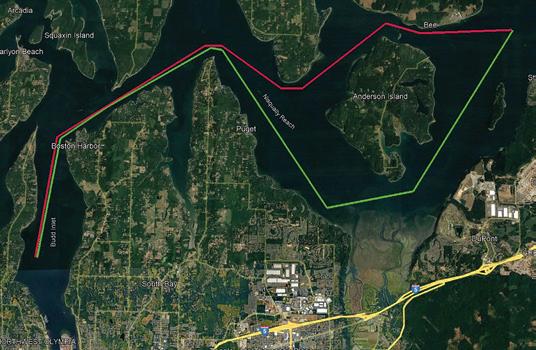
circumnavigating Anderson Island as you make your way back— so you change points of sail several times.
On Friday, the delivery of our Cal 33, Cherokee, was pleasant and started early to catch some of the flood tide through the Tacoma Narrows. We made good pace to Fox Island and entered Budd Inlet around noon. Inspiring views of the Olympic Mountains and Mount Rainier were on display at sunrise. Along for the ride was Lonny Marble, a long time crew member and friend going back to grade school. We settled in and helped send our friend JJ up the mast of her Hobie 33, TC, before heading to dinner and then making an appearance at the club.
We got a good night’s sleep, and in the morning made a trip to the store before getting breakfast at OYC, which was provided by some great volunteers. By this time, our crew started showing up to the docks. After a few tasks, we were ready to go racing. Even after the half hour ride out to the starting area, we were pretty early. The forecast models had some variation, from northwest winds at 5-10 knots to northeast 5-10 with another one being a complete mixmaster.
Milling around the start, the winds oscillated west-northwest to northwest at 6 to 8 knots. Starting near the pin end below the Ranger 33, Aurora, we sailed up Budd Inlet toward Dofflemyer Point. I estimated we would have some current eddy to help us get up the east shore of Budd Inlet. We footed toward the east on port tack and the eddy did pick up, but we were also sailing into a header and were lower than Aurora. Tacking back to starboard, Aurora easily crossed in front of us.
Sailing into Dana Passage, the wind got light, then went to
48º NORTH 46 MARCH 2024
The winding Toliva Shoal course. Green line is the outbound route, red is the return trip.
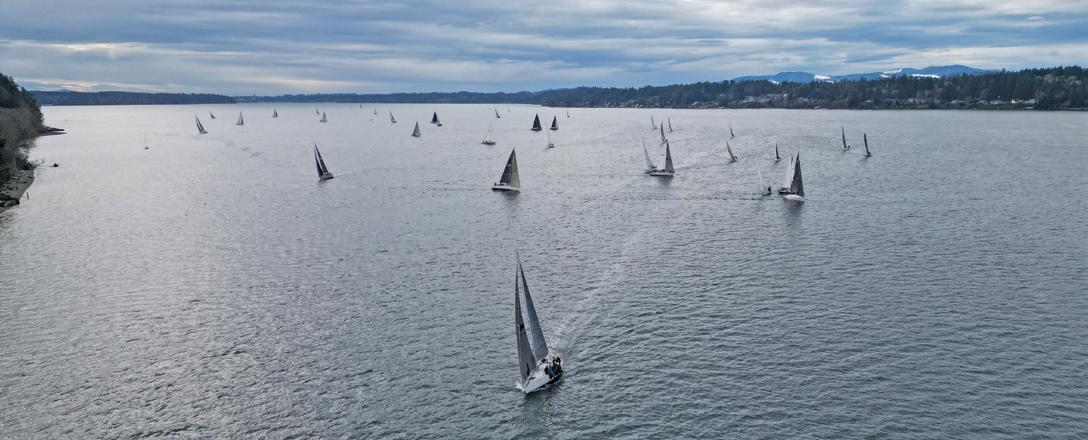
zero. We used the drifter and then the A1 to move through the crowd of boats filling Dana Pass. Exiting Dana, there were signs of breeze coming down Case Inlet. The boats that stepped into that wind first legged out on those behind. Now with a genoa up, sailing into that new breeze as we headed toward Johnson Point, we plotted the next leg. It would be a run to the government mark at McAllister Creek.
With our S2 kite up, we made big gains on Aurora, rounding a few minutes after them and jibing at the mark. Reaching crosscurrent towards Lyle Point, we had a staysail up for a while as we reeled in Aurora.
Since we were on the fastest leg of the day, I called for a toast honoring my old friend Darrin Towe, a beloved sailor who was tragically lost in a plane crash earlier this month. My friend and crewmate, Gordon, went down to ready the spirits. We made an abbreviated salute to DTX, cups held high as we paid respect to a life well lived pursuing so many passions and adventures.
The transition in the race was upon us, so down came the staysail as conditions changed. Winds were lighter, but as we sailed past Oro Bay, we could see boats ahead out in the middle that were really slow. We kept sailing high, keeping the boat moving as we rolled past the parking lot between Sandy Point and the south end of Ketron Island. Sometimes being shown where not to go helps the boats behind. Up near Balch Passage, we could see boats starting to move.
Everyone was glad to hear the announcement of a shortened course come over the radio, since the 14-foot ebb was not going to be very fun in the light air. Finish times were taken at Toliva Shoal—20.3 nautical miles of racing was just right for the day.
The overall win for the day went to the F32 trimaran, Pax the Space Spider. Second overall was Bob King’s Olson 40, String Theory, who extended the lead they already held in the overall series scores.
We never managed to get past Aurora and they earned the win for our Class 7 slow boats. We always have great competition, and congratulations to Derek DeCouteau and crew. Cherokee held onto second in class in tricky, changing conditions. That is sailboat racing in the Pacific Northwest and the Toliva Shoal Race for you. But I’ll admit, it was a relatively pleasant day out there.
Full results at www.ssssclub.com/southern-sound-series-racing
Photos by Sean Trew.
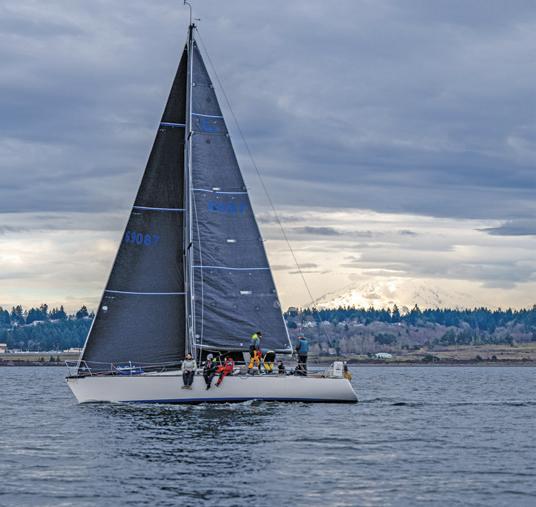
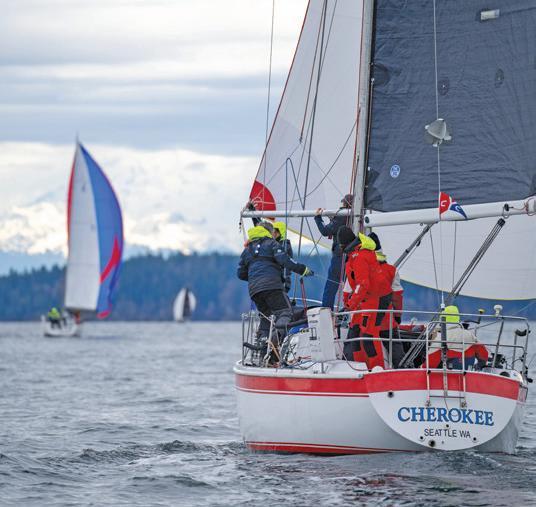
48º NORTH 47 MARCH 2024
The fleet beats up Budd Inlet looking for breeze, current relief, or both.
Olson 40 String Theory came second overall for the day, extending their lead in the overall series scoring.
Cherokee gets rolling after a jibe, on the way to second in class for the day.
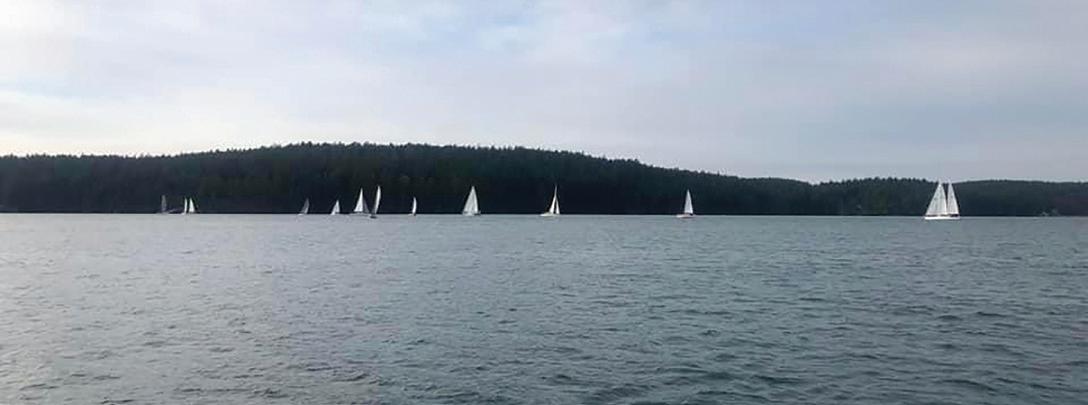 by Stephanie Campbell
by Stephanie Campbell
BETTER THAN EXPECTED, AS ALWAYS
SHAW ISLAND WINTER CLASSIC
The Orcas Island Yacht Club’s Shaw Island Winter Classic is the first race of the season in the North Sound, and it’s a good reason to get your winter boat projects finished early. This year’s Winter Shaw, as it’s affectionately known, was sailed on Saturday February 10, and although the forecast was not terrific, it wasn’t terrible either. The thing about Winter Shaw is that it’ll always be better sailing weather than you predicted. You may not have high hopes for February racing, but maybe you should.
Winter Shaw begins and ends in Cayou Channel (formerly named Harney Channel) in front of the Orcas Hotel. In fact, the flag on the hotel’s balcony marks
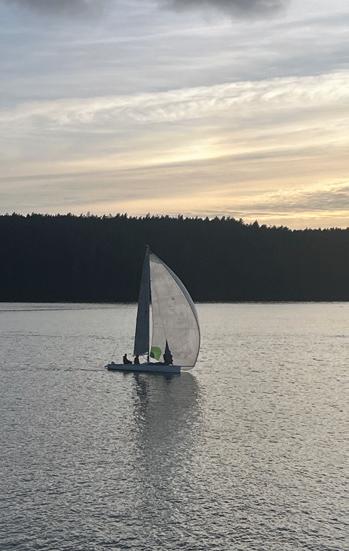
the pin end of the start/finish line. From there, it’s a clockwise circumnavigation of Shaw Island, which is just south of Orcas.
For those of us visiting Orcas for the race, there are always good Orcas Island sailors to learn some new tricks from, and even kind souls to take in your derelict crew for a night or two. They may even let you set up camp in the living room and will probably feed you breakfast in the morning—thanks, Ken!
During any Winter Shaw, odds are high that you’ll get parked about threequarters of the way through. You’ll then make at least one regrettable tack and get passed by someone as you round the far corner of Shaw Island. And chances
are, you’ll also make a few good calls and get them back! Wasp Pass is a wily one, and it’s a big part of doing the race.
This year, 14 boats competed in the Winter Shaw ranging from several 22.5-foot J/70s to the gorgeous 49foot schooner, Sir Isaac. The big tidal exchanges were taking place at night, meaning a mellower day for currents, and a building breeze was predicted over the weekend.
There was a brisk 5-knot breeze for the start, along with a good half-knot current push. It was a pretty clean start for a line that stretches all the way across the channel. The breeze and current were mostly in the middle as we began our trip around the island heading east.
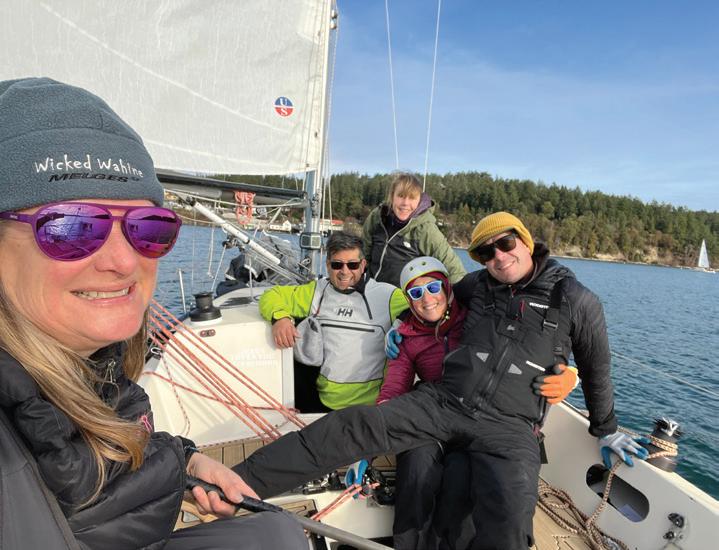
48º NORTH 48 MARCH 2024
Wylie 24, Tanuki, on their way to the overall win. Photo by Julia Soes.
Photo by Julia Soes.
The author and crew aboard Wild Rumpus for Winter Shaw 2024.
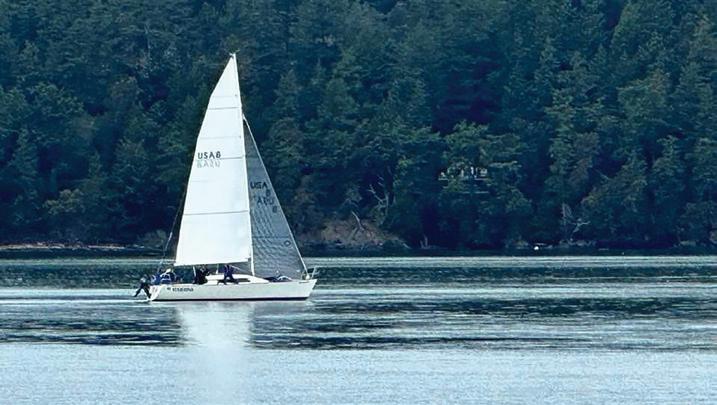
Aboard the Santa Cruz 27 Wild Rumpus, we swapped tacks on our way up Cayou Channel in a true upwind easterly. It made sense to take the middle, except when avoiding two ferries that came through passing us and each other while we were going up the channel. Some boats made gains on each of the shores, but mostly it was the Shaw side that paid off.
As we turned the corner to head south through Upright Channel, the wind backed off and we were able to crack off a bit and eventually hoist kites. The
game here was to keep the boat moving rather than pointing at the next corner. Sailing hot angles helped, and maybe we were copying the two lead boats that naturally sail those angles. Taking a jibe towards the Shaw Island shore provided some unexpected magic for Rumpus
Passing the south end of Shaw, the faster boats had an easier time getting away to the next breeze, and there was definitely more money in sailing in breeze than trying to stay on the correct side of a tide line in San Juan Channel.
Nearing the end of the race, and the
foretold location of frequent park-ups, Wasp Pass provided its usual test of wits. It’s fun to catch up to boats who had escaped earlier in the race, but you can’t help knowing that the sailors behind you are thinking the same thing about you. With so many little bays, and the wind changing direction at every turn, you just took your turn moving forward and hoped that the breeze would be kind and let you be the boat with a turn of speed in that decisive final moment.
In the end, Miles Johannessen came out on top with his new super-mod X-Wylie 24 Tanuki. It will be fun to watch this new boat and see how it goes in a real breeze. Finishing first and correcting shortly behind was Nige Oswald and his all-star crew on the F-25c trimaran, Makika. Aboard Wild Rumpus, we hovered around the J/70s all day, and managed to come in third for the day, just edging out Chris Wolfe on her J/70 Mossy who was the top finishing shorthanded boat.
Thank you Orcas Island Yacht Club for another weekend of early season good times!
For the full race results, visit www.oiyc.org






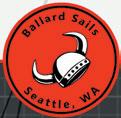
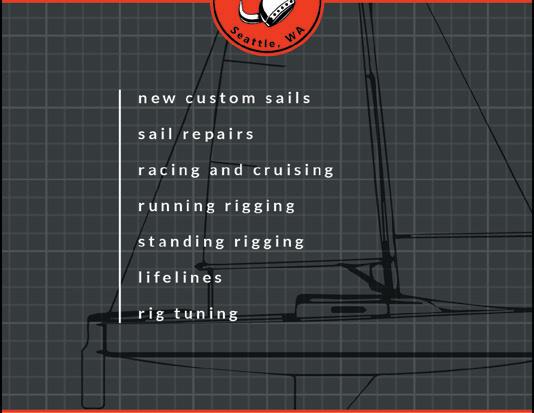

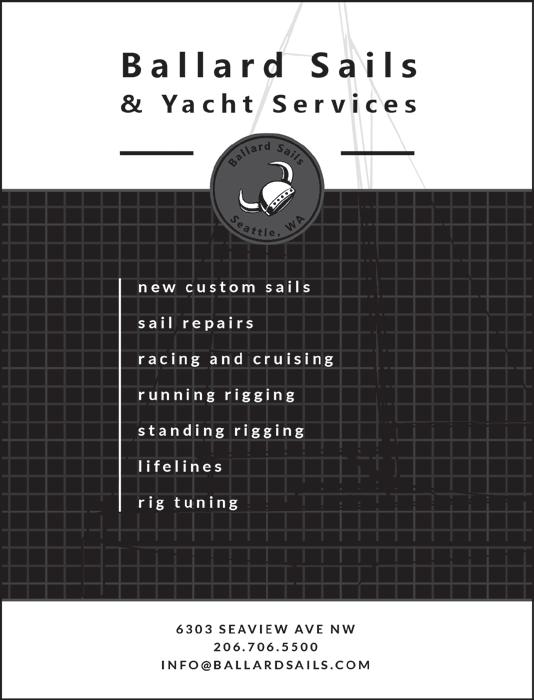
48º NORTH 49 MARCH 2024
Southern Straits Race For more information visit: www.southernstraits.ca 604-921-7575 March 29-31, 2024
the 54th Annual
West Vancouver Yacht Club
presents
Dash 34, Pulelehua, navigates Wasp Passage.
Photo by Thomas Bridge.
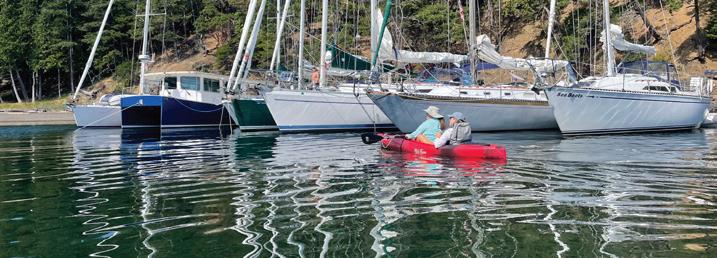
BOATS FOR SALE BOATS FOR SALE
$15,000
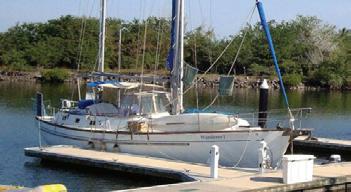
46.5' MORGAN 462 (1981)
Owned since 2011. Solid Cruiser. Comfortable boat that will make a great live aboard. Located in Marina Fonatur, San Blas, Nayarit, Mexico. Ten-hour day sail South to Puerto Vallarta. Overnight sail North to Mazatlan. New stainless steel port lights. Reconditioned hatches. New instruments. Reconditioned engine. More Pictures: https://bit.ly/morgan462 » Contact Steve Koole • koolekat1958@hotmail.com
• $15,000
$35,000
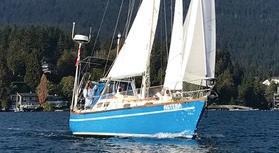
ASTERA, VANCOUVER 27
Designed for off-shore, ASTERA has been extensively updated with new power, electronics, tanks, refrigeration, etc. Built by Seair in 1983 in North Vancouver, she was sailed in the Pacific North West for five years then put on the hard under cover for refit. She was re-launched in 2020. See Craig’s List for further details. » Contact Martin • (604) 813-9519 • martin_suo@hotmail.com • $35,000
$189,000
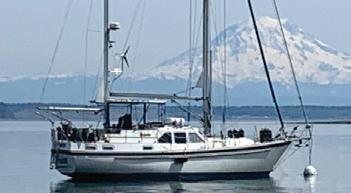
Just returned from six months cruising Desolation Sound and the waters of British Columbia, “Grace” is the much sought after Sparkman & Stephens designed Nauticat 43 ketch, built in 1985 and extensively refitted for safe and comfortable off grid living, full time cruising anywhere in the world. For more pics and details: www.nauticat43.com
» Contact James King • (206) 309-6148
• jjking40@gmail.com
• $189,000

46' GRAHAM RADFORD PILOT HOUSE SLOOP
Graham Radford 14 m, Pilot House (Design #47 Bradfordyacht.com) Proven blue water cruiser completing transpacific crossing from Alaska to New Zealand and back. Comfortable live aboard. Efficient hull under sail/power, cruising 8 knots 1.25gph. Professionally built USCG registered vessel. Recently replaced 76 hp Yanmar, Furuno electronics, & interior upholstery.
» Contact Lindy Jones • lcmrjones@gmail.com
• $340,000
$4,999
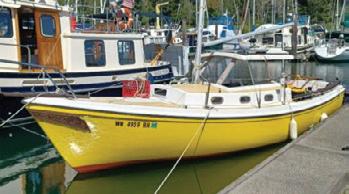
Very attractive. Jaunty and sassy looking. Constant admiration at the dock. Swing keel. Pop top giving massive headroom. Most capacious of most any boat of 2000# bare. Very good galvanized. roller trailer (one issue). Excellent cushions.
» Contact Richard Dodge • (206) 954-7208
• dodgerichard027@gmail.com
• $4,999

BEAUTIFUL 2008 BENETEAU OCEANIS 40 FOR SALE
Beautiful 2008 Beneteau 40 owners addition. Second owner with many recent upgrades, vessel is in excellent condition with too many extras to name. New Balmar 170 amp alternator with regulator and new wiring. New organic latex mattress with bamboo topper. New 12-inch Raymarine Axiom GPS. Send and Receive AIS, Radar, teak in excellent condition. Ready to take you anywhere. Located in Bellingham WA
» Contact Donald Goldberg • (541) 621-3797
• donbgoldberg@gmail.com • $189,500
BOATS FOR SALE

EL TORO
Perfect condition. Built in 2001 by Smith Boat Shop on Samish Island, Washington. Sailed three time and sit in the garage.
» Contact Frank Lawley • (206) 856-6110
• fblawley@gmail.com • $2,500

33 FOOT C &
Well equipped C&C 33 foot MK11 with trailer. Minor repairs needed. Worth $35,000, asking $25,000. Will consider reasonable offers. » Contact Jan Martin • (406) 459-3339 • jomvallymt@gmail.com • $25,000
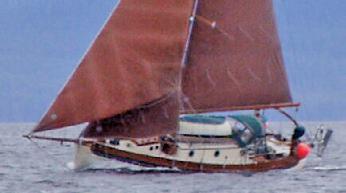
28' BRISTOL CHANNEL CUTTER
Built 1986 by the Sam Morse Co. Volvo D1-30 28hp
low hours. Diesel bulkhead heater, Monitor windvane, 3 burner Force 10 propane stove with oven and broiler. Jib, staysail, mainsail, drifter, storm jib, storm trysail. Located Sitka, AK. Details at bristolchannelcutterforsale.com
» Contact John Herchenrider • (907) 752-5033 • johnherch@gmail.com • $69,000
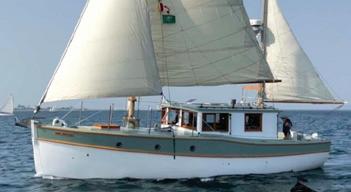
Roomy family fun, high efficiency, seakindly. AK vet. Sleeps 6. Salon w/fireplace. Good 4 liveaboard. 5 rooms. EZ maintained woody/snap on covers. All bronze fastened. NWSWB. New 12" Garmin, digital radar, depth. Fishfinder, Autopilot, AIS, Cell extend, VHF’s. 2 helms. 6.75 kt cruising, 48+hp diesel. Furling jib. MaxProp. Solar. Rocna. Achilles. Refer, Frzr, Dickinson & summer stoves. Oly slip $350. www.decarbthepassage.net
» Contact Peter Wilcox • (503) 490-5407
• Peter@decarbthepassage.com • $279,500
48º NORTH 50 MARCH 2024
VENTURE OF NEWPORT 23
2008 36' GAFF KETCH MOTORSAILER
$279,500
NAUTICAT 43 CUTTER/KETCH PILOTHOUSE MOTORSAILOR
$189,500
$2,500
$340,000
C
$25,000
$69,000
CLASSIFIEDS
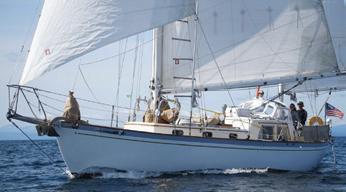
CUSTOM 43’ EDSON SCHOCK KETCH (1973)
Professionally built of mahogany planking over oak frames, Debonair has been lovingly maintained. Extensive upgrades include new electrical and 75hp Yanmar. Consistently turning heads, Debonair is a seaworthy passage-maker, recently completing a 16,000nm tour of the South and North Pacific. From rig to sails, systems to safety, Debonair is voyage-ready. Details: porttownsendboatco.com or www.yachtworld.com/yacht/1973-custom-edsonschock-43'-ketch-8441971/ » Contact Vance Rucker • ketchdebonair@gmail.com • $79,500
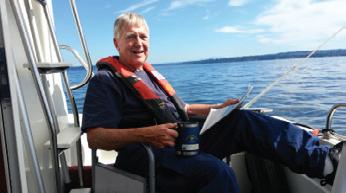
BOATING EDUCATION CLASSES 2024 WITH THE USCG AUXILIARY
Boating Skills and Seamanship classes start March 12, 2024. Classroom instruction in Shoreline, WA. Instruction presented by experienced Puget Sound boaters. Instruction is free as a member of the USCG Auxiliary! Membership is subject to approval. Search USCG AUXILIARY or send email
» Contact Kevin Coulombe - Flotilla Staff Officer, Public Education • (425) 534-1803 • cgaux130fl12@outlook.com • $25

Great location for access to San Juans and Gulf Islands at Semiahmoo Marina a best class marina. Slip C-18 is close to main dock and bathhouse with bow in starboard tie and allows 46’ maximum overall with 14.3’ beam. More info at: https://semiahmoomarina.com/ classifieds/c-18-44-is-fresh-on-the-market-115000/
» Contact John Cavanaugh • (360) 672-2760
• johncavanaugh@boatsafloat2.com • $115,000
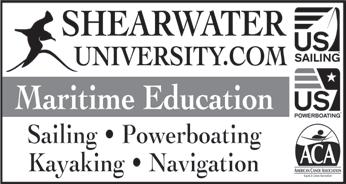



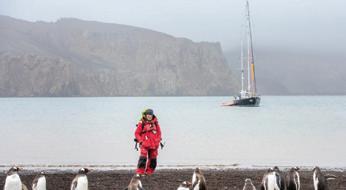



48º NORTH 51 MARCH 2024
BOATS FOR SALE
For even more photos and listings check out 48north.com/classifieds EXCURSIONS
THE END OF THE WORLD Explore the Land of Fire and Antarctic with Pacific NW Sailing! Join our 2024-2025 sailing expeditions on ice-class
Chile Patagonia
(12
Patagonia Fiords (12
days)
available
detailed information,
info@PNWSail.co
$3,200 INSTRUCTION Basic through Advanced Sailing Lessons Week-long Cruise & Learn lessons Spinnaker, Intro and Advance Racing Classes Gill foulweather gear & Dubarry footwear 206-782-5100 www.seattlesailing.com info@seattlesailing.com 7001 Seaview Ave NW Suite 130 (Shilshole Bay Marina in Port of Seattle Building) MOORAGE LIBERTY BAY MARINA 40’ – 48’ – 60’ slips. Great location in Poulsbo, WA Restrooms, Showers. Call the Marina Manager for availability and waitlist options: 360-779-7762 American Sailing Association courses Basic Keelboat 101 through Advanced Coastal 206 Based in Beautiful Anacortes, WA www.sailtime.com/anacortes/sailing-school info@seattleyachts.com 360-299-0777 VESSEL MOVING No ocean too big, no trip too small, no ship too large, no mast too tall, sail or power, we move them all!!! When you are ready, give us a call. Professional service since 1967. CappyTom@aol.com • (206) 390- 1596 PROFESSIONAL SERVICES Full service rig shop serving Puget Sound www.evergreenrigging.com Cliff Hennen (360) 207-5016 • (206) 718-5582 The Systems Specialists www.emharbor.com Please contact us to arrange a visit: 206-285-3632 E-mail: info@emharbor.com Electronics E-mail: larry@emharbor.com Based at Elliott Bay Marina MARINE EQUIPMENT
$79,500
BEYOND
sailboats:
Fiords
days), Cape Horn and
days), Antarctic (16-21
. ASA sailing courses
during expeditions. For
txt or email at
» Contact Vladimir Chepurnoi (Captain, ASA Instructor) • vlad@pnwsail.com • $3,200
$25
44 FOOT SLIP FOR SALE SEMIAHMOO MARINA
509.928.1964 Asymetrical drifters & spinnakers Classic Sails (Gaff, Sprit & Lugs) Performance furling & G-SpinnTM Sails Light Air Sails we design & make custom sails in washington state! YAGERSAILS.COM FLYINGSAILS.NET NW Sail and Canvas Makers YAGER SAILS & CANVAS

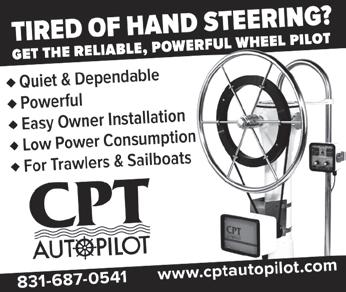

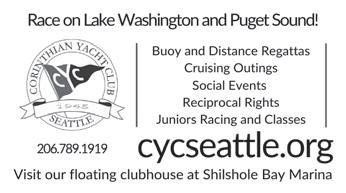


48º NORTH 52 MARCH 2024 CROSSWORD SOLUTION CLUBS PLEASE SUPPORT THE ADVERTISERS WHO BRING YOU 48° NORTH Anacortes Chamber of Commerce 15 Anacortes Race Week ..................................9 Artful Sailor ................................................ 23 Aspen ........................................................... 11 Ballard Sails & Yacht Repair ................... 49 Beta Marine West 10 Boat US 8 Cape George Marine Works 19 CSR Marine 27 Drivelines NW 17 Fisheries Supply ...........................................4 Gig Harbor Boat Works ............................ 19 Goldstar Marine ......................................... 23 Iverson's Design ........................................ 19 J Fest 45 Marine Servicenter 56 Northwest Maritime Center 17, 23, 53 Northwest Rigging 19 Oaksmith Yachts 17, 27 Port of Port Townsend 12 PTR Rigging ................................................ 15 Sail Northwest ..............................................2 Sailrite ............................................................7 San Juan Sailing ........................................ 23 Seattle Sailing Club 3 Seventh Wave Marine 15 Signature Yachts 55 Swiftsure Yachts 54 Ullman Sails 23 Waterline Boats ......................................... 53 WVYC Southern Straits ............................ 49 Yachtfinders/ Windseekers..................... 53 MARINE EQUIPMENT Basic through Advanced Sailing Lessons Week-long Cruise & Learn lessons Spinnaker, Intro and Advance Racing Classes Gill foulweather gear & Dubarry footwear 206-782-5100 www.seattlesailing.com info@seattlesailing.com 7001 Seaview Ave NW Suite 130 (Shilshole Bay Marina in Port of Seattle Building) Fractional Membership makes boating affordable & easy! Your boat is ready when you are! https://sailtime.com/location/anacortes info@seattleyachts.com 360-299-0777

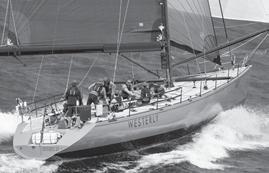

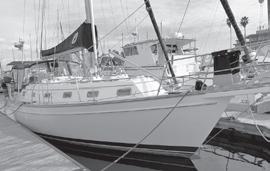
70’ SANTA CRUZ 70 ’87
.................... $379,000 “WESTERLY” Completely updated with no expense spared.An excellent opportunity to obtain a very up-to-date SC 70 and get sailing now.
55’ ROBERTS 55 ’97
.................... $169,000
“KOOK” Proven to be strong enough for the most demanding conditions.She can undoubtedly take you to the anchorages of your choosing.
40’ ISLAND PACKET 40 ’97
.................... $179,500
“PARADISEA” Remarkable attention to detail. She is wellprepared for extended cruising with an extensive list of spares. Truly a must see!


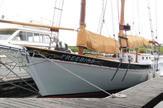
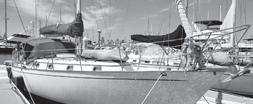
44’ KELLY PETERSON KP44 ’79 $74,500 “KAREN B” Clean, well-maintained cruising classic with handsome lines from renowned naval architect Doug Peterson.

40’ SANTA CRUZ SC40 ’84 $59,000 “KOKOPELLI”An exceptional racer cruiser with many updates and improvements. Some Santa Cruz slip time possible
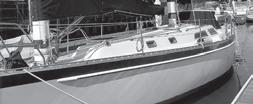
39’
“ENTROPHY”Free-standing cat ketch rig and carbon fiber spars. Sturdy, lightweight hull for great performance.



36’ CHEOY LEE LUDERS 36 ’70 $29,500 “WESTWIND” Repowered with a new Beta engine in 2008. Love the look of a classic design? This one is for you.

34’ SCHOCK 34 PC ’89 $39,500 “SUNRISE”Amazing racer/cruiser. Easy to single/double hand. You can race or take the family on short cruises.
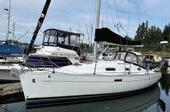


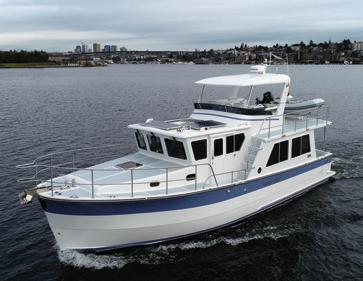
48º NORTH 53 MARCH 2024 46 - 43E - 43S - 38E - 38S Helmsman trawlers ® WATERLINEBOATS.COM | 206.282.0110 - SEATTLE | 425.278.9846 - EVERETT | 564.218.5201 - PORT TOWNSEND 1983 MURRAY PETERSON 41 2000 BENETEAU 31 2017 HELMSMAN TRAWLERS 31 2006 GLACIER BAY 2670 helmsmantrawlers.com | 206 282 0110 WLB Brokerage - boatshed seattle . boatshed tacoma boatshed everett boatshed porttownsend WATERLINE BOATS WLB homeport for helmsman trawlers View our entire inventory of boats for sale at waterlineboats.com “Look how beautifully built this is”. ”It is so well thought-out”. “I love the real wood”. “The pilothouse works as a separate living area”. “The flybridge is big!” Heard on the docks — from people who’ve toured a Helmsman Trawlers® 43E Pilothouse: Helmsman Trawlers are built to exceptional standards – examine and compare! NORTHWEST MARITIME CENTER 431 Water Street Port Townsend, WA 98368 Breathtaking setting, spectacular day! Ceremonies Receptions Rehearsals Contact us today venuerentals@nwmaritime.org THINKING OF SELLING YOUR BOAT? LET US HELP! Power or Sail, we have buyers waiting! Call: 619.224.2349 or email: info@yachtfinders.biz A Leader in Brokerage Sales on the West Coast (619) 224-2349 • Fax (619) 224-4692 • 2330 Shelter Island Dr. #207 San Diego, CA 92106 www.yachtfinders.biz • info@yachtfinders.biz Professionally staffed! Open 6 days, Sun by appt.
FREEDOM 39 ’85 $40,000
NEWLISTING ENSENADA
SIDNEY,BC SANTACRUZ
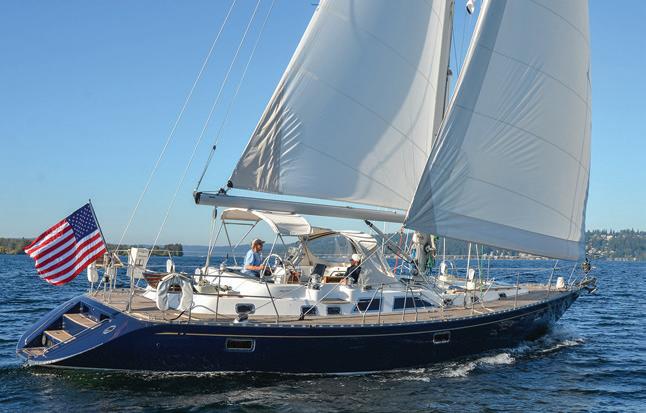

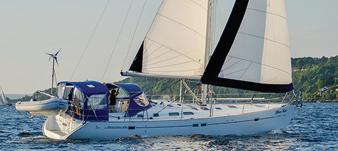
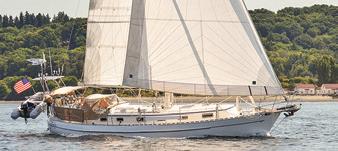
42
41
40
39
47
45
44
44
44
43
43
27
The Hylas 49 enjoys some of the finest lineage on the water with Sparkman and Stephens responsible for the design and Hylas for the construction. From a sailing standpoint, the moderate lines, powerful masthead rig and modest draft make this an excellent offshore option and practical in an anchorage. Below decks, elegant joinery and thoughtful touches have made the Hylas a cruising favorite. Ad Astra, hull number 34, has had only two owners. She was delivered to the Pacific Northwest in 2001 and has enjoyed light use in the protected waters of Washington and British Columbia. Since her purchase by her present owners in 2022, a refit was undertaken to prepare her for extended cruising. A new enclosure for the cockpit was built by local craftsman Jonathan Davis, new navigation electronics and a complete Victron Energy LiFePO4 battery system were installed.
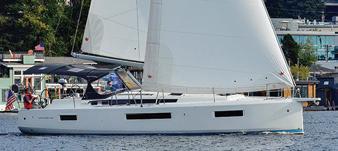



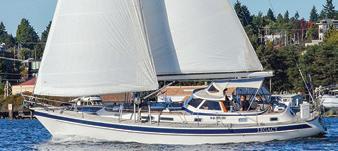
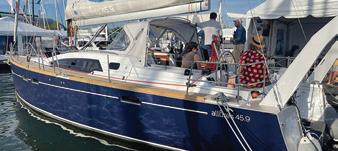
48º NORTH 54 MARCH 2024 QUALITY YACHTS FROM SWIFTSUREYACHTS.COM NEW YACHTS FOR WORLD CRUISING SwiftsureYachts www.swiftsureyachts.com 206.378.1110 | info@swiftsureyachts.com 2540 Westlake Ave. N., Ste. A Seattle, WA 98109 facebook.com/swiftsureyachts Seattle & Pacific Northwest San Francisco Bay Rhode Island With brokers on both west and east coasts, Swiftsure Yachts is dedicated to providing premium service to sailors buying or selling quality yachts. swiftsure locations
• 2005 • $202,000 Valiant 42 • 2008 • $284,000 Allures 45.9 • 2021 • $699,000 Hinckley Sou’wester 59 • 1997 • $524,000
Catalina Morgan 440
• 1999 • $269,000
Hallberg-Rassy 42
• 2003 • $420,000
Hallberg-Rassy 46
• 2005 • $203,000 price reduced price reduced price reduced
Beneteau 473
•
• $399,000
Tayana 48
2005
•
• $429,000 70 Wylie 1993 $279,000 56 Coastal Craft 2012$1,750,000
Santa Cruz 2001 $399,000
Bavaria 2003 $189,000
OceanAlexanderAltus 2003 $429,000
Perry PH 1995 $289,000
Saga 2003 $315,000
Jeanneau 440
2020
52
49
48
48
48
Catana 471 2001 $449,000
Freedom 1989 $154,000
Lyman Morse 1982 Inquire
Elan 45.1 2021 €265,000
Gib’Sea 126 1986 $89,000
Shannon 1995 $195,000
Irwin 1987 $150,000
Catalina 42 (MKII) 2007 $189,000
42
Astra 2000 Hylas 49 $475,000
Ad
Valiant 2008$289,000
Sceptre 1989 $149,000
Wauquiez Centurion 1991 $119,500
Valiant 1997 $169,000
Catalina 1998 $109,000
Sabre 362 1986 $135,000
Catalina 350 2003 Inquire
Hunter 35.5 1995 $42,500
Duffy 1998 $185,000
Jeanneau 34.2 2001 $79,000
Alerion Express 2000 $62,500
Cutwater 2013 $149,000
38
36
35
35
35
34
28
28
Ranger Tug 2018 $169,000
Ranger Tug 2017 $107,900
23

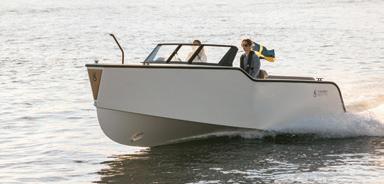
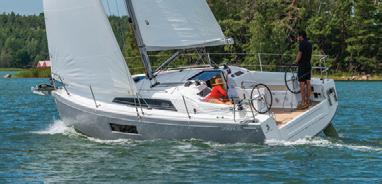
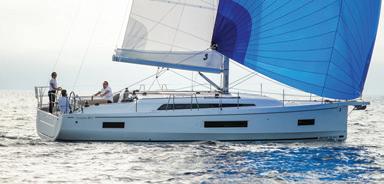
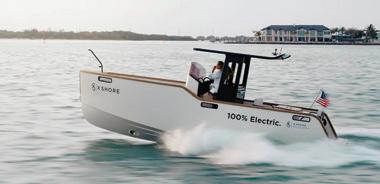
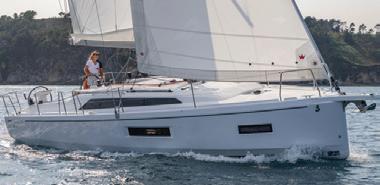
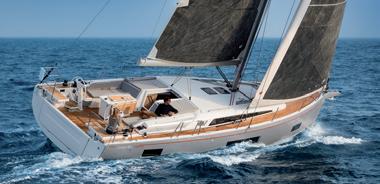


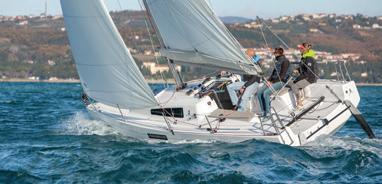
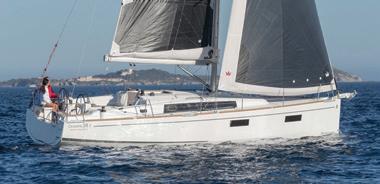
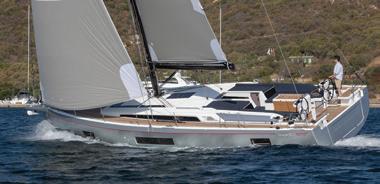
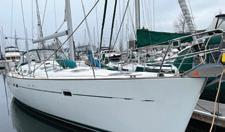
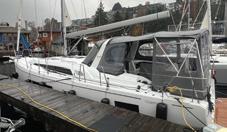
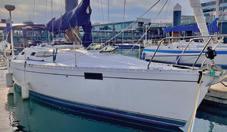
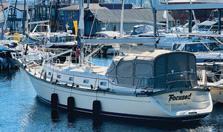
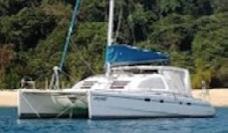

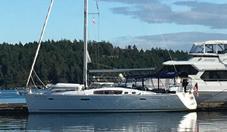

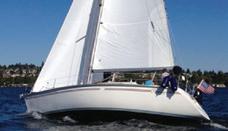
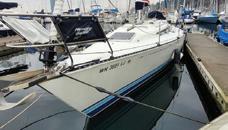
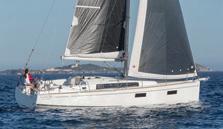
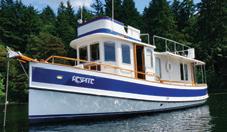
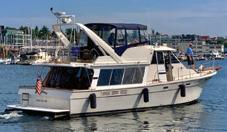
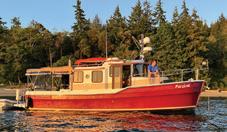

48º NORTH 55 MARCH 2024 Pre-owned Boats 47' Beneteau 473 '01 $199,800 AtOurDocks 38' Globe 38 '83 $114,500 AtOurDocks 40' Beneteau Oceanis 40.1 '23 $415,000 PriceDrop 38' Beneteau Oceanis 38.1 '21.... $299,000 Arriving 37' Hunter Legend 37 '89 $54,500 PriceDrop 42' Leopard 42 Inquire 37' C&C 37/40+ '89 $84,900 Arriving Beneteau Oceanis 30.1 Beneteau Oceanis 37.1 Beneteau Oceanis 46.1 X Shore 1 Beneteau Oceanis 40.1 X Shore Eelex 8000 Beneteau Oceanis 38.1 Beneteau First 27 Beneteau Oceanis 51.1 Arriving WestCoastDebut InStock TwoInStock TwoInStock InStock InStock InStock InStock What's Happening • Boats are Selling FAST! Quality Listings Wanted! Beneteau First 27 SE '23 Arriving Sold Beneteau 34 1 '24 Arriving Sold Beneteau Oceanis 30 1 '23 Arriving Sold Beneteau Oceanis 30 1 '23 Arriving Sold X Shore 1 '24 Arriving Sold Beneteau Oceanis 30 1 '20 Sale Pending Beneteau 381 '99 Sale Pending Sabre 45 '86 Sale Pending Beneteau Oceanis 40 1 '23 SOLD Beneteau 34 '14 SOLD Island Packet 40 '96 SOLD Catalina 36 '84 SOLD 2476 Westlake Ave N. #101, Seattle, WA 98109 • (206) 284-9004 • Open Mon-Sat 10:00am-5:00pm • Sun. by appointment WWW.SIGNATURE-YACHTS.COM 46' Beneteau 46.1 '22 Inquire ByAppointment ByAppointment Beneteau 46 '12 $232,500 AtOurDocks 35' Beneteau 350 '88 $45,000 ByAppointment 45' Bayliner 4588 '86 $115,000 PriceDrop 40' Gozzard Pilgrim 40 '87 $169,900 ByAppointment 25' Chris Craft Corsair 25 '07 $68,500 ByAppointment 31' Ranger Tug R-31 S '13 $219,000 ByAppointment 44' Island Packet 440 '07 $425,000 ByAppointment
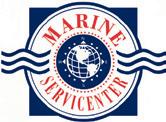

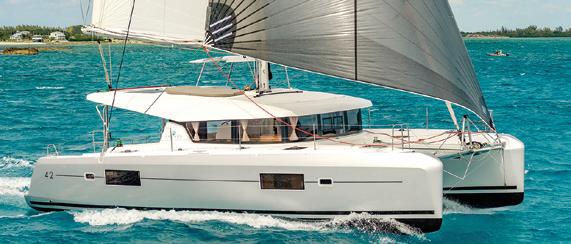



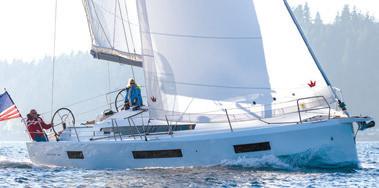


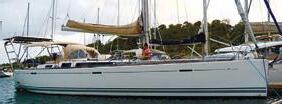
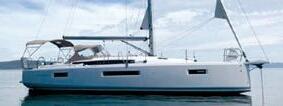

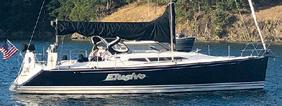


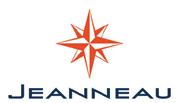


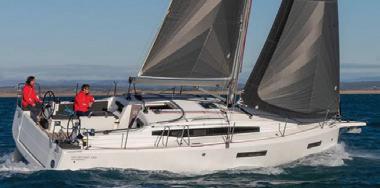

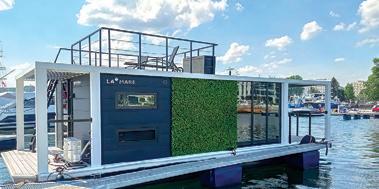




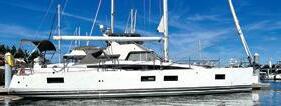
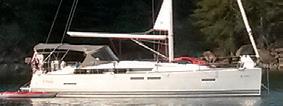


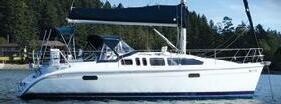


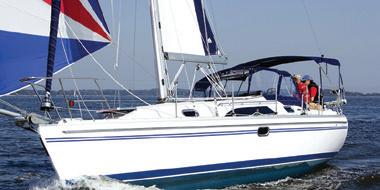


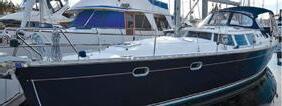
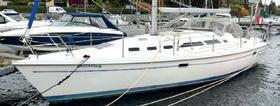











48º NORTH 56 MARCH 2024 MARINE SERVICENTER 2023 Jeanneau 410 #77420: $429,875 • SAVE $41,815 Don Smith Doug Lombard Curt Bagley 2024 Lagoon 42 #835: $789,828 • SAVE $138,379 1988 Bristol Channel Cut. 28 • $97,000 Dealer of the Year ‘23 • ‘22 • ‘21 • ‘20 • ‘19 • ‘16 2024 Jeanneau 380 #77927: $378,535 • SAVE $22,660 2023 Jeanneau 490 #77424: $654,896 • SAVE $44,839 2011 Dufour 525 GL • $385,000 2018 Jeanneau Yacht 51 • $549,500 1996 X-Yachts IMC 38 • $55,000 Reduced Reduced New Listing 2003 Jeanneau 43DS • $179,900 LISTINGS WANTED! • WE GET RESULTS ! See Your Boat in 48° North & Five Online ads! 41' Jeanneau 410 ‘20 SOLD 41' Jeanneau 409 ‘13 Sale Pending 40' Jeanneau 40DS ‘99 Sale Pending 38' Morgan 382 ‘79 $35,000 38' C&C MkIII ‘86 $43,950 37' Jeanneau SO37 ‘01 ............ Sale Pending 36' Catalina 36 ‘94 ............................... SOLD 35’ Catalina 350 ‘03 ............................. SOLD 35' Jeanneau 349 ‘20 .............. Sale Pending 33' Nauticat 33 ‘86 .................. Sale Pending 32' Catalina 320 ‘00 ............................ SOLD 25' Harbor 25 ‘14 ..................... Sale Pending 23' Tofinou 23 ‘94 .............................. $37,000 22' Marshall Catboat 22 '22 ............. $89,900 Dan Krier Jeff Carson John Sheppard Yacht Sales - Since 1977 Just Arrived! In Stock & Sale Priced! 2024 Jeanneau 349 Ltd Ed #77925: $259,990 • SAVE $21,785 Arrives May! In Stock & Sale Priced! In Stock & Sale Priced! 2024 Catalina 355 #182: $356,829 Arrives April! 2006 C&C 115 • $154,900 2001 Bavaria 34 • $67,000 1999 Catalina 380 • $79,500 New Listing LA MARE HOUSEBOATS Seattle Bellingham Los Angeles San Diego 2442 Westlake Ave. N 1801 Roeder Ave. #128 4655 Admiralty Way, #208 955 Harbor Island Dr., #160 206.323.2405 360.770.0180 310.963.3750 619.733.0559 info@marinesc.com • www.marinesc.com 2024 Jeanneau 440 #77930: $549,684 • SAVE $36,709 In Stock & Sale Priced! 1995 Hunter 336 • $48,500 2020 Jeanneau 410 • $359,500 2006 Bavaria 33 • $78,500 New Listing New Listing 2024 LaMare Modern 11 #442: $329,834 • Save $16,492 2014 Jeanneau 409 • $214,500 New Listing































































































 by David Casey
by David Casey



































 by Joe Cline
by Joe Cline

 by Andy Cross
by Andy Cross










 by Jennifer Dalton
by Jennifer Dalton




















 by Peter Stewart
by Peter Stewart




 by Stephanie Campbell
by Stephanie Campbell






















































































































